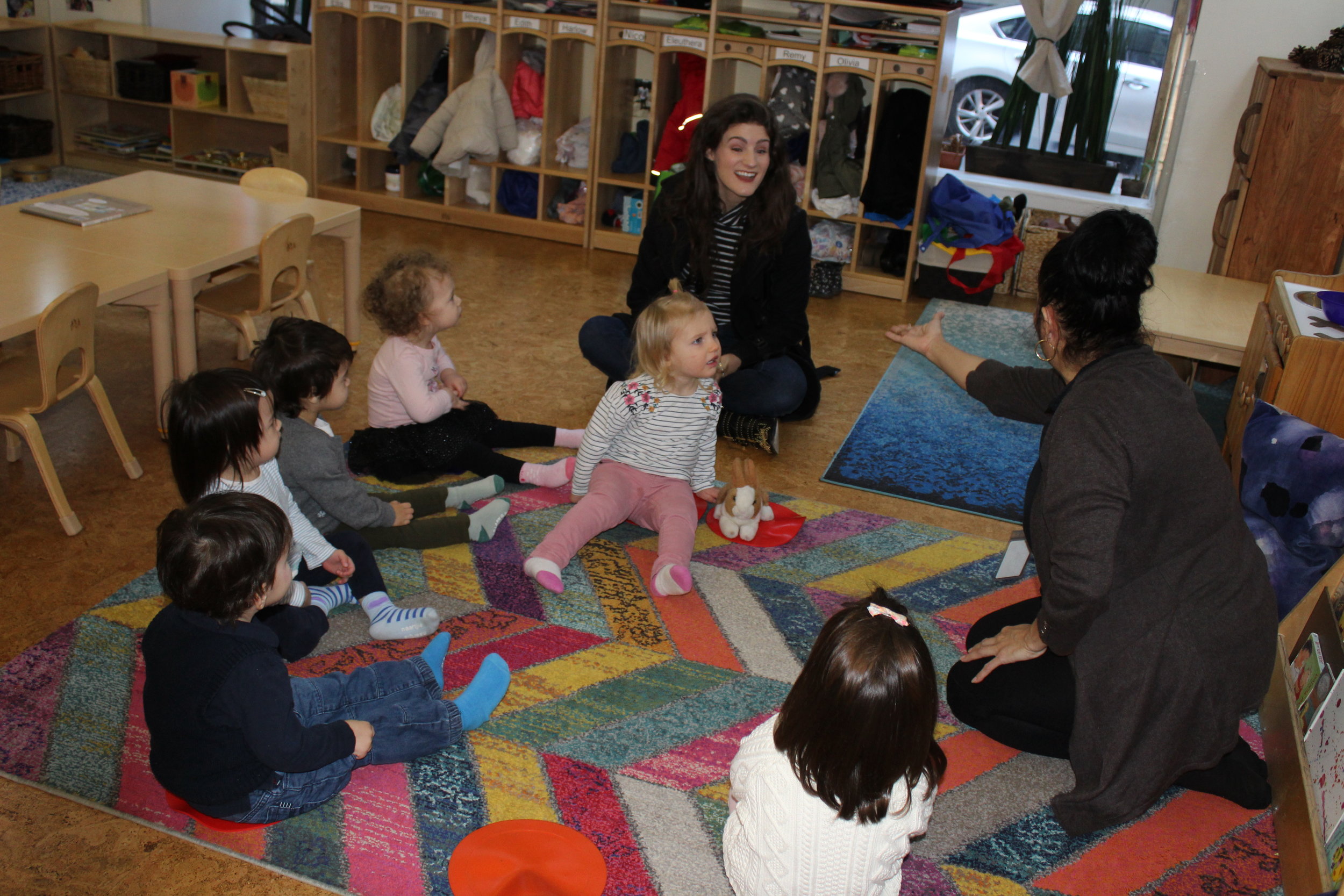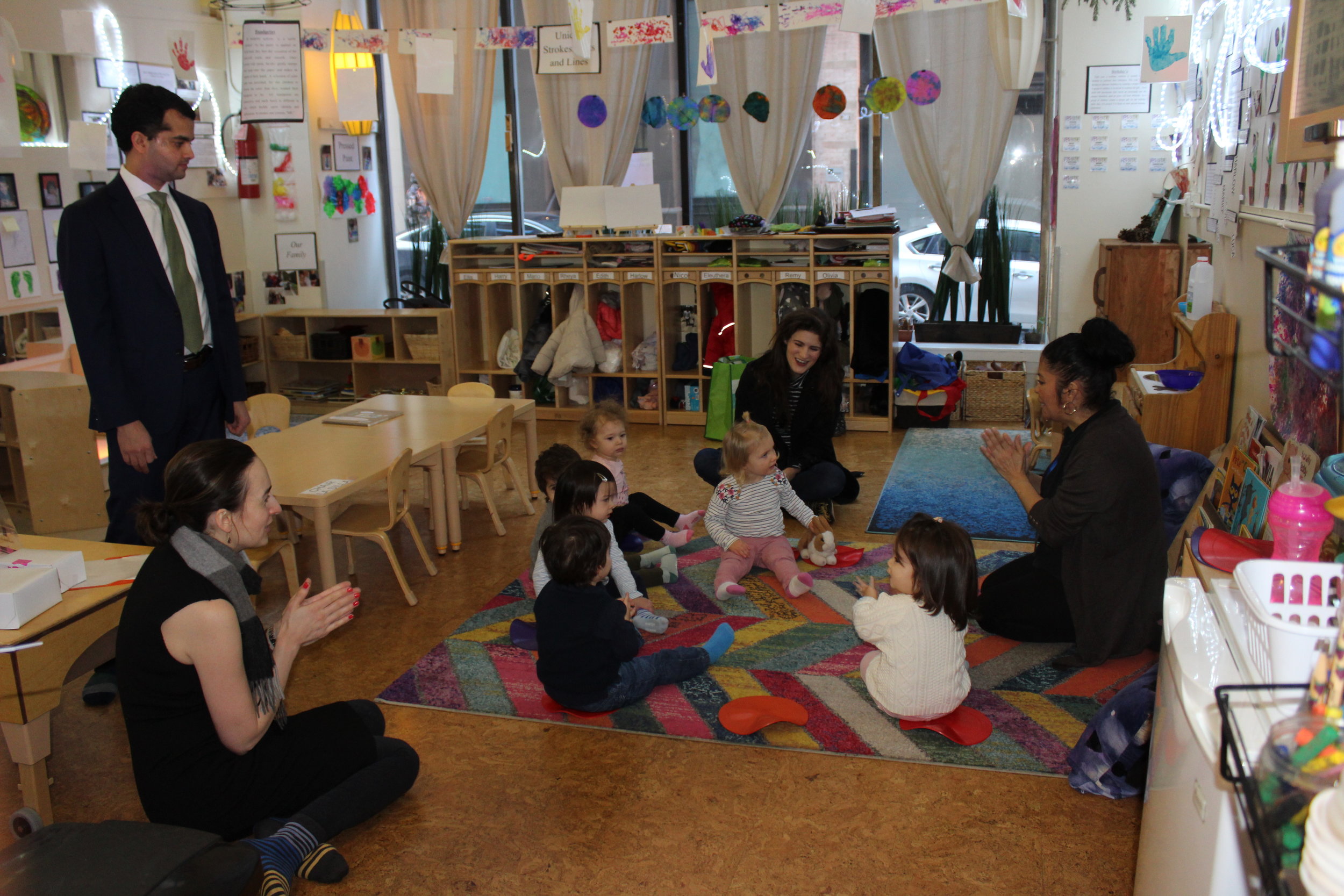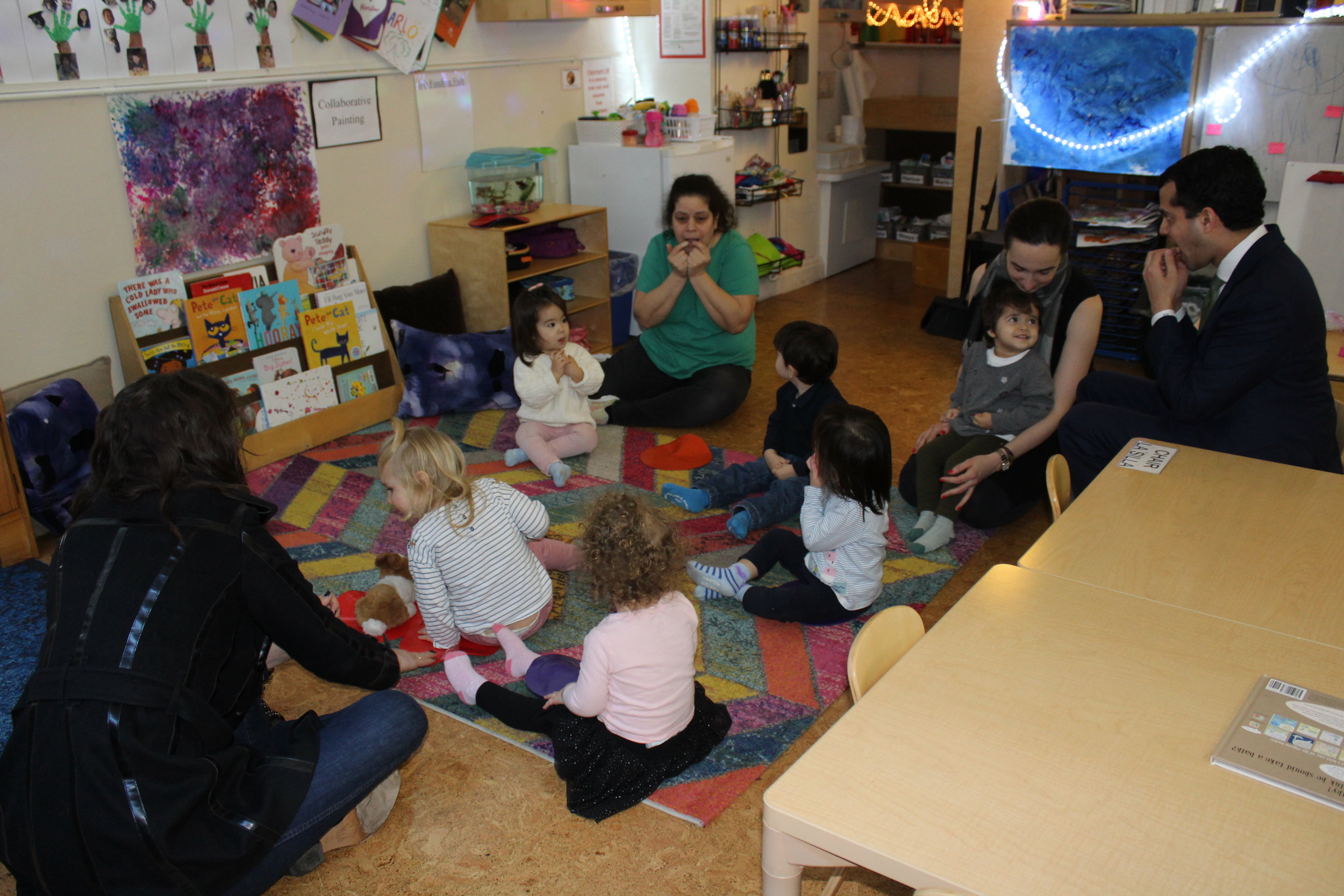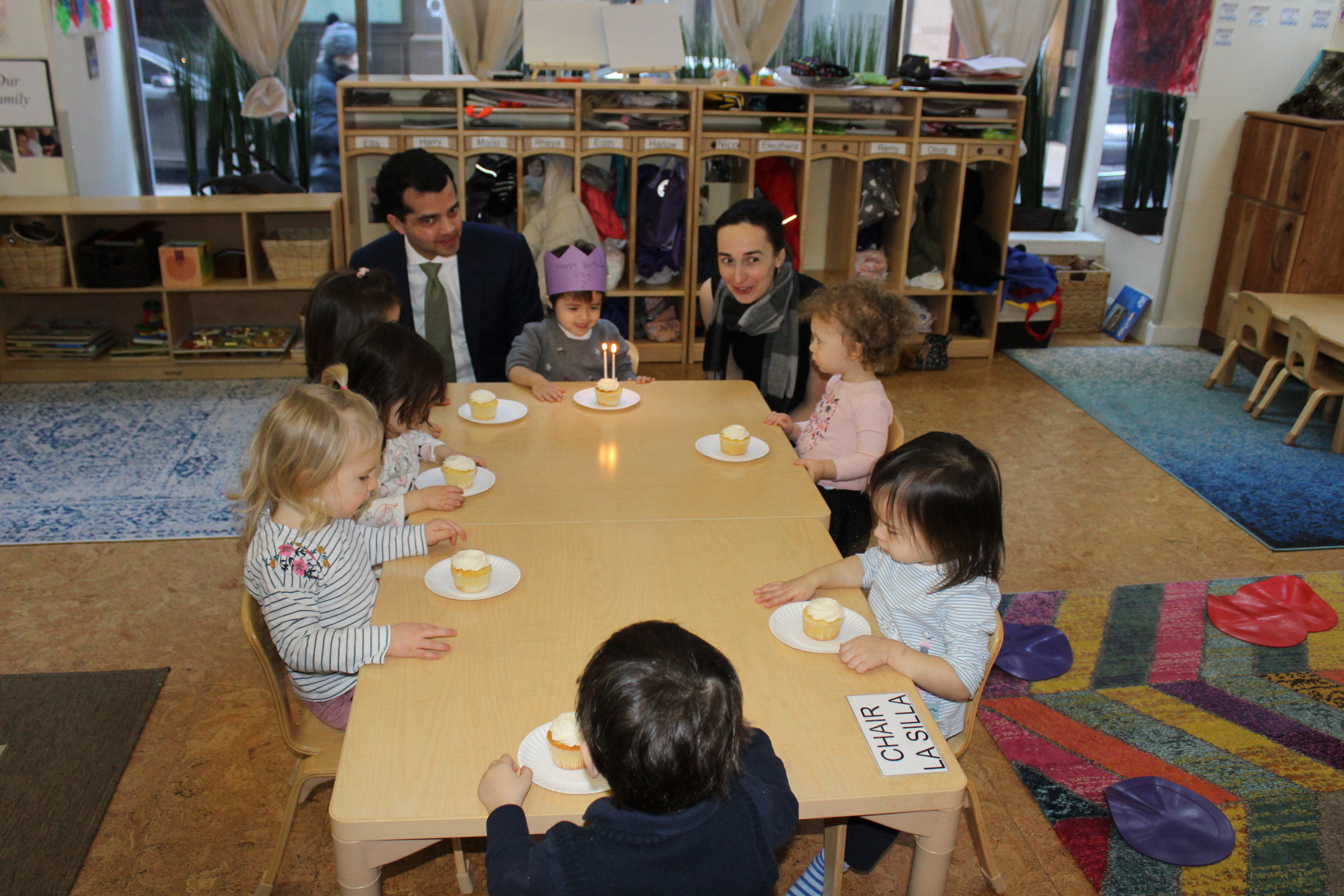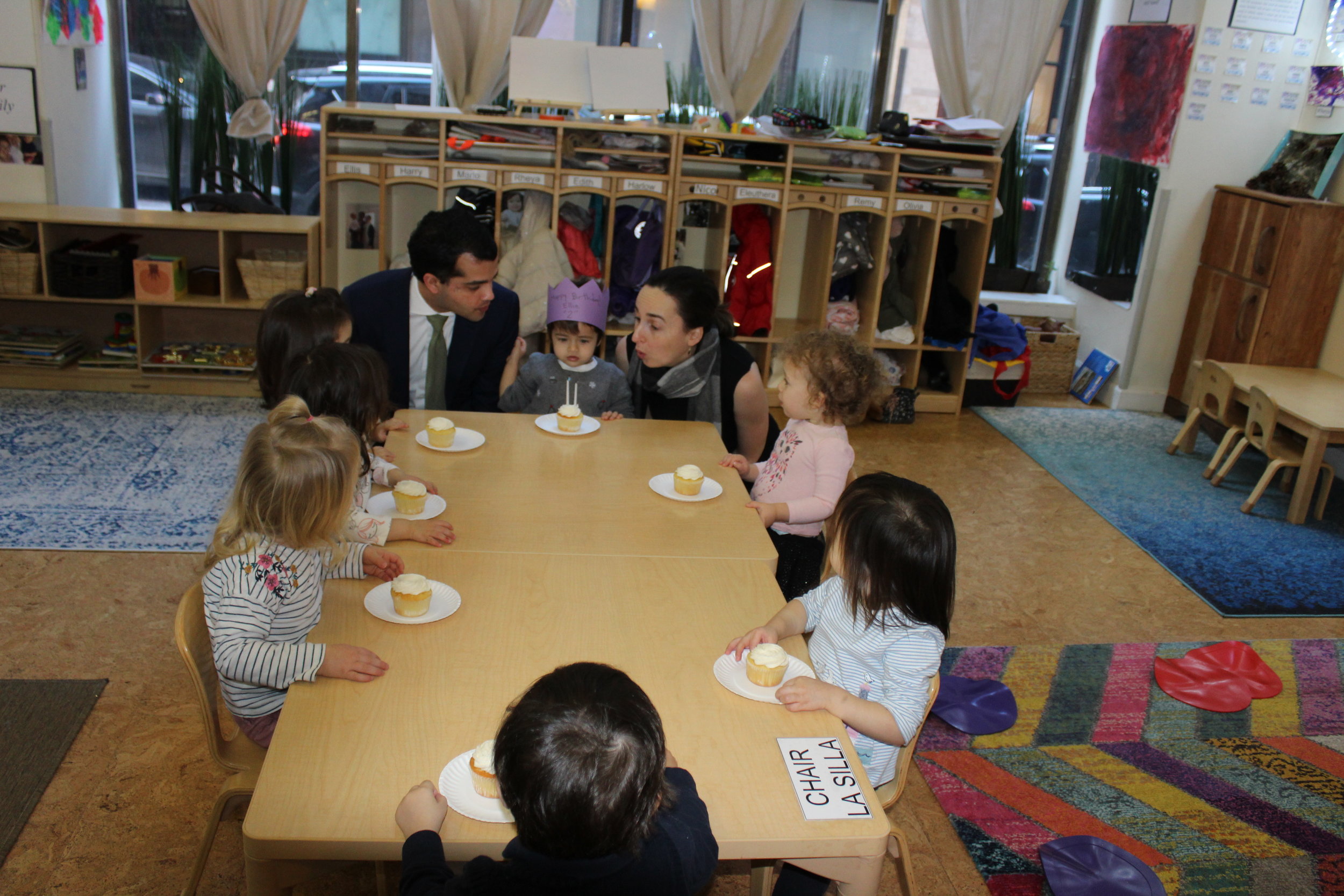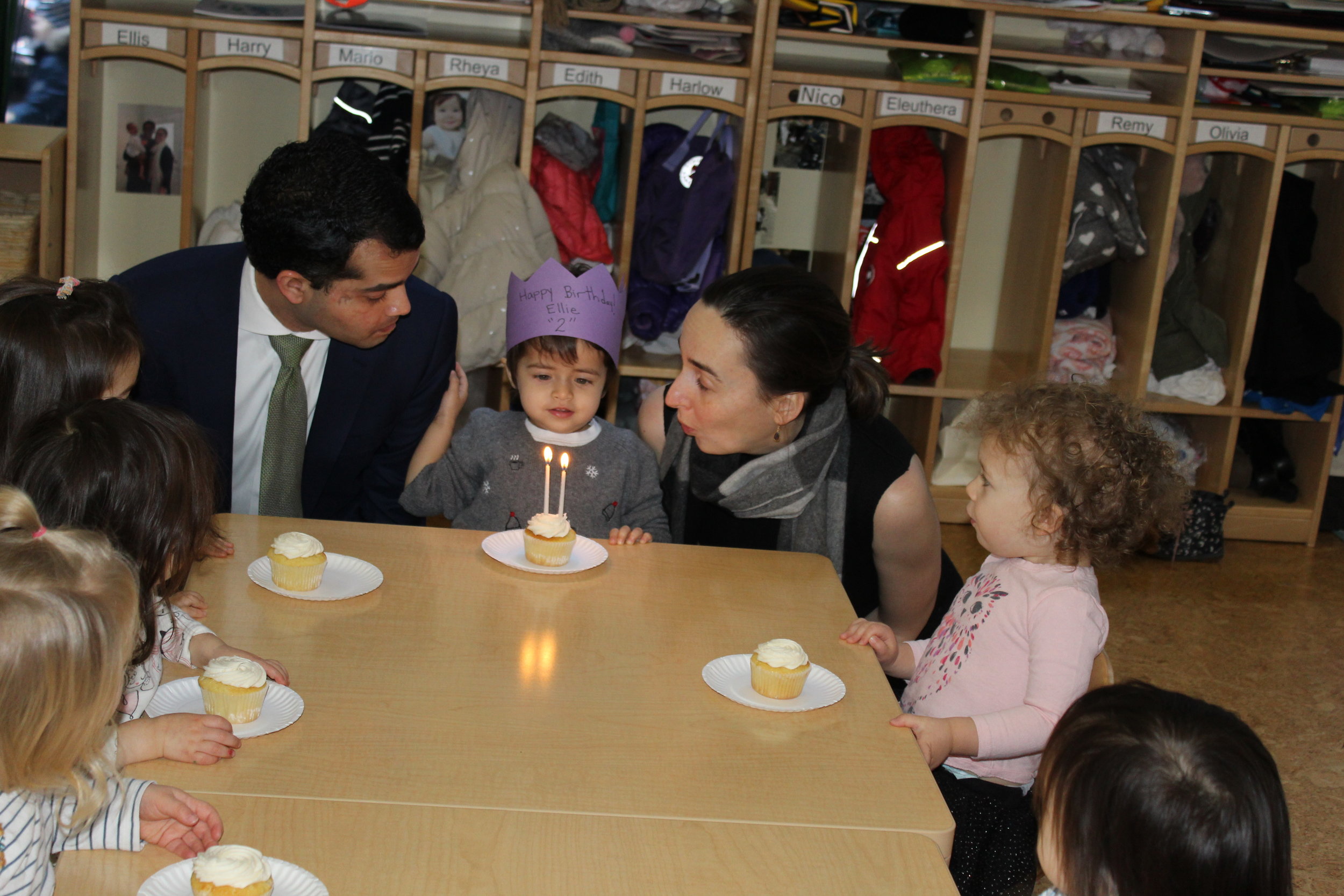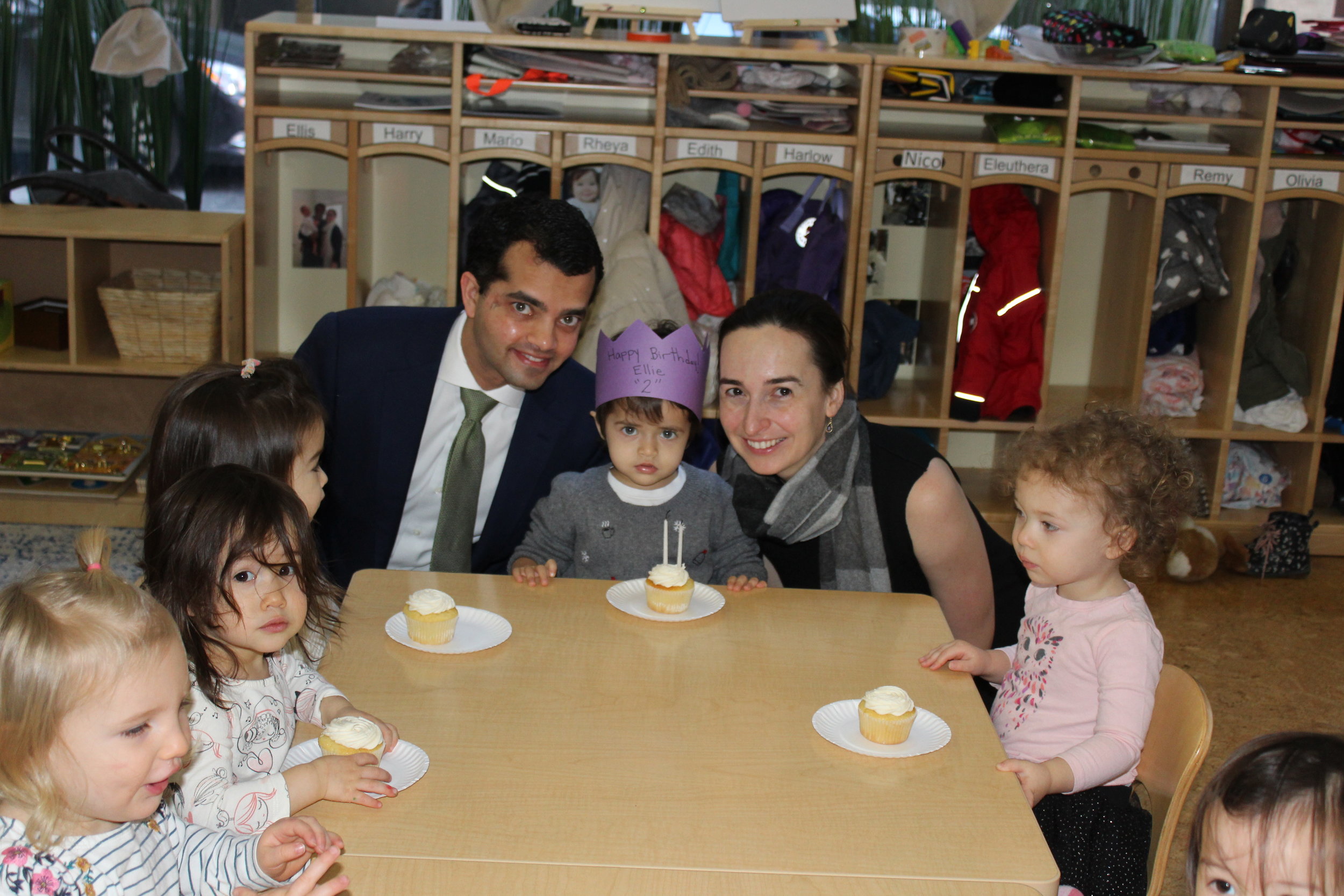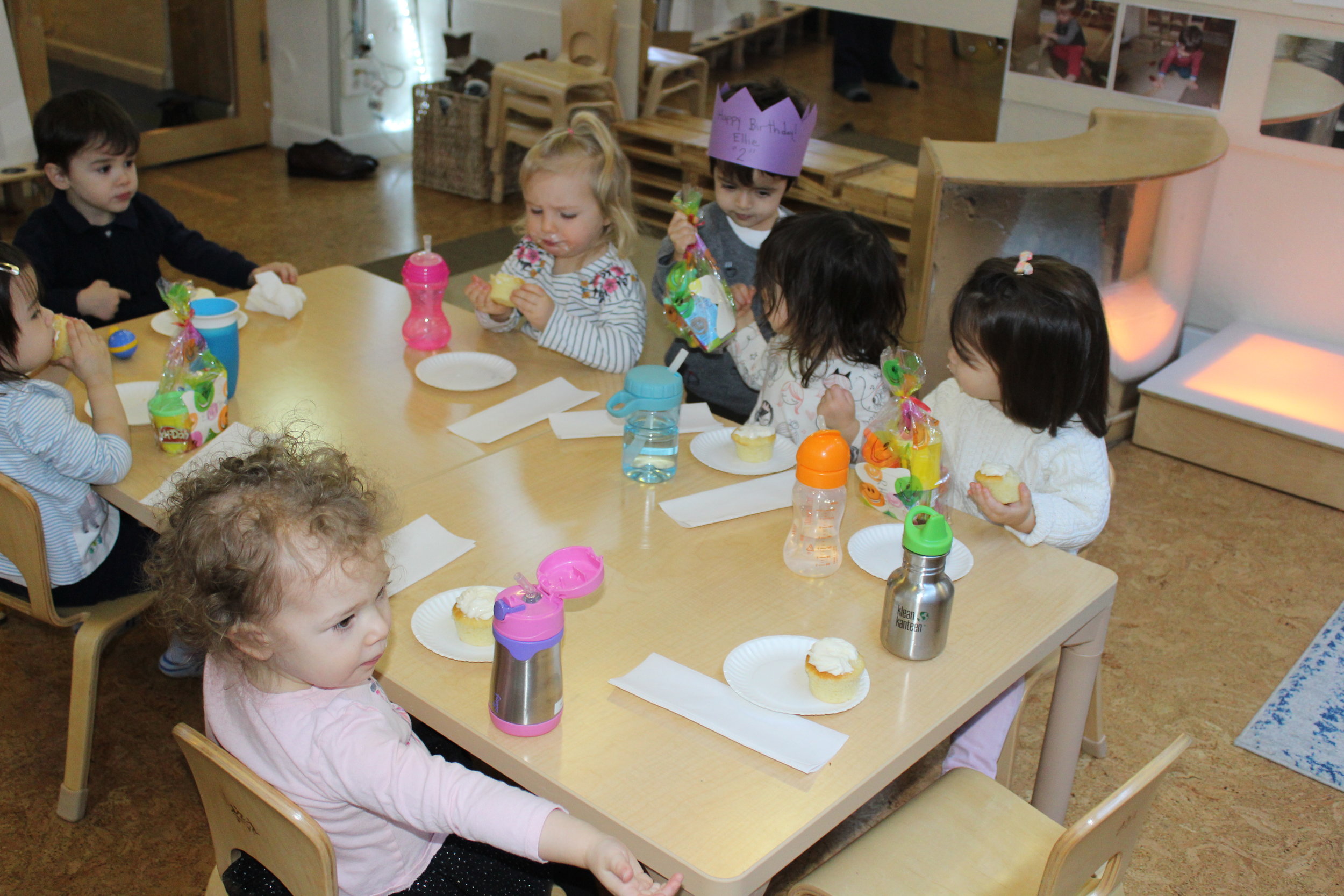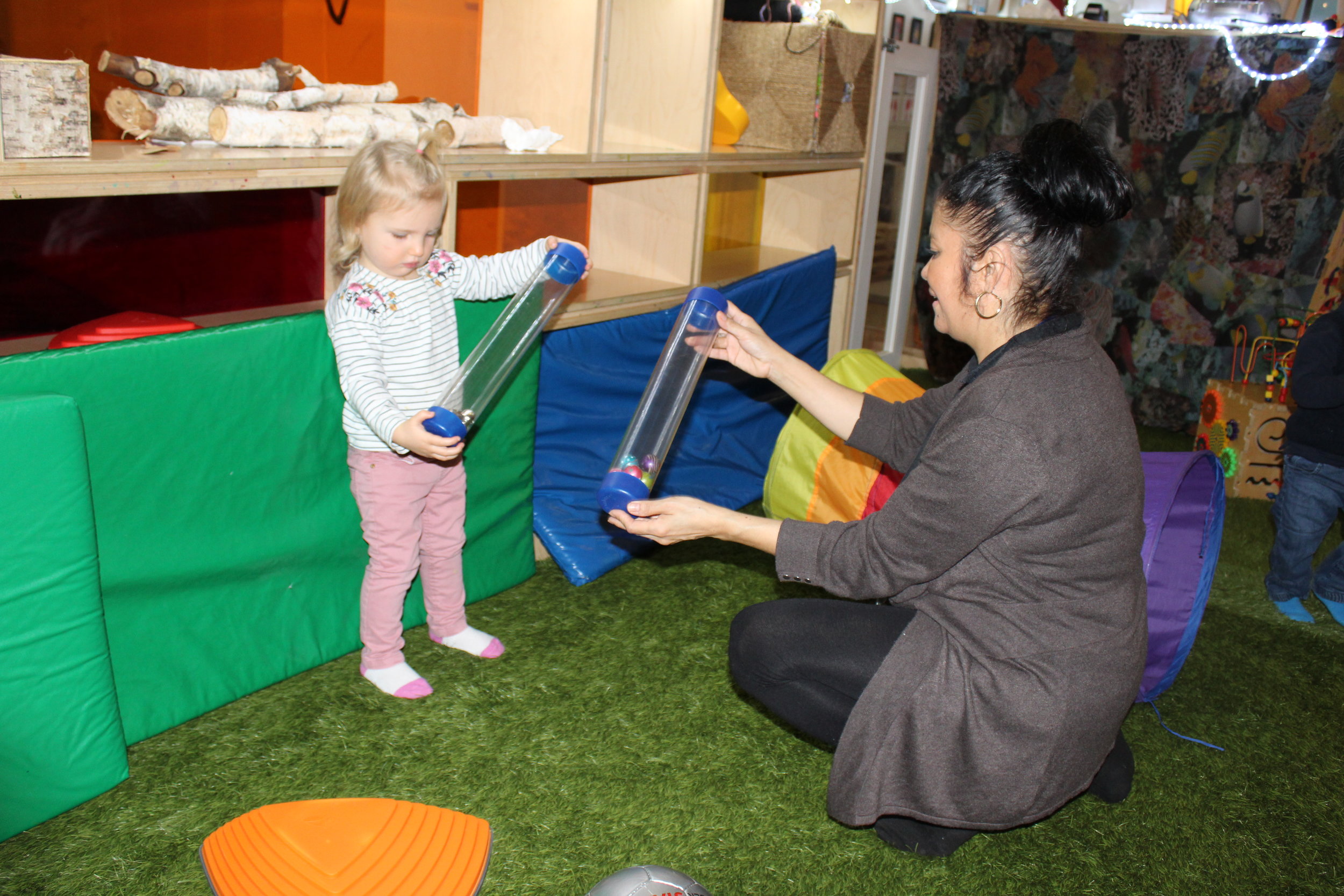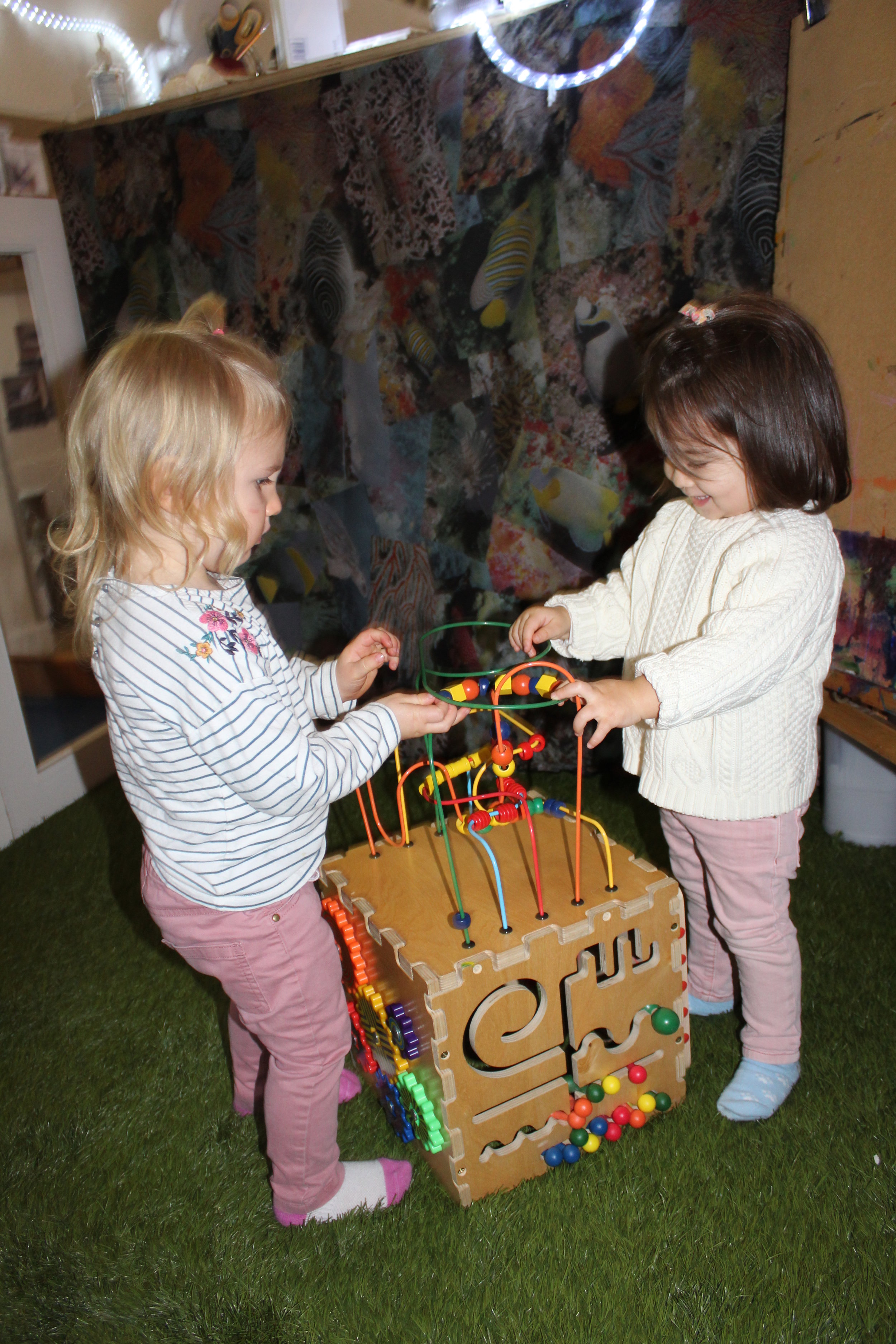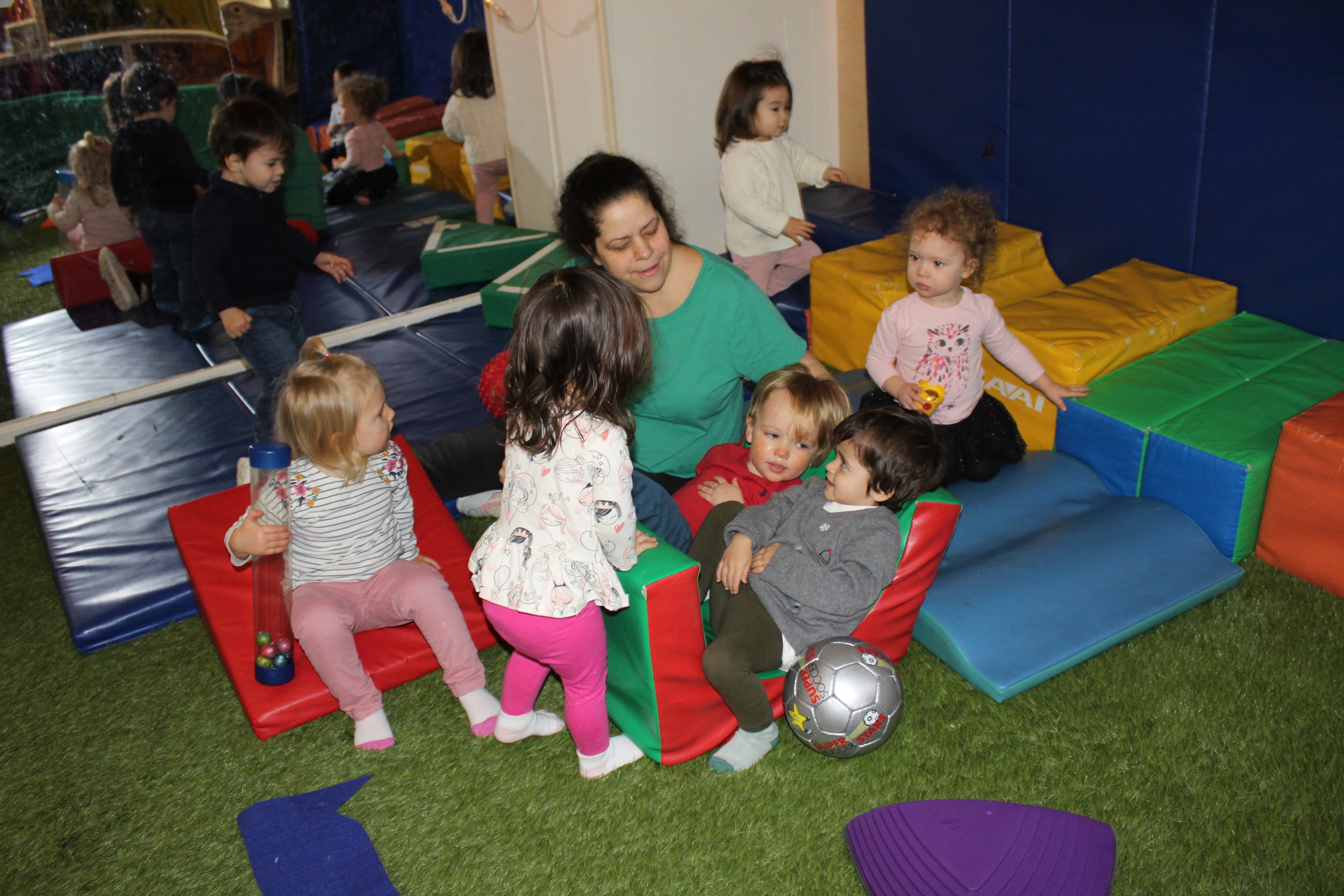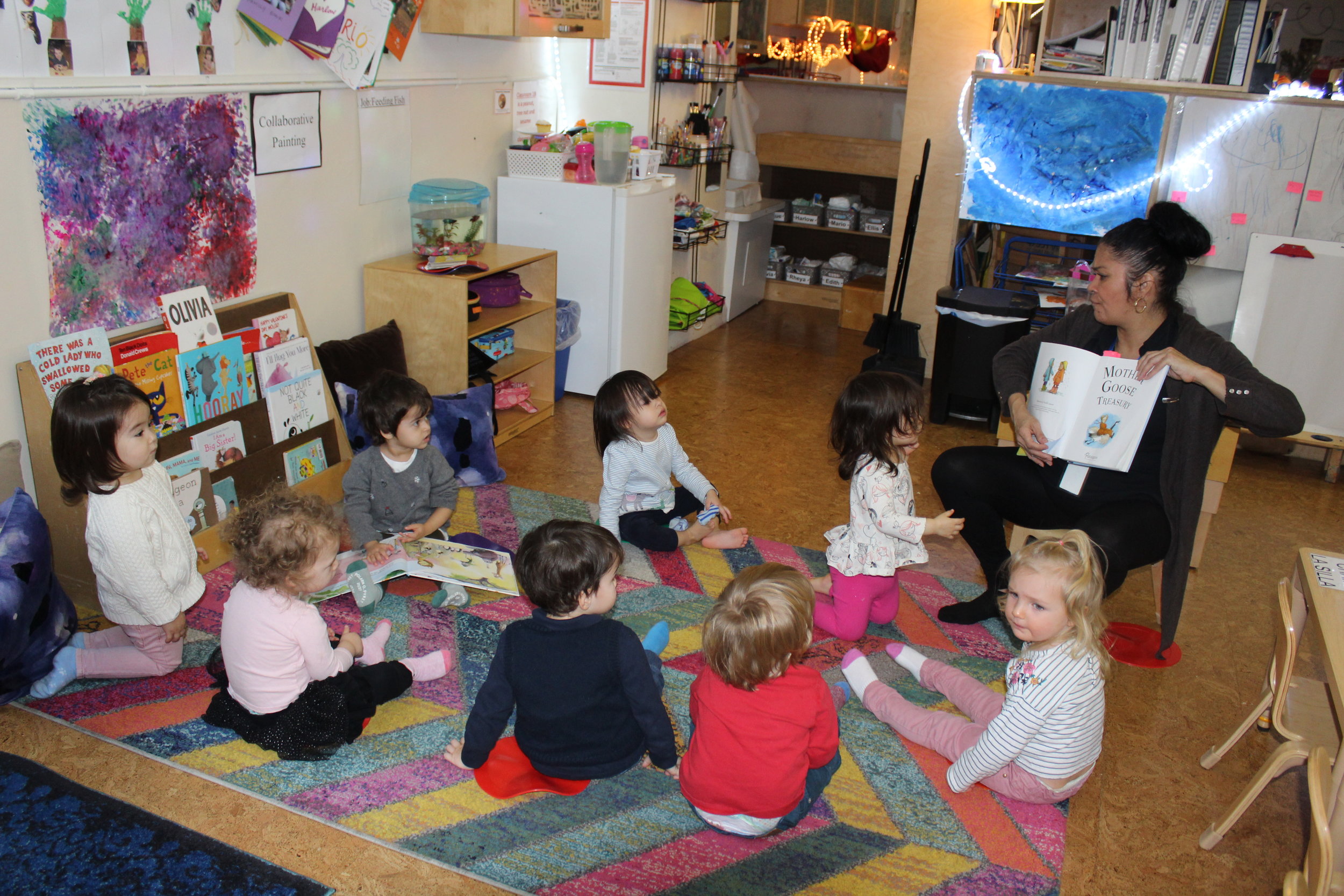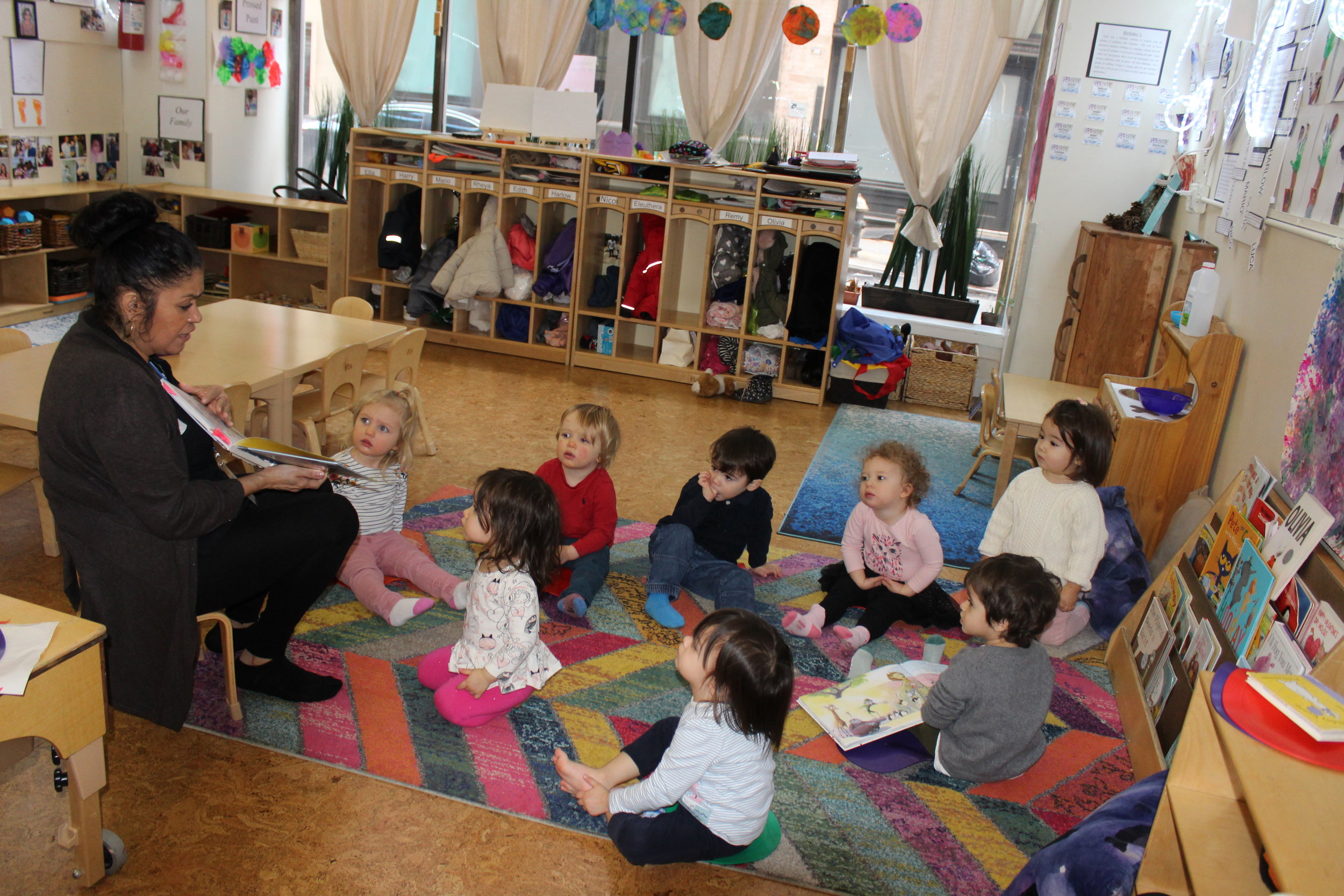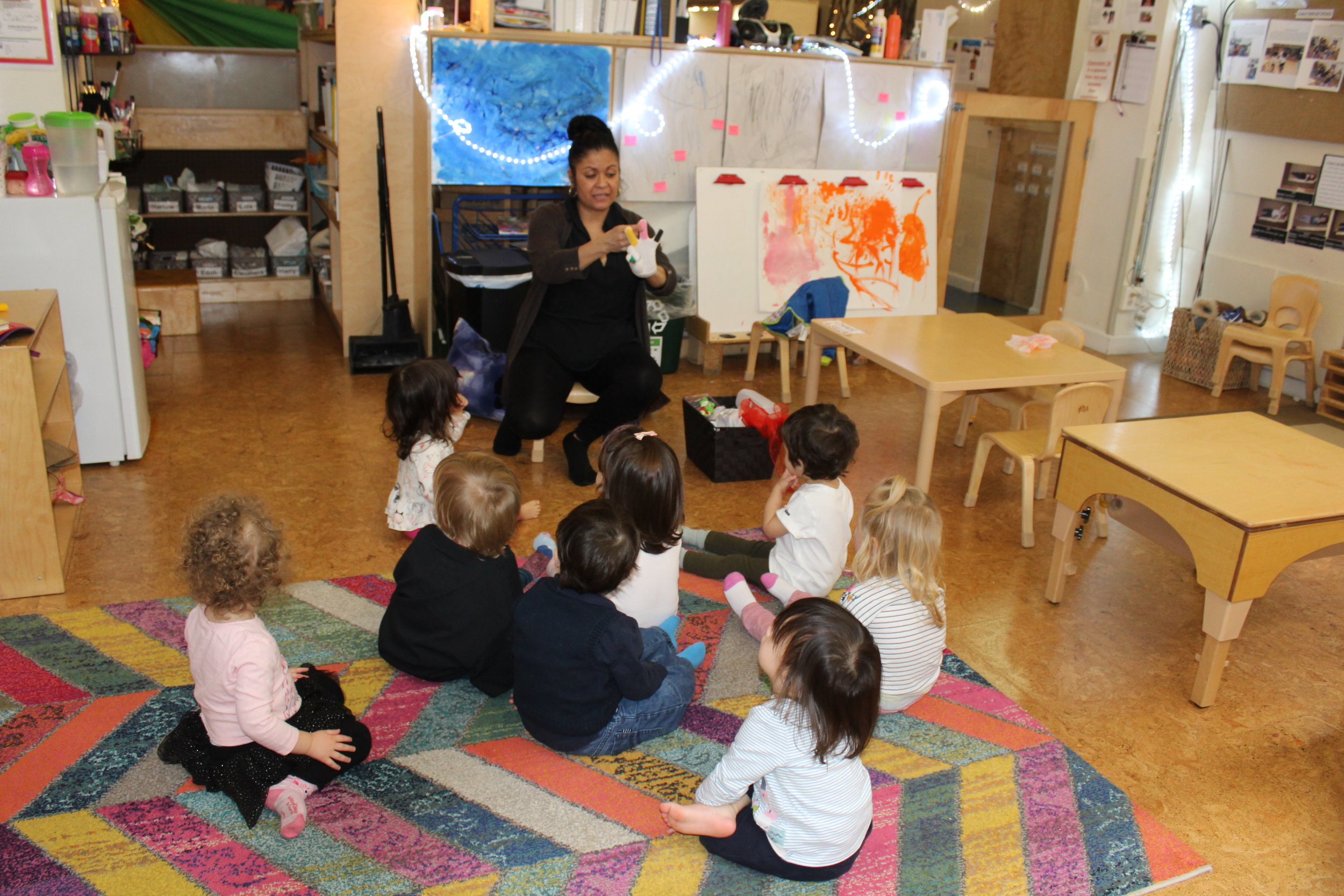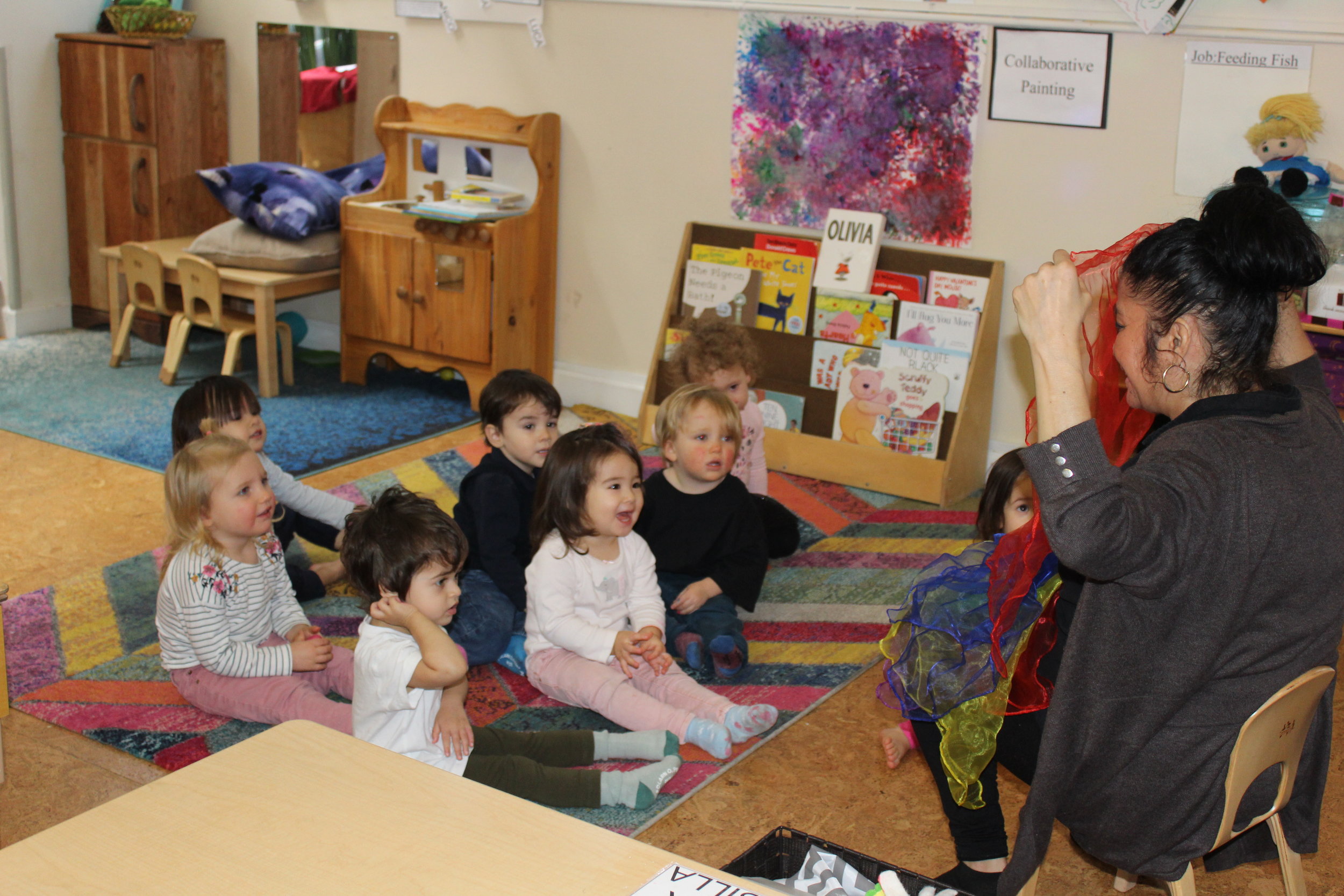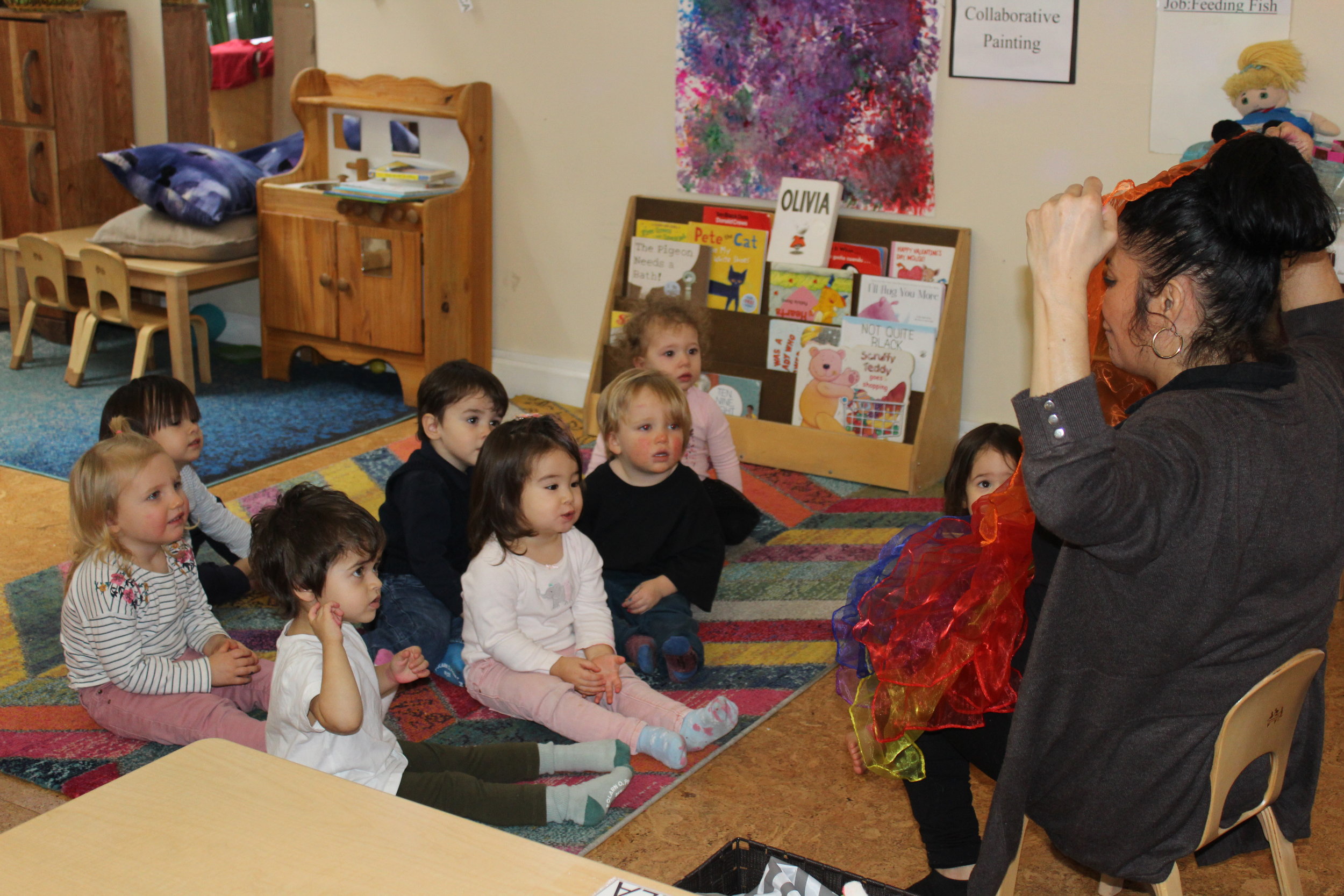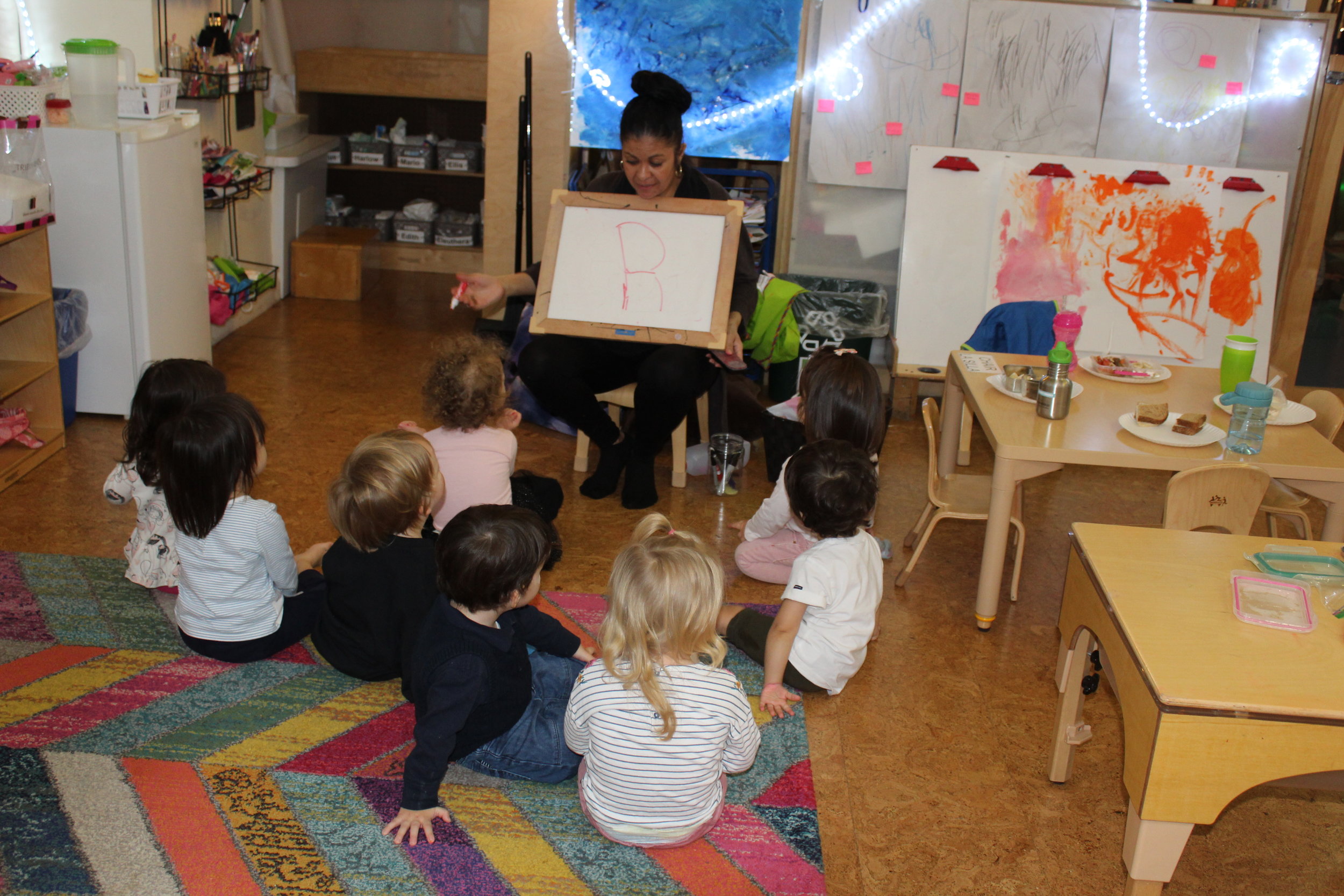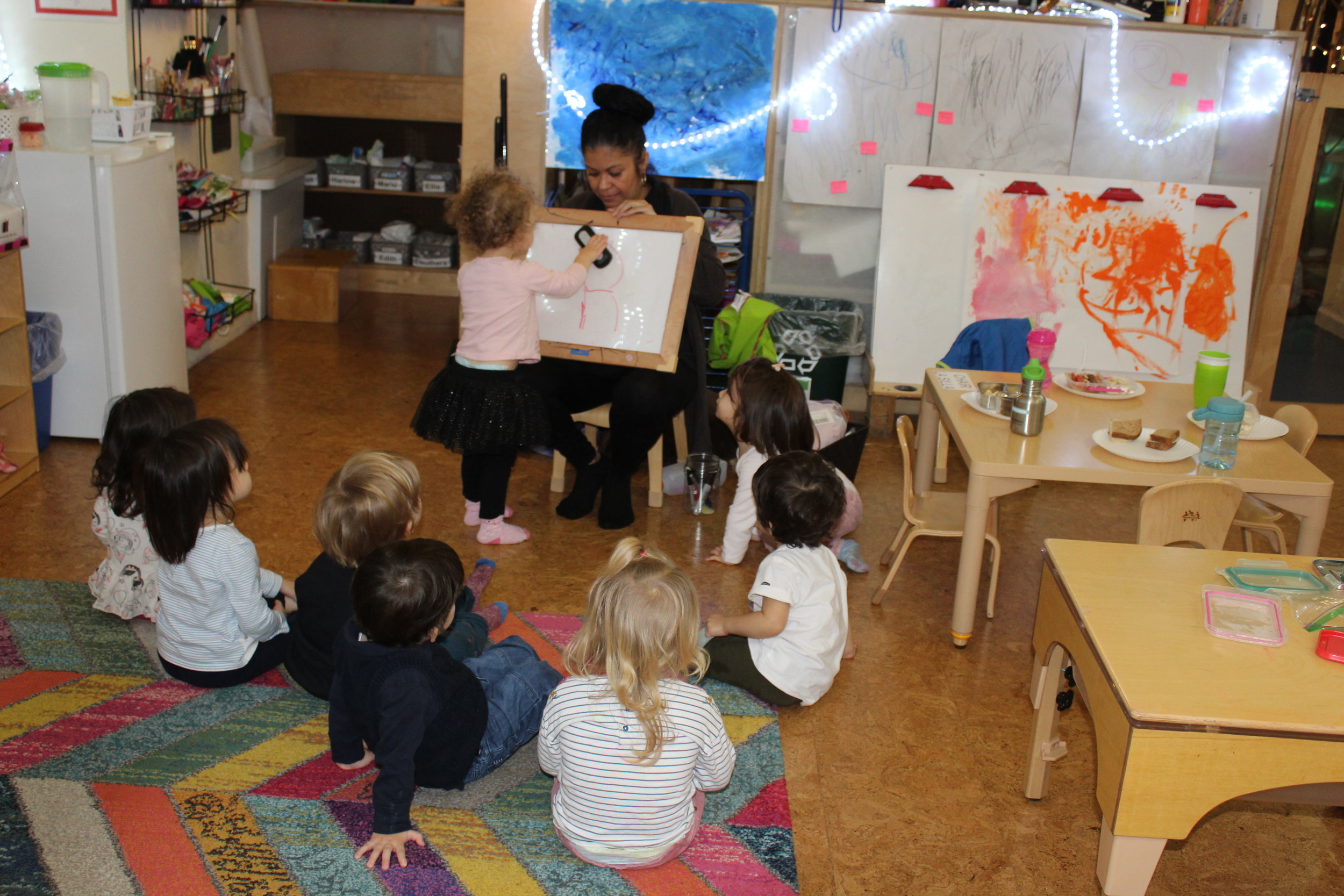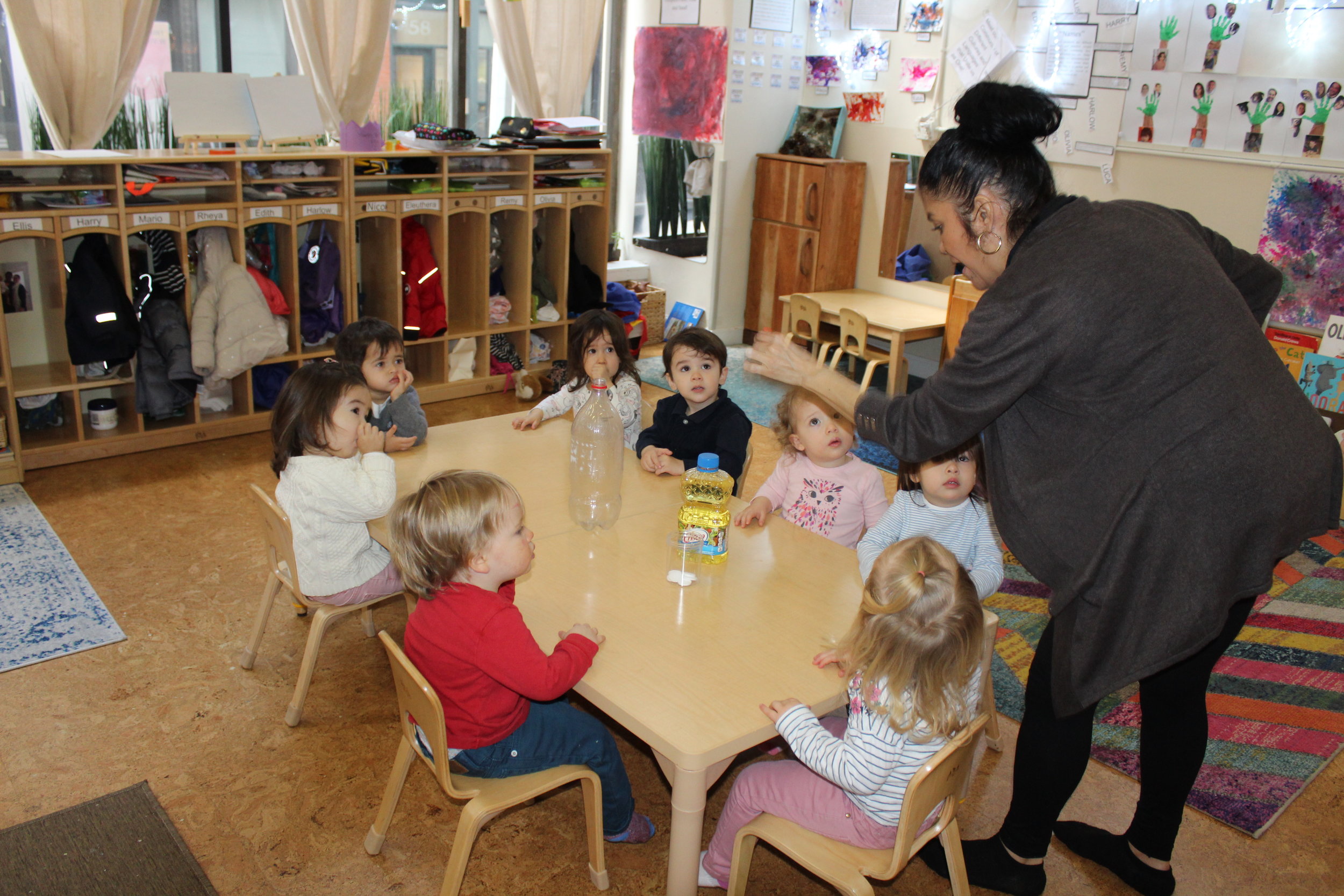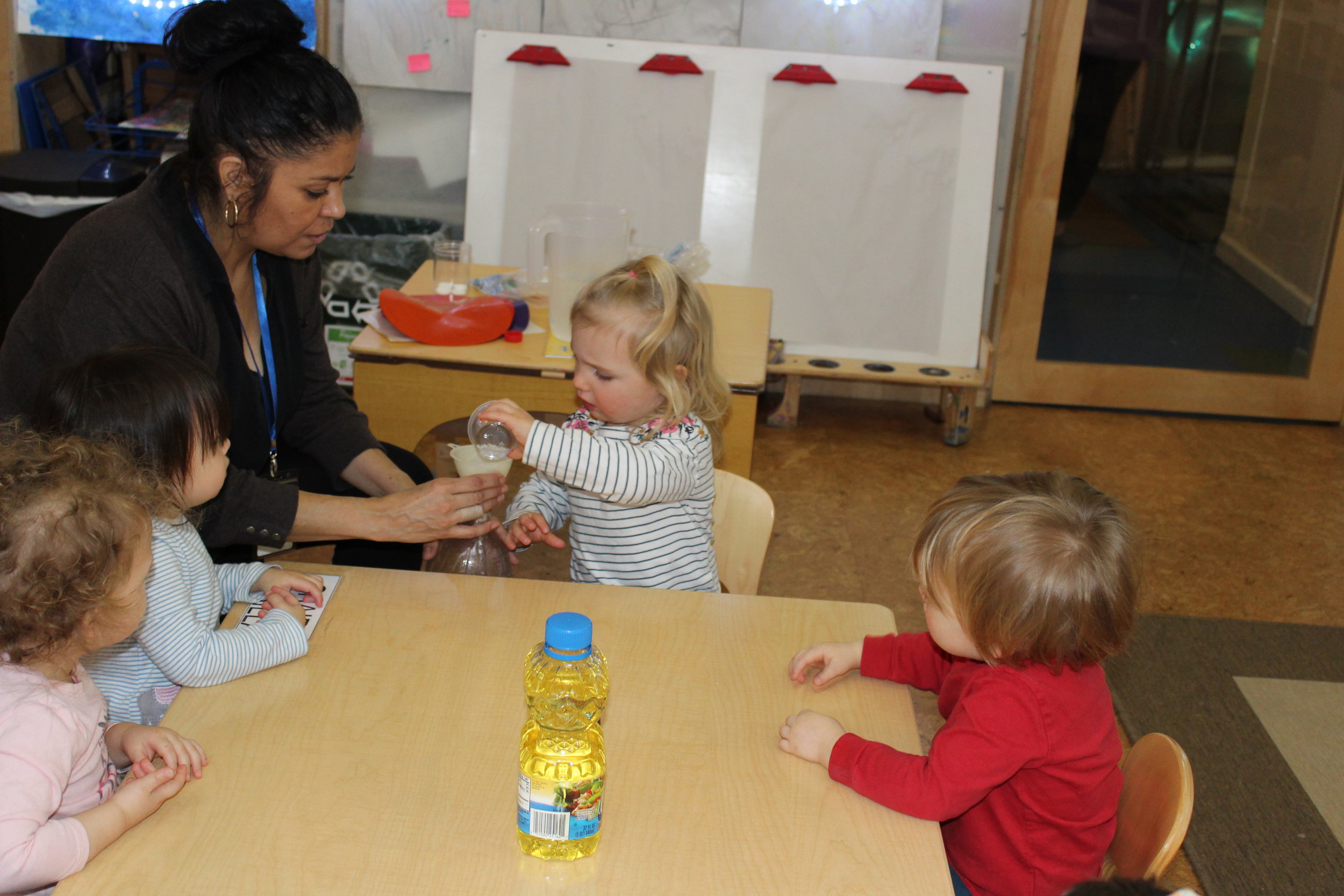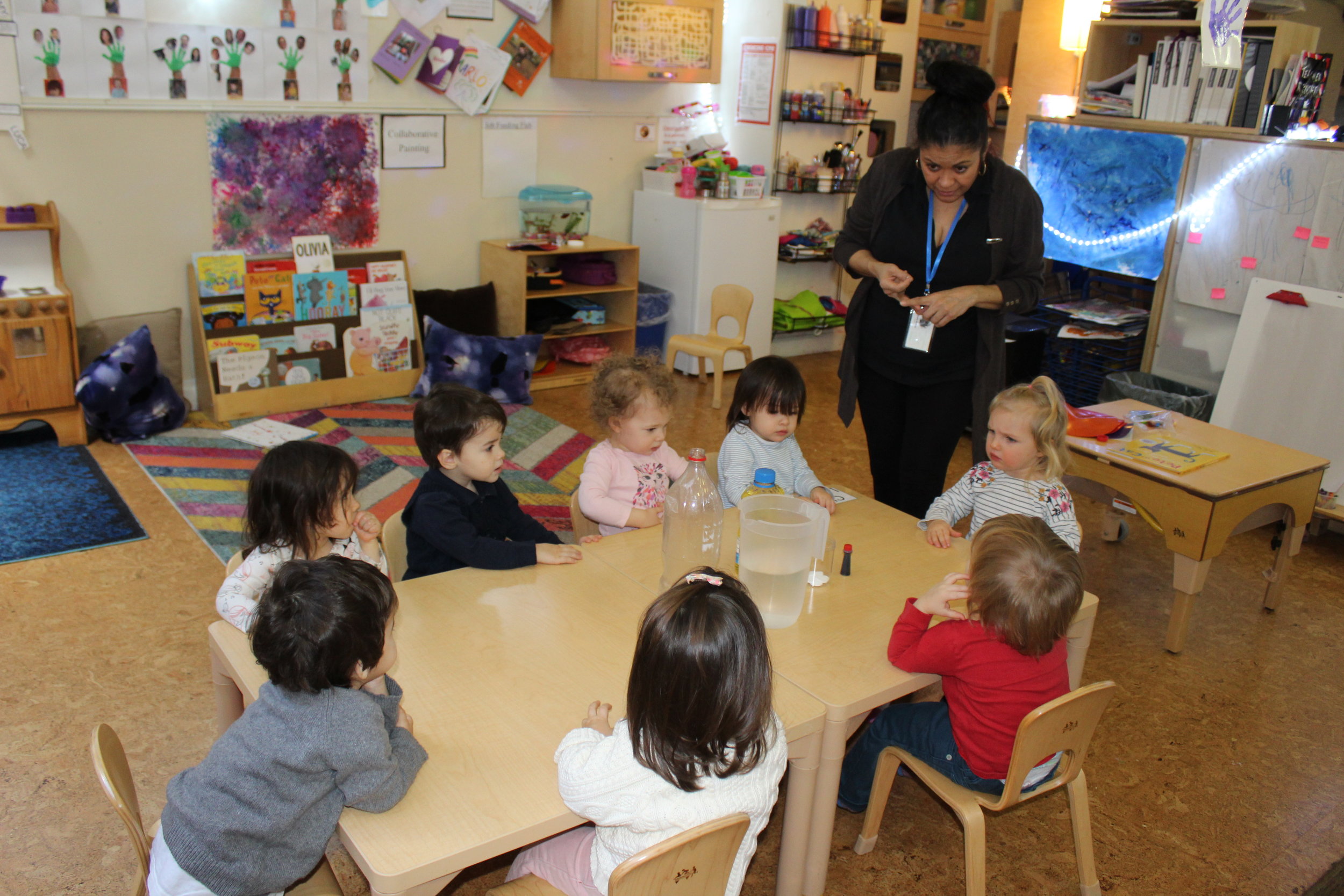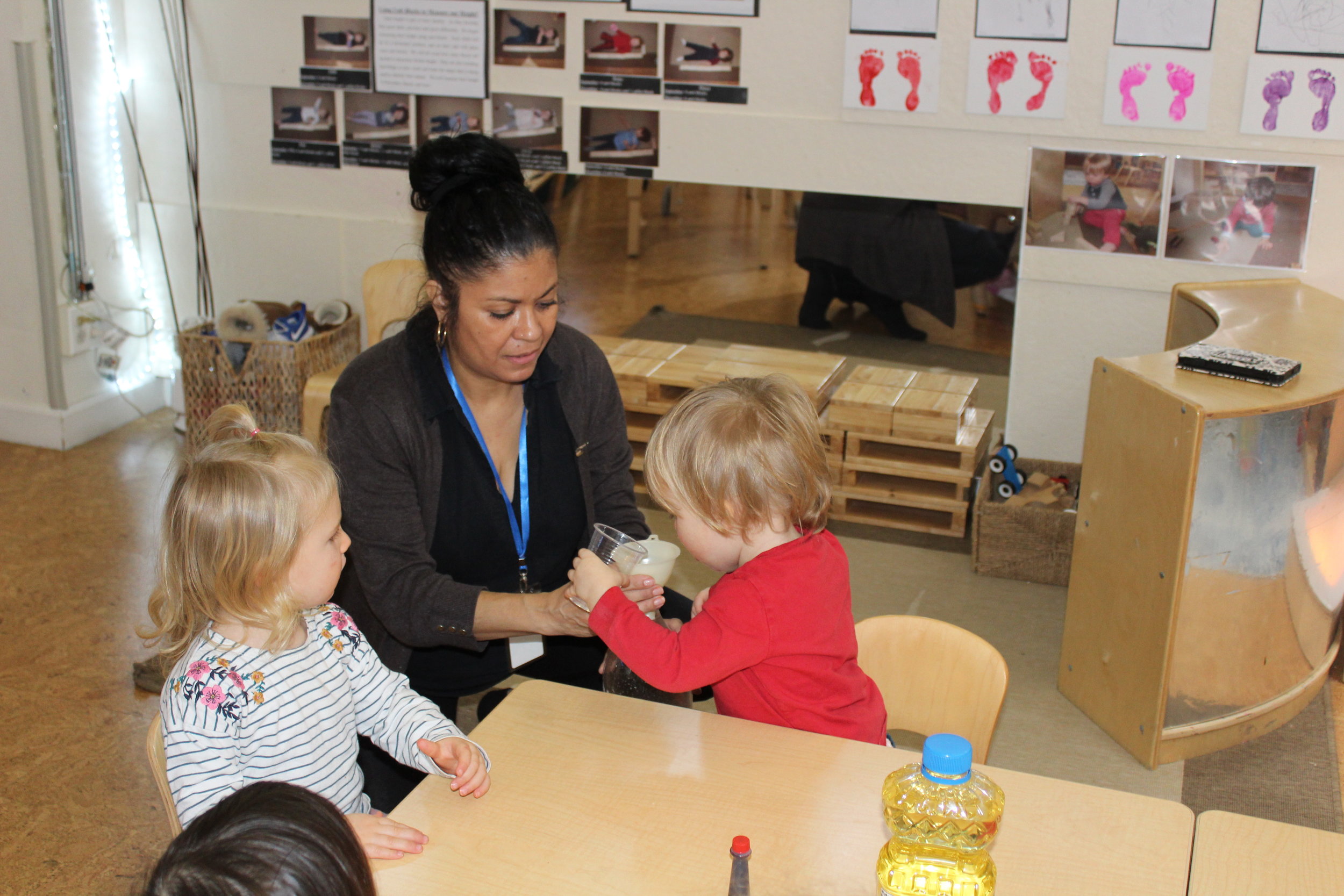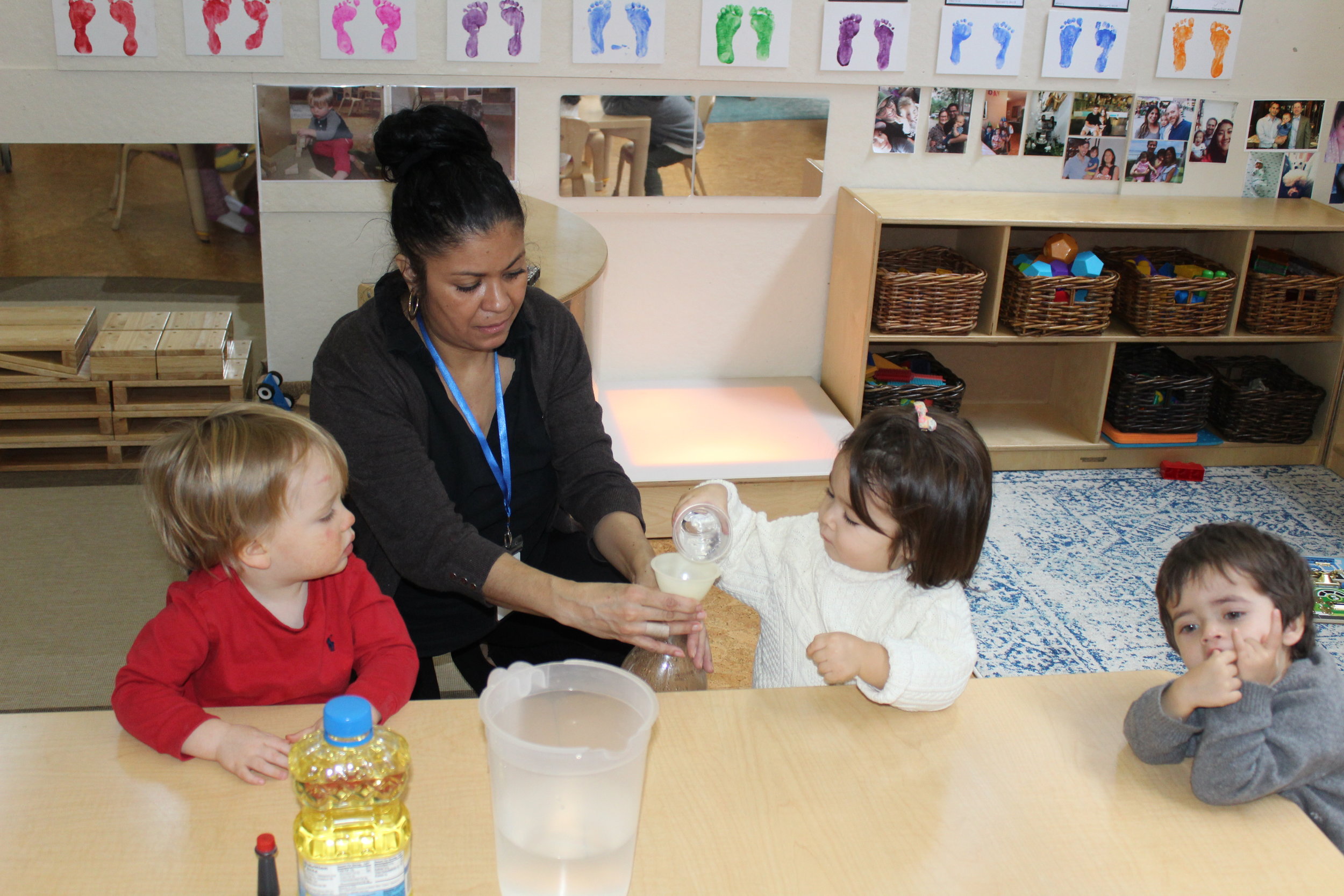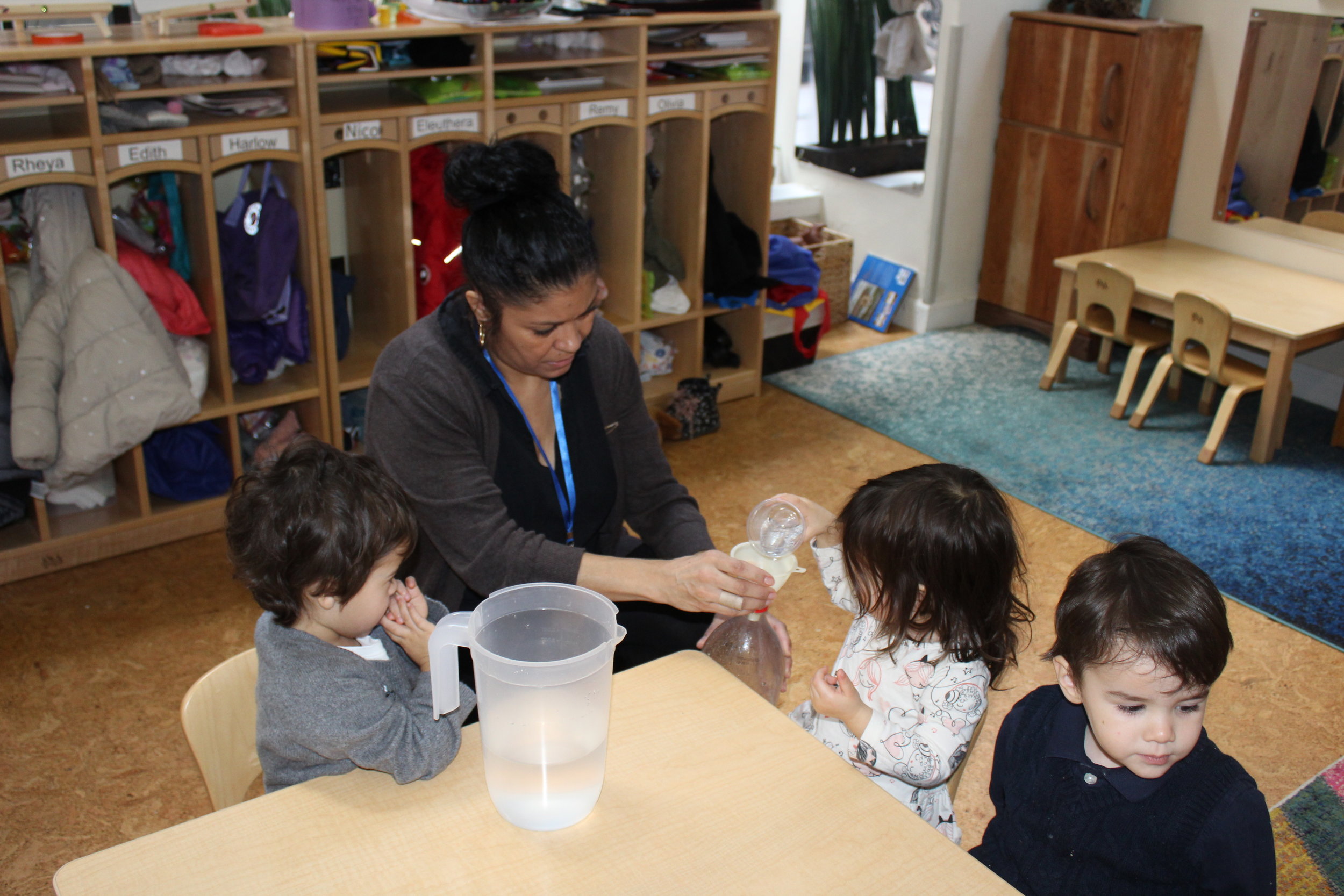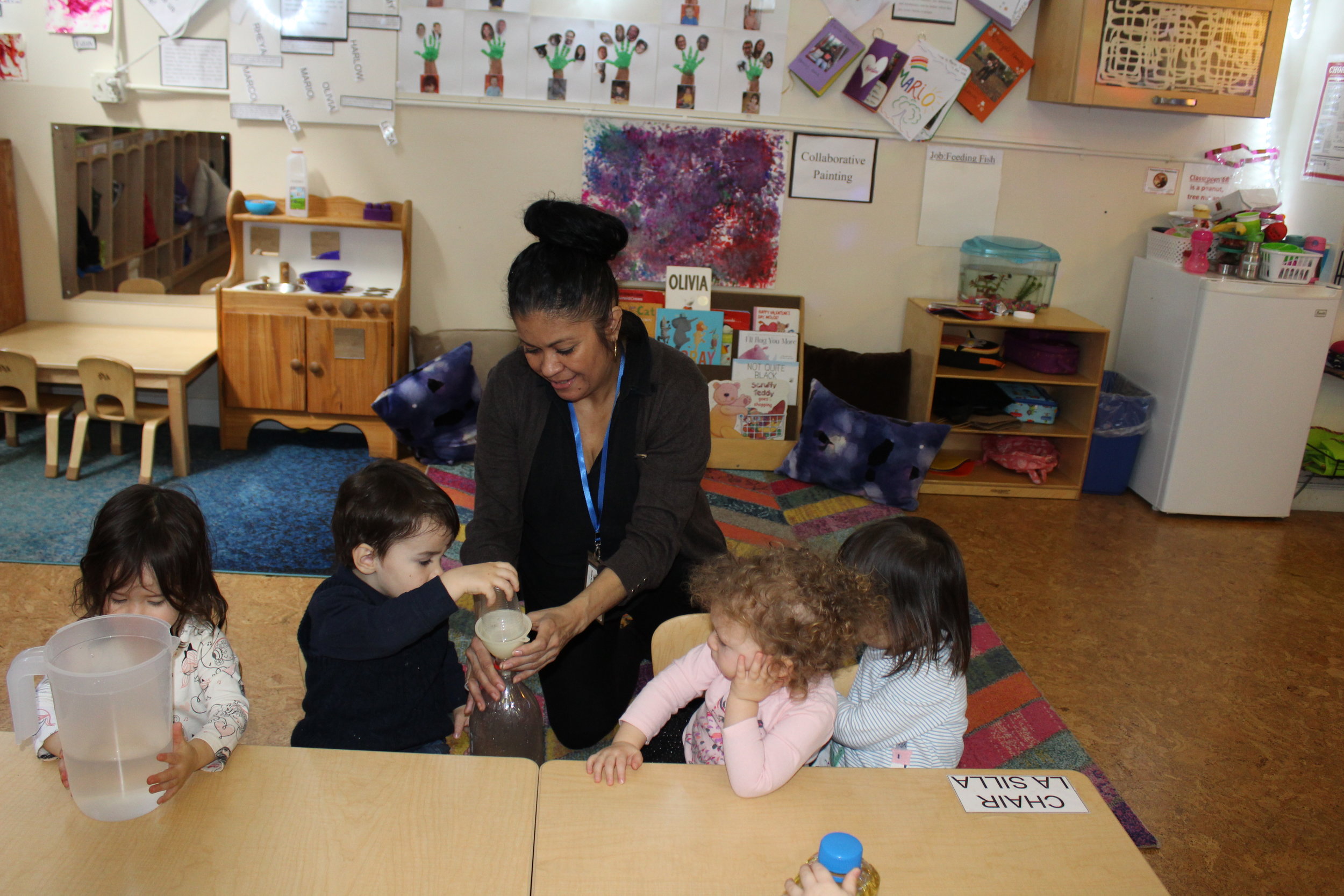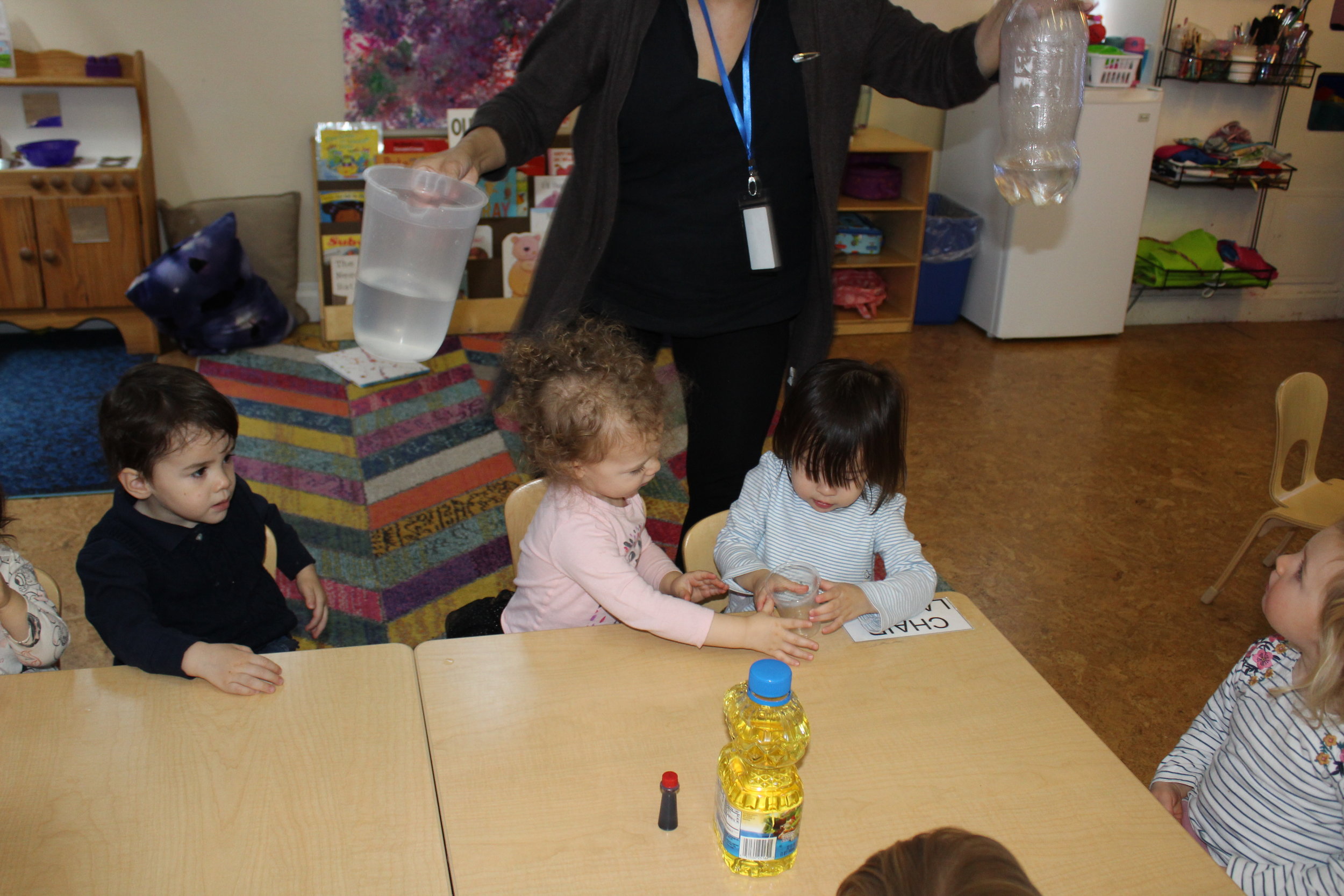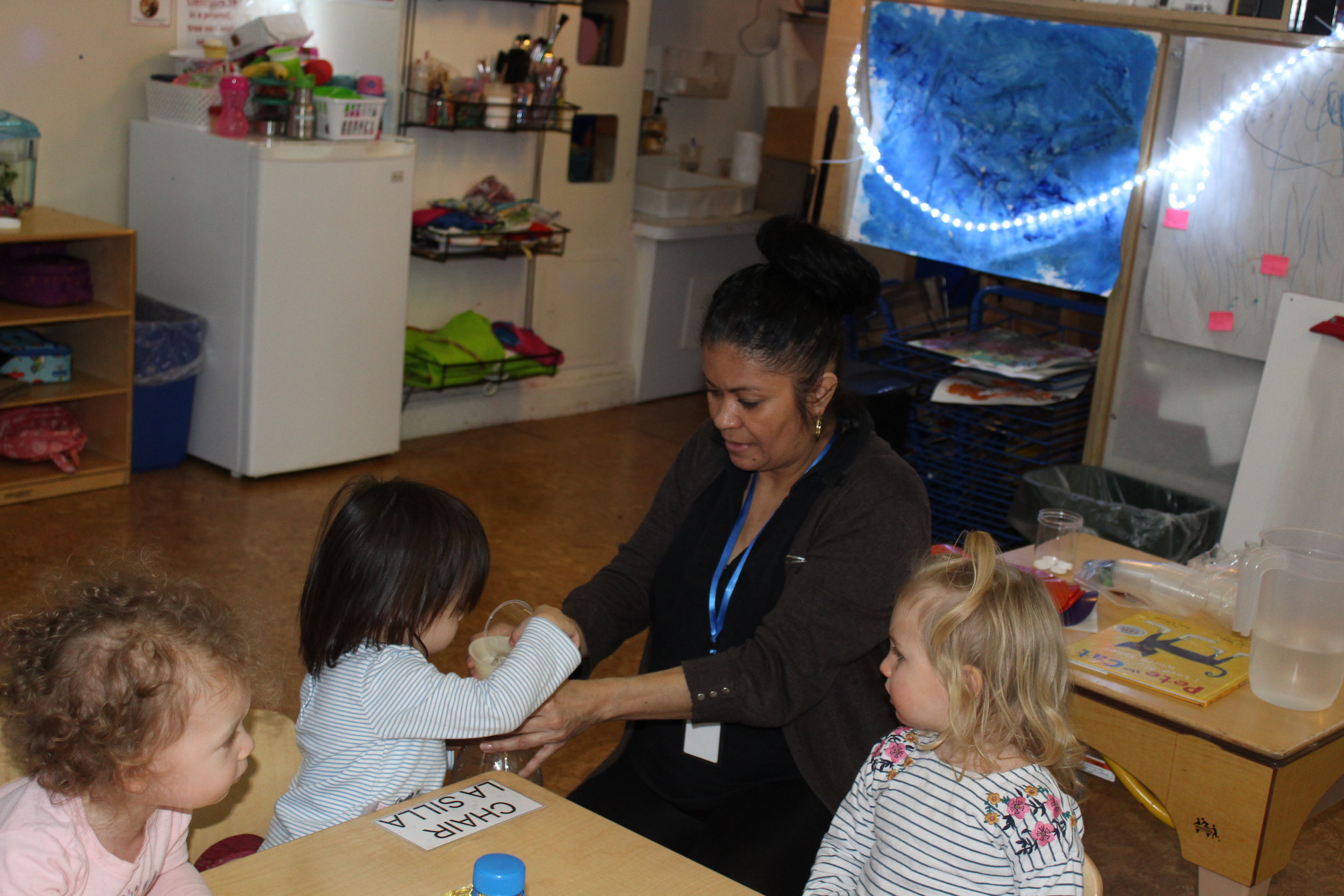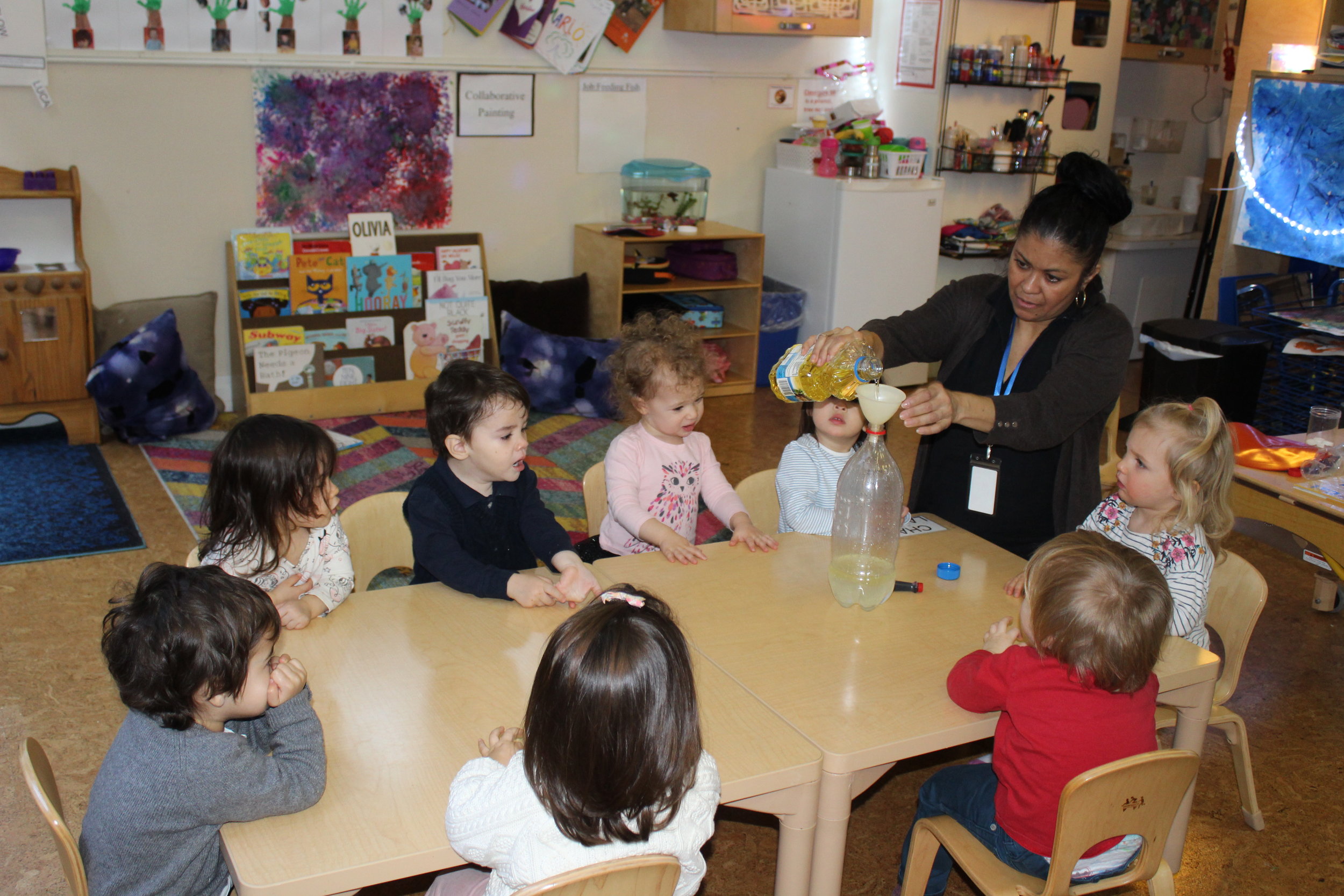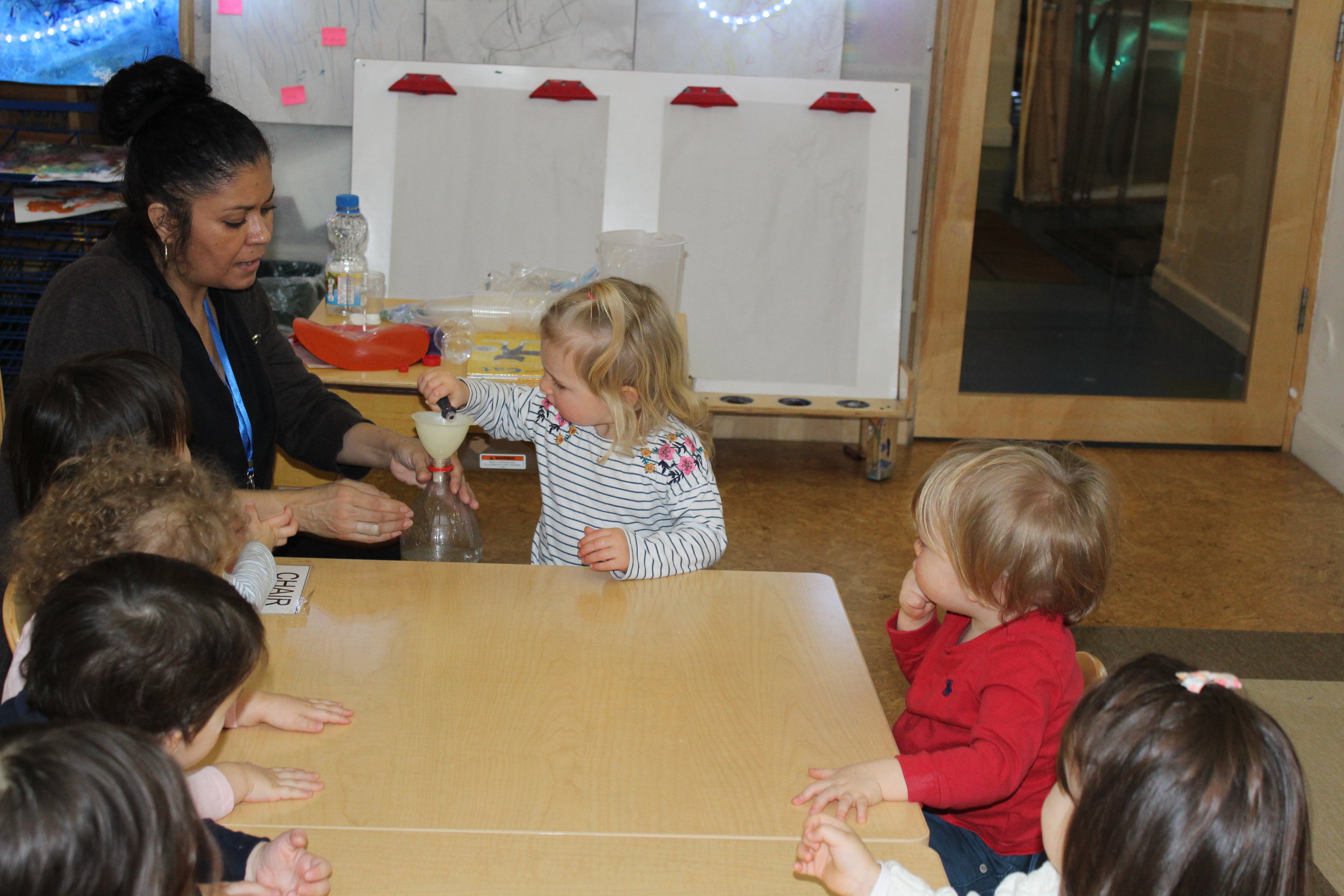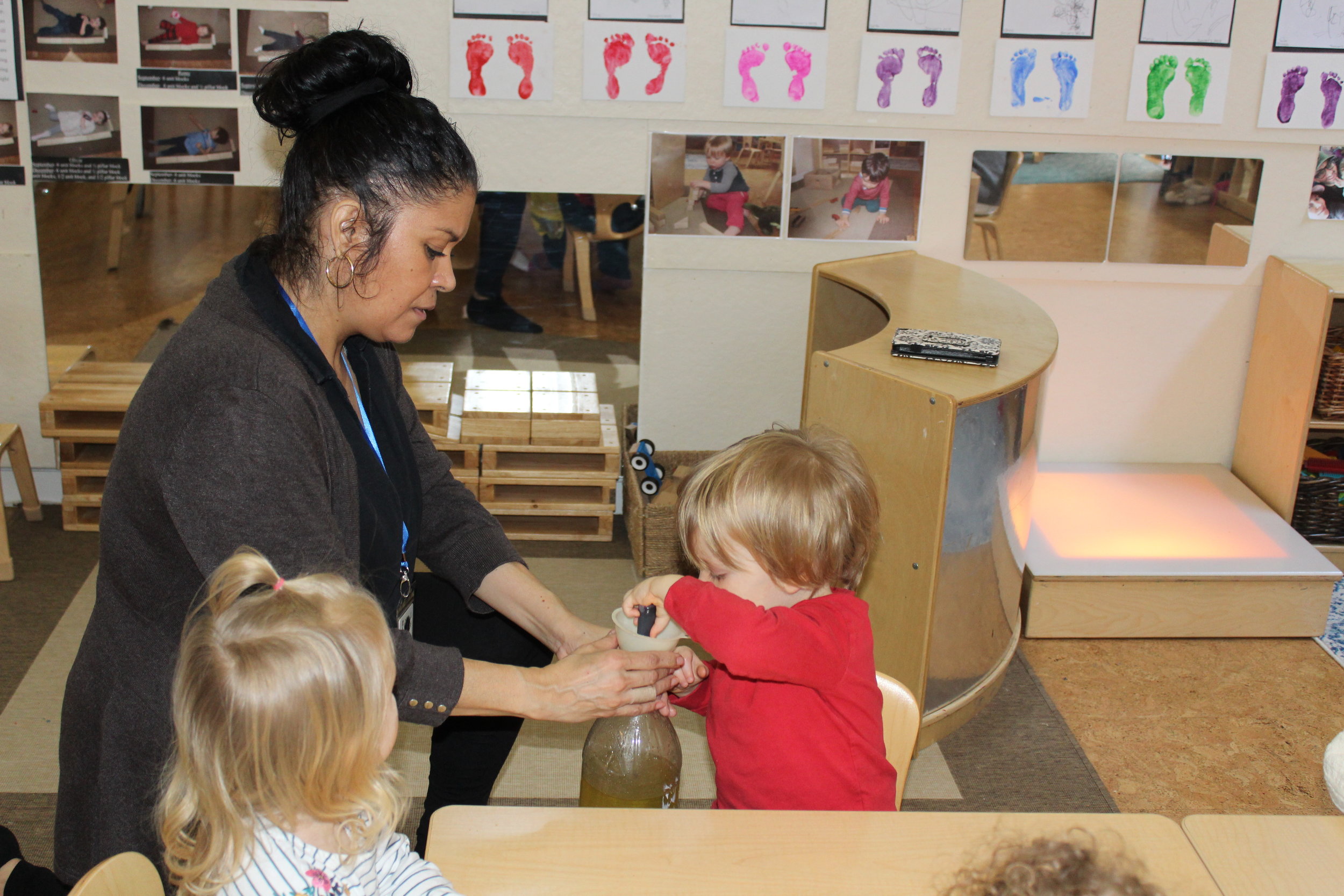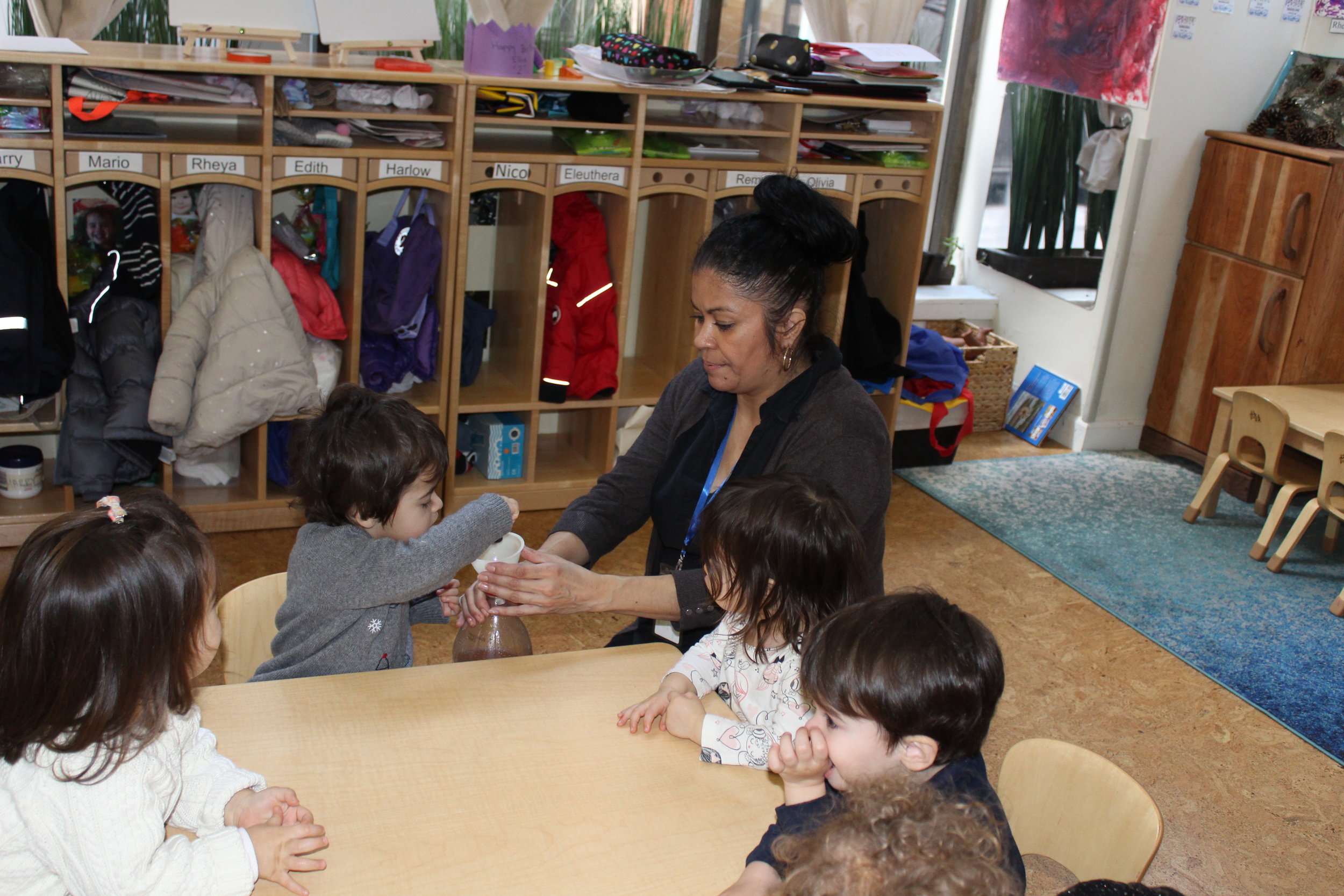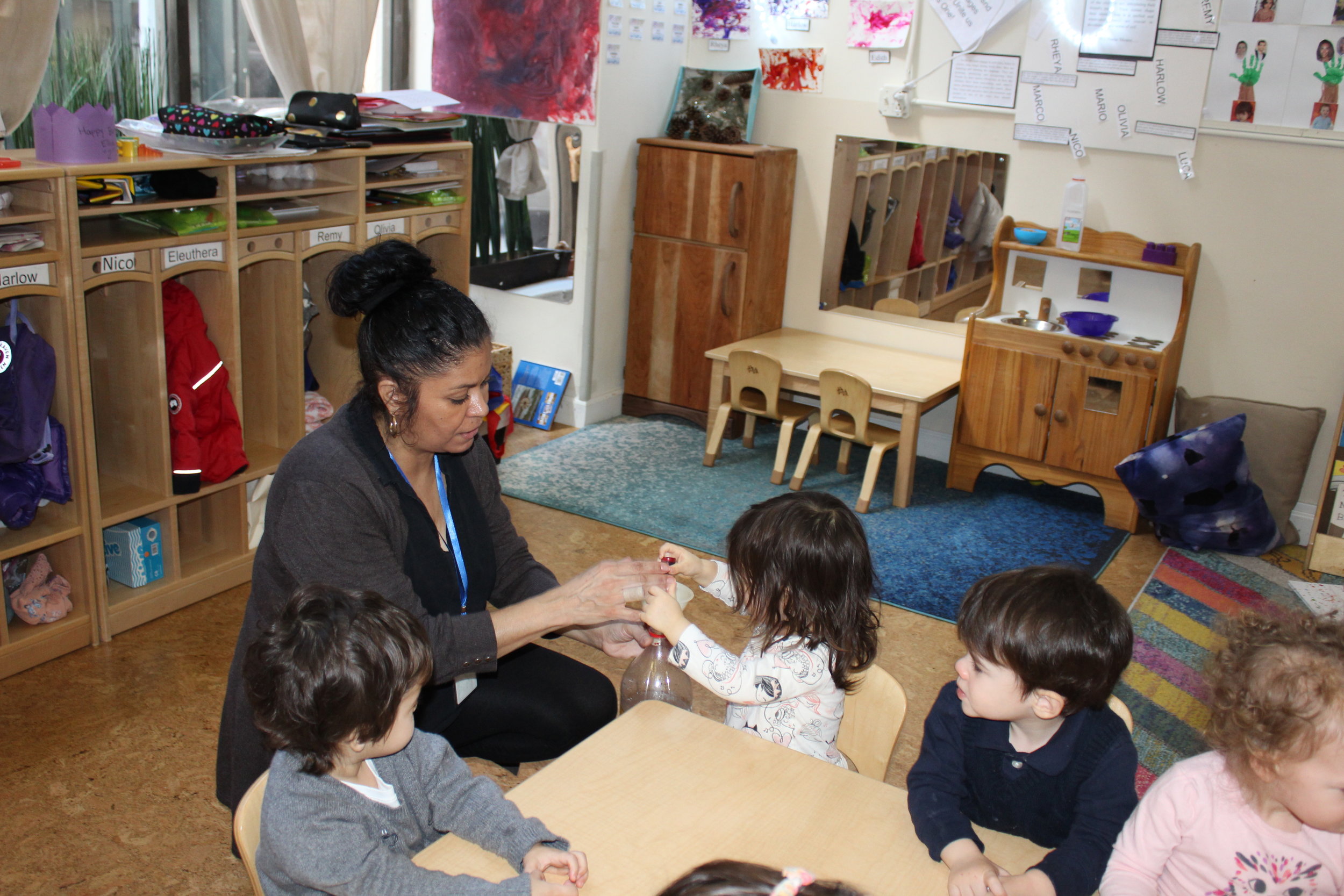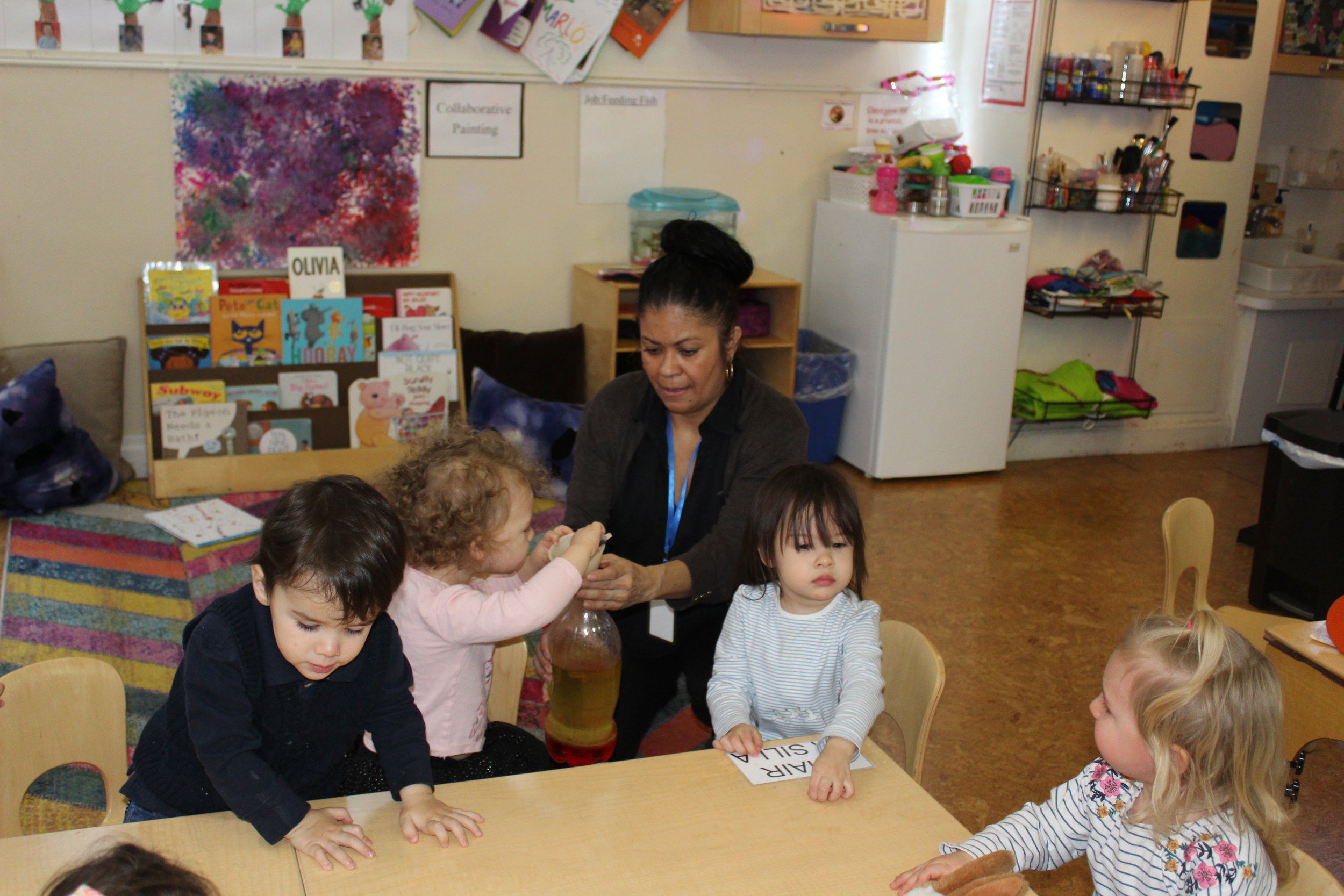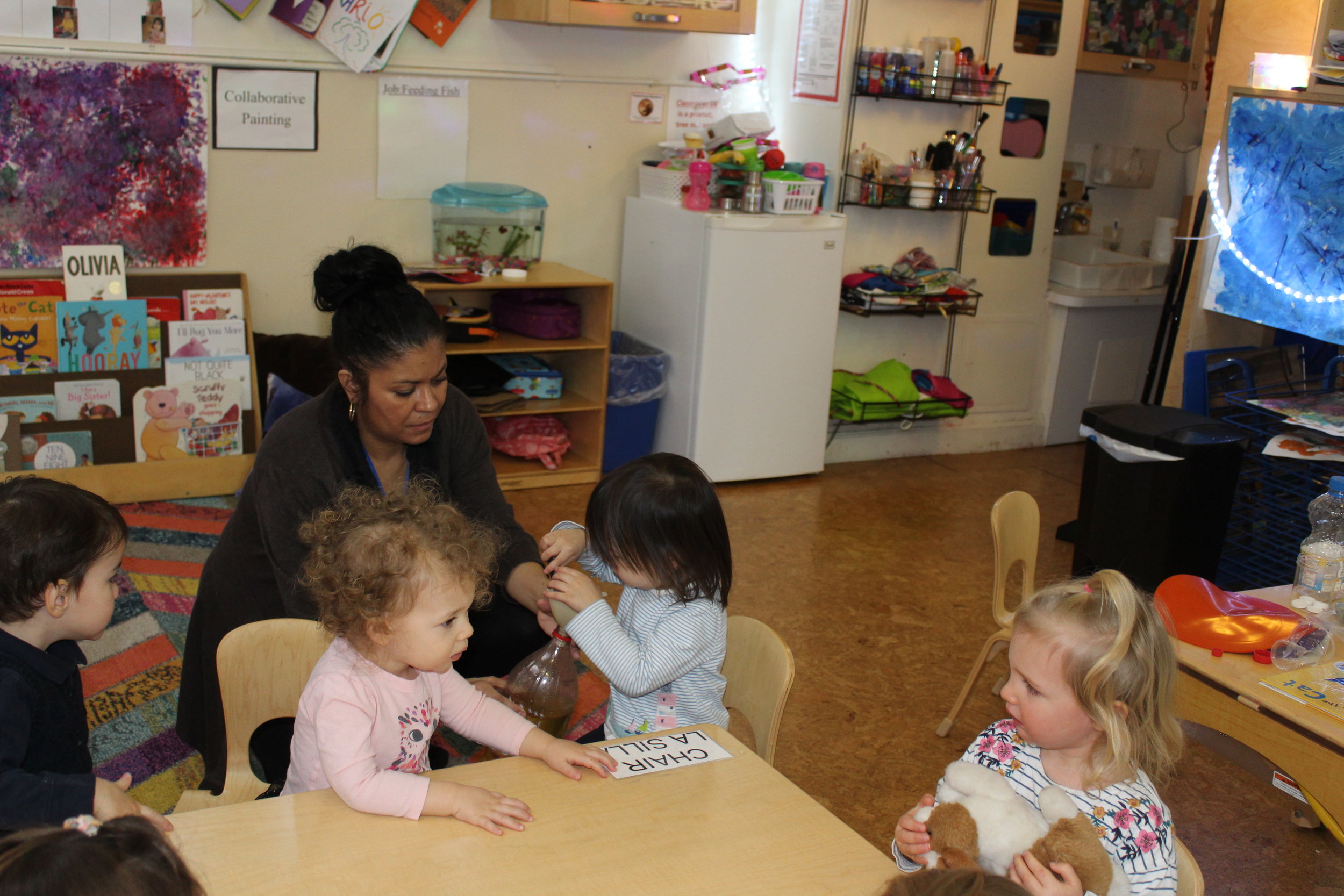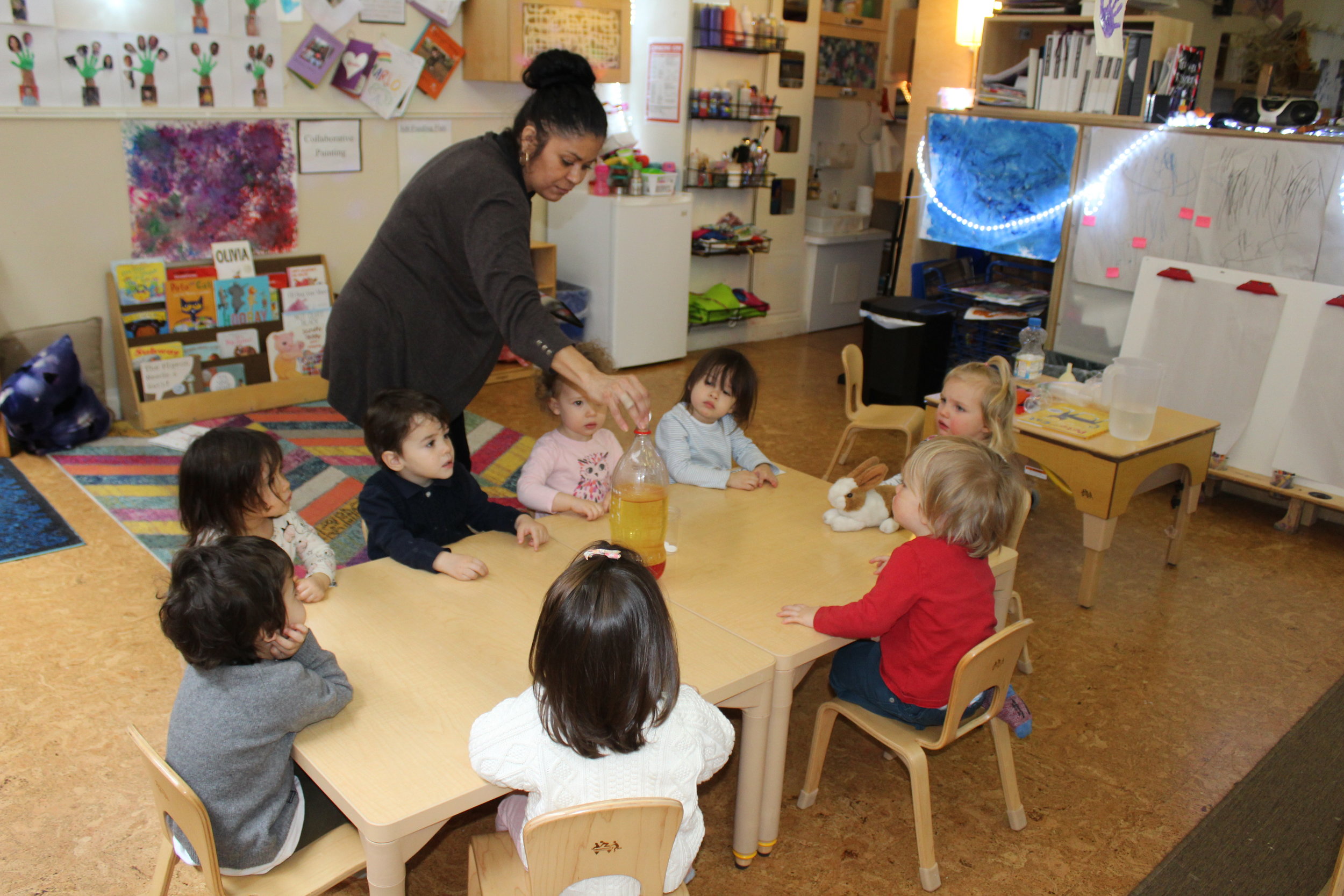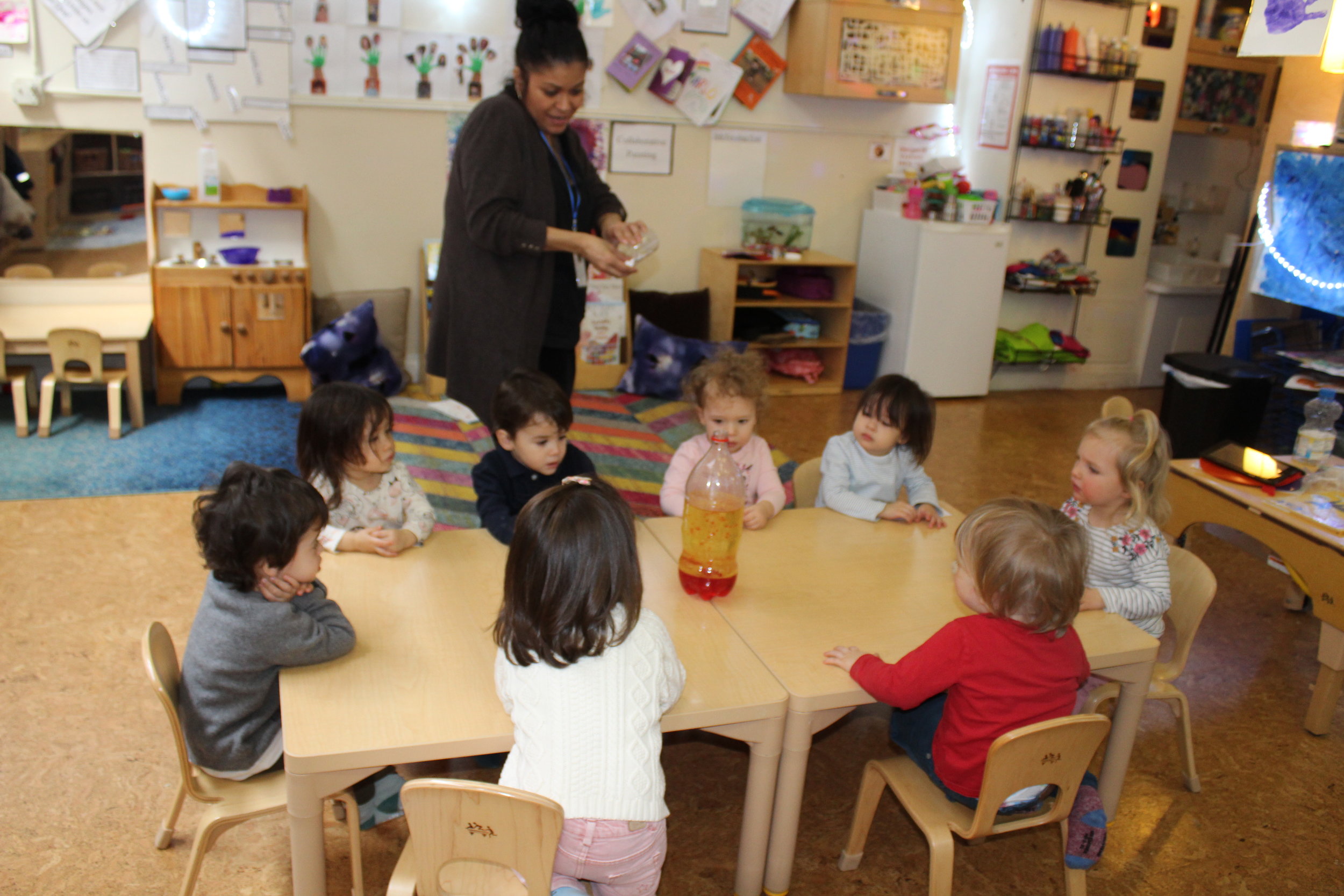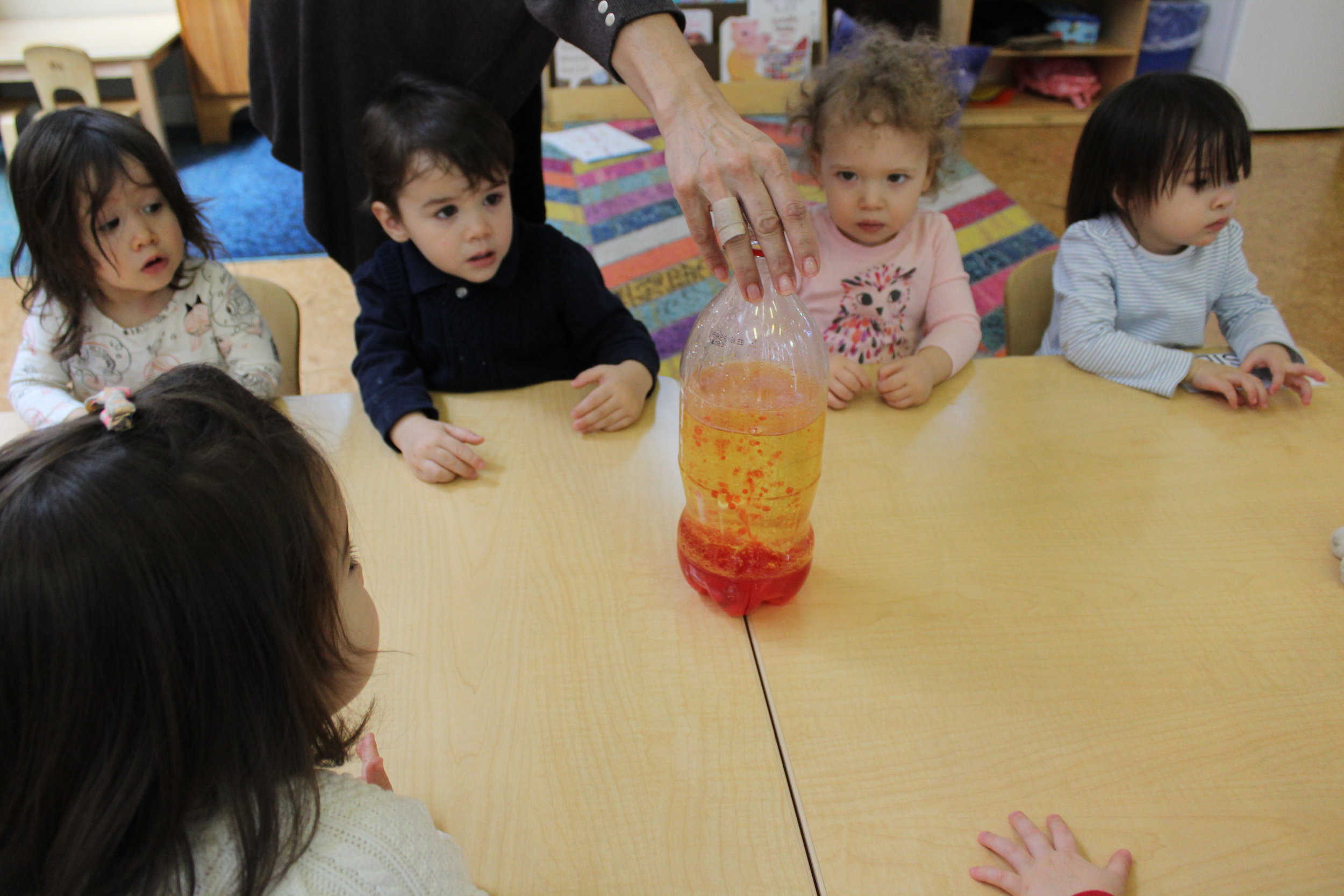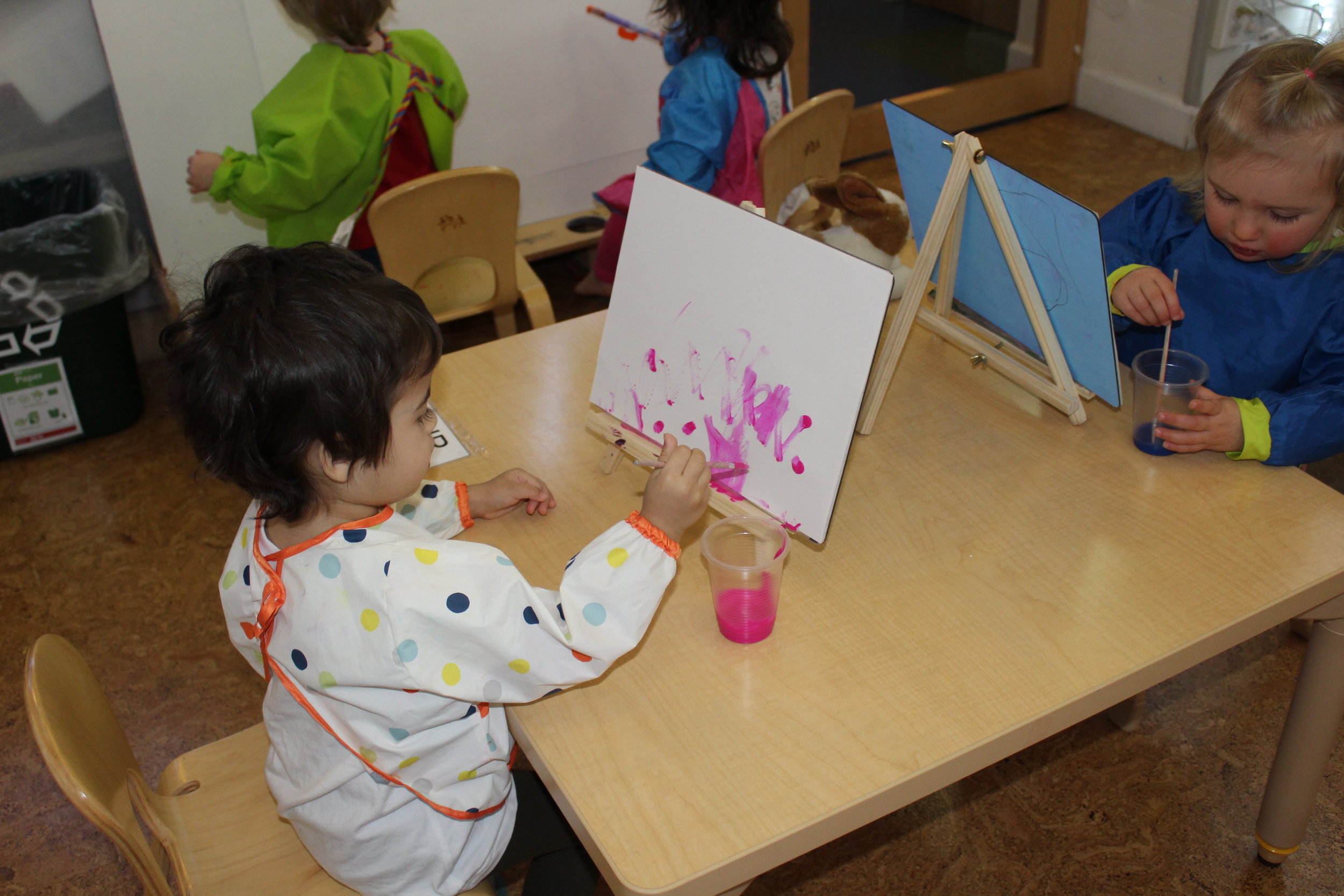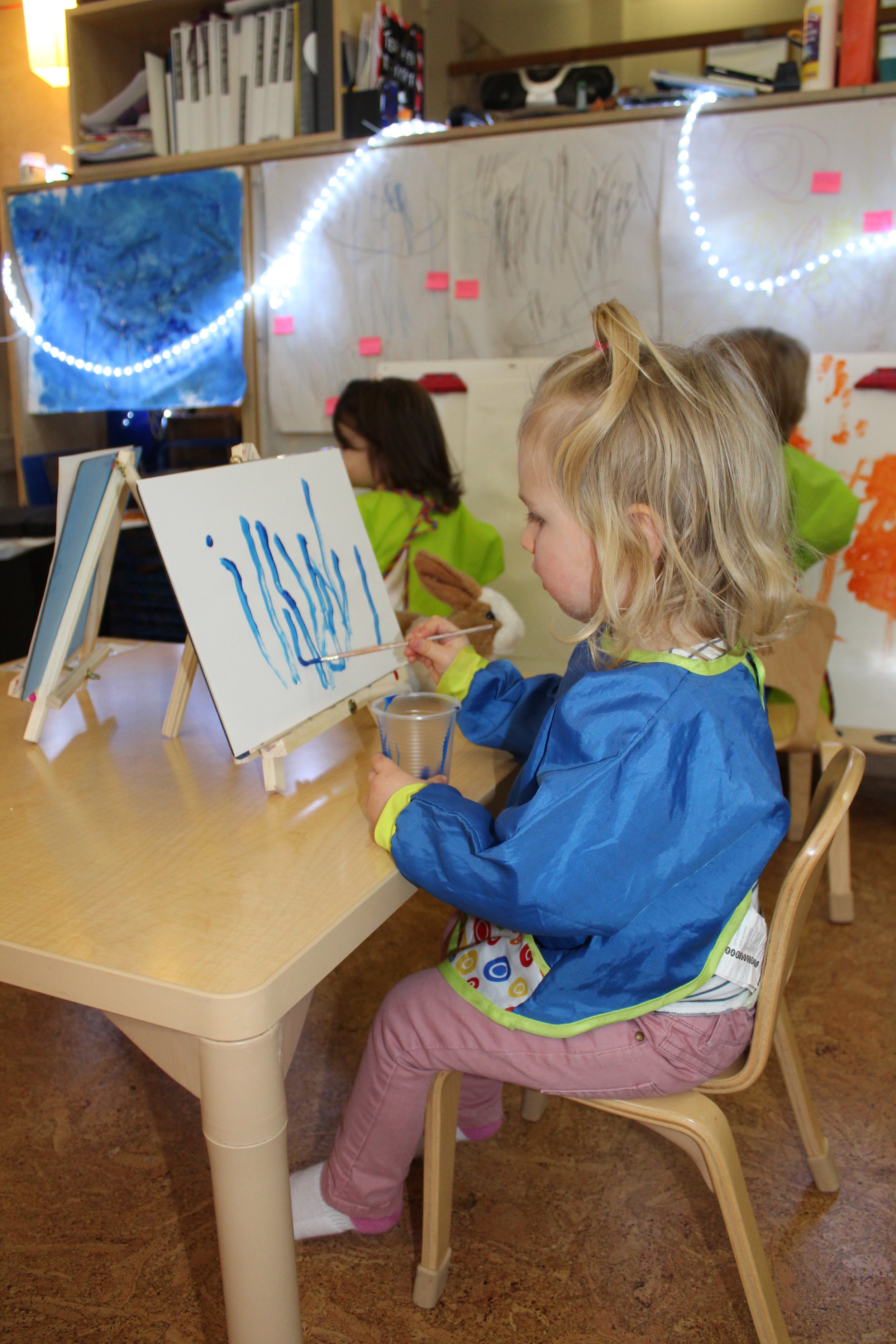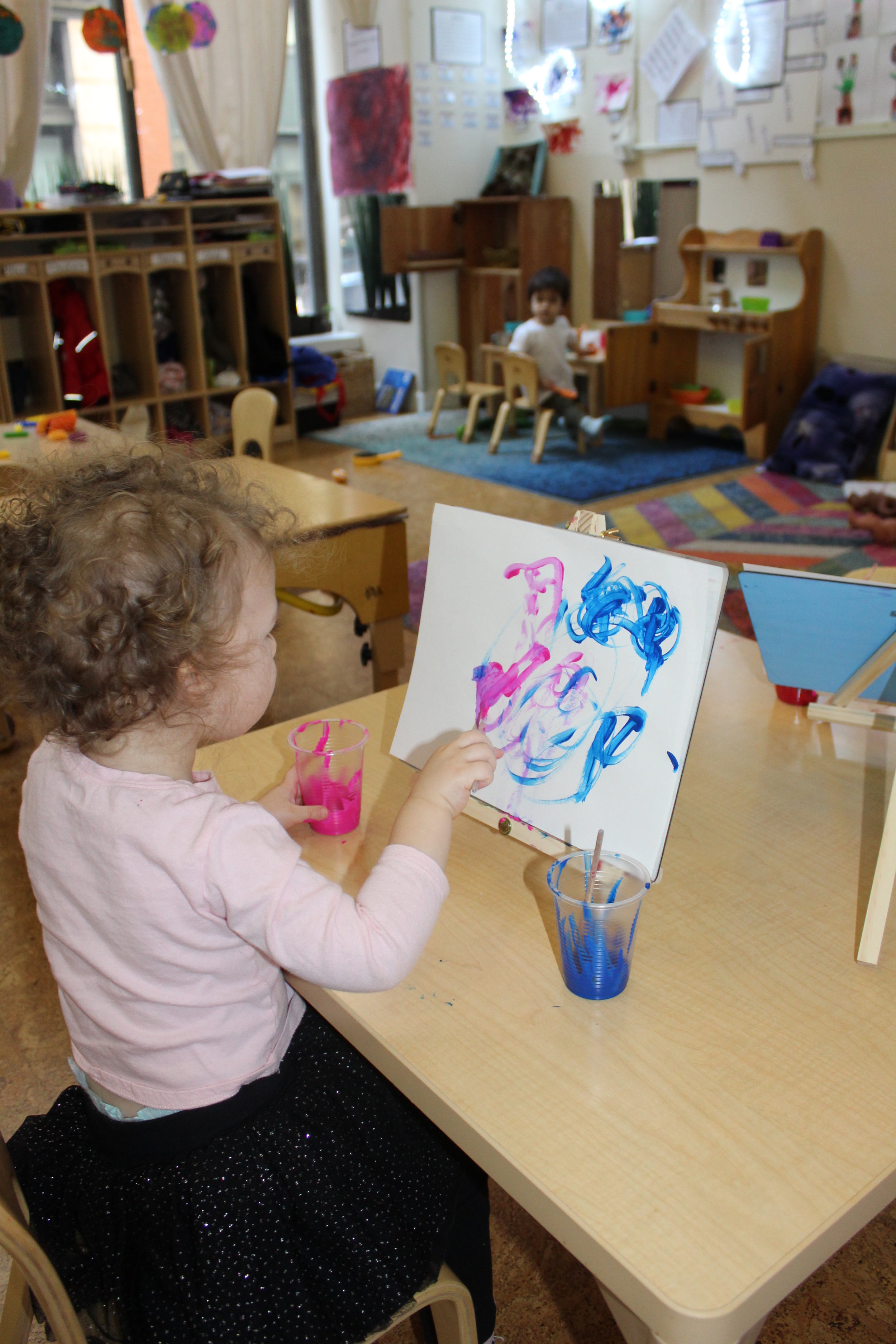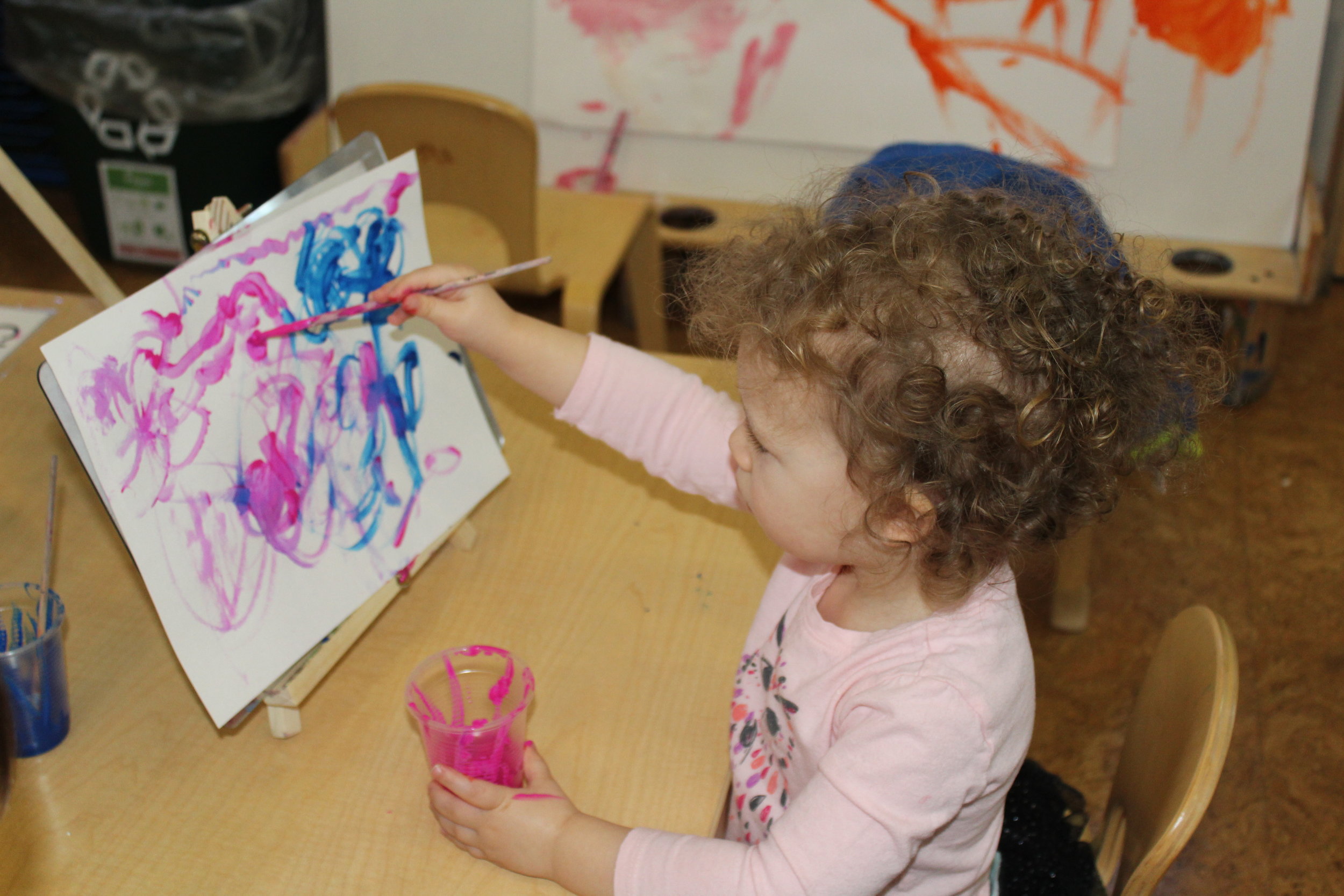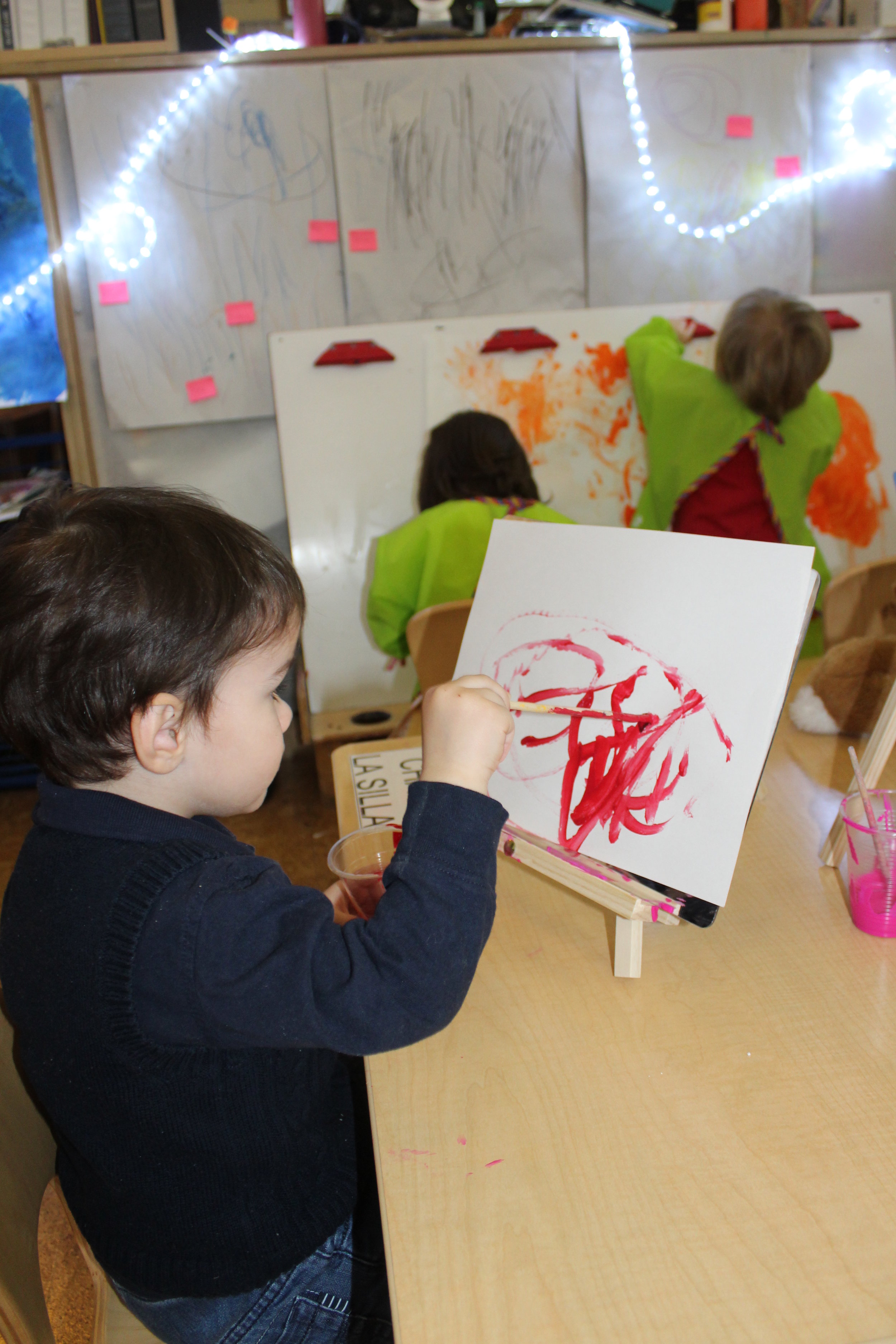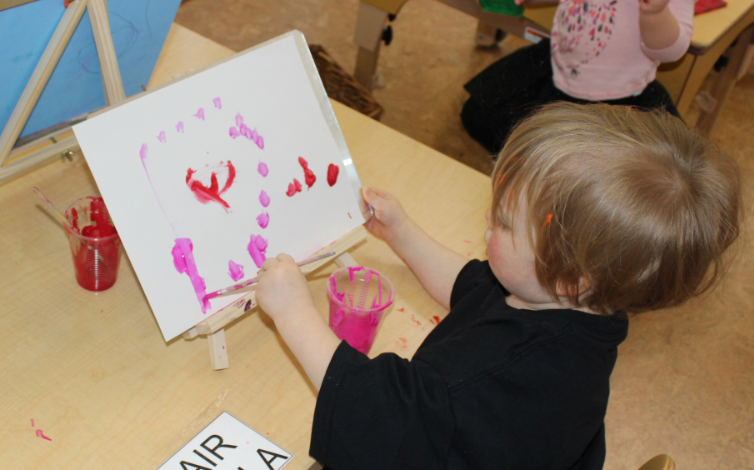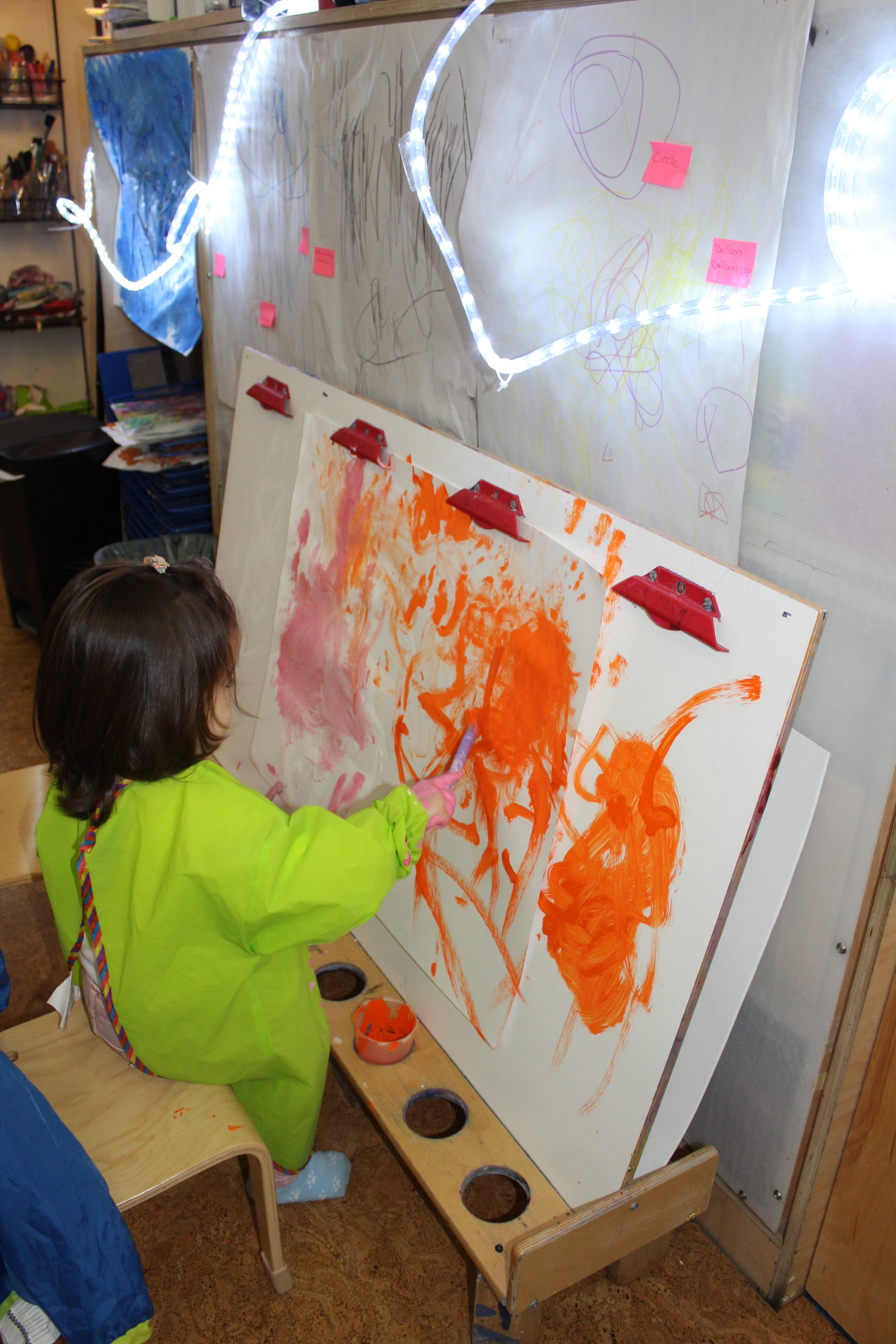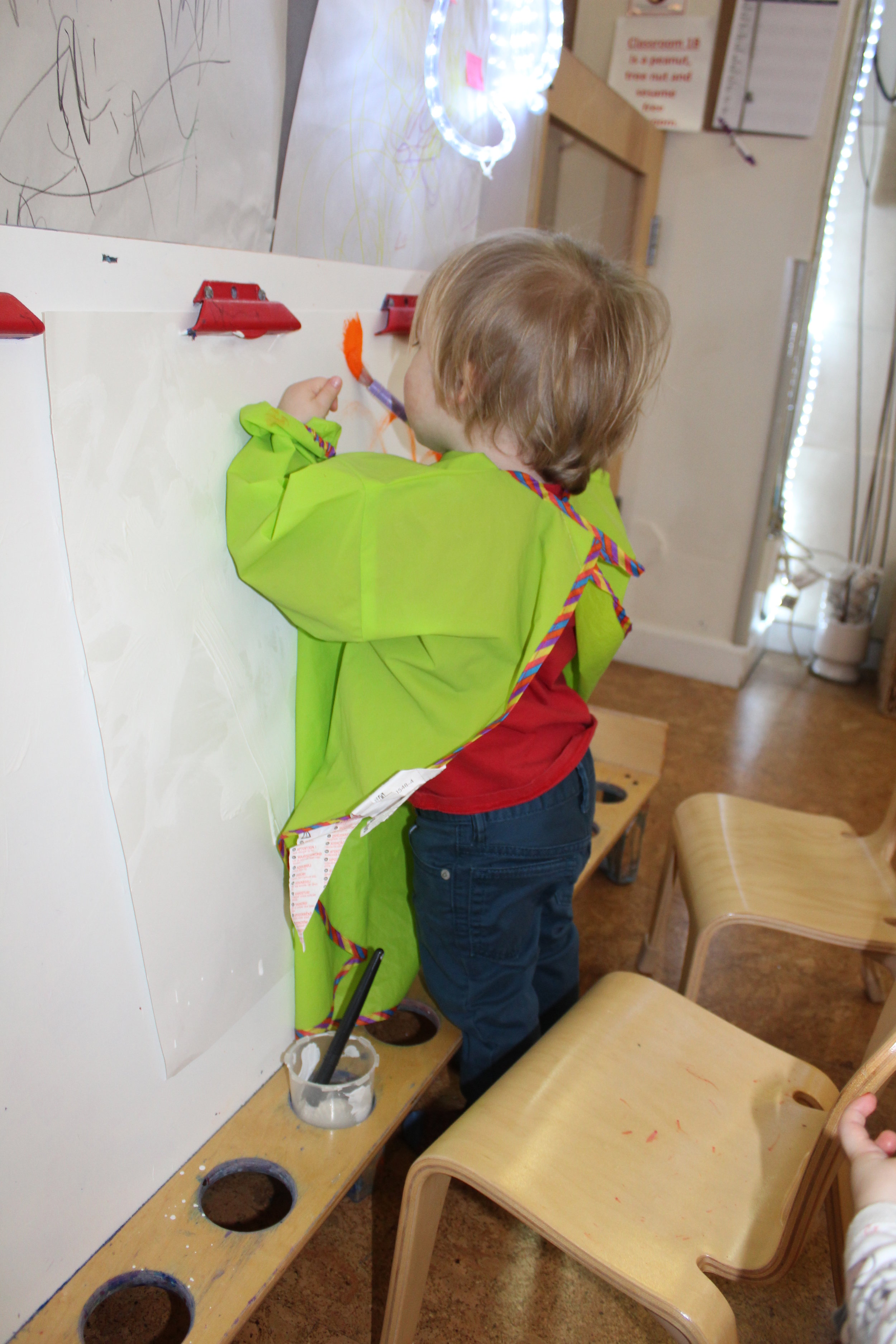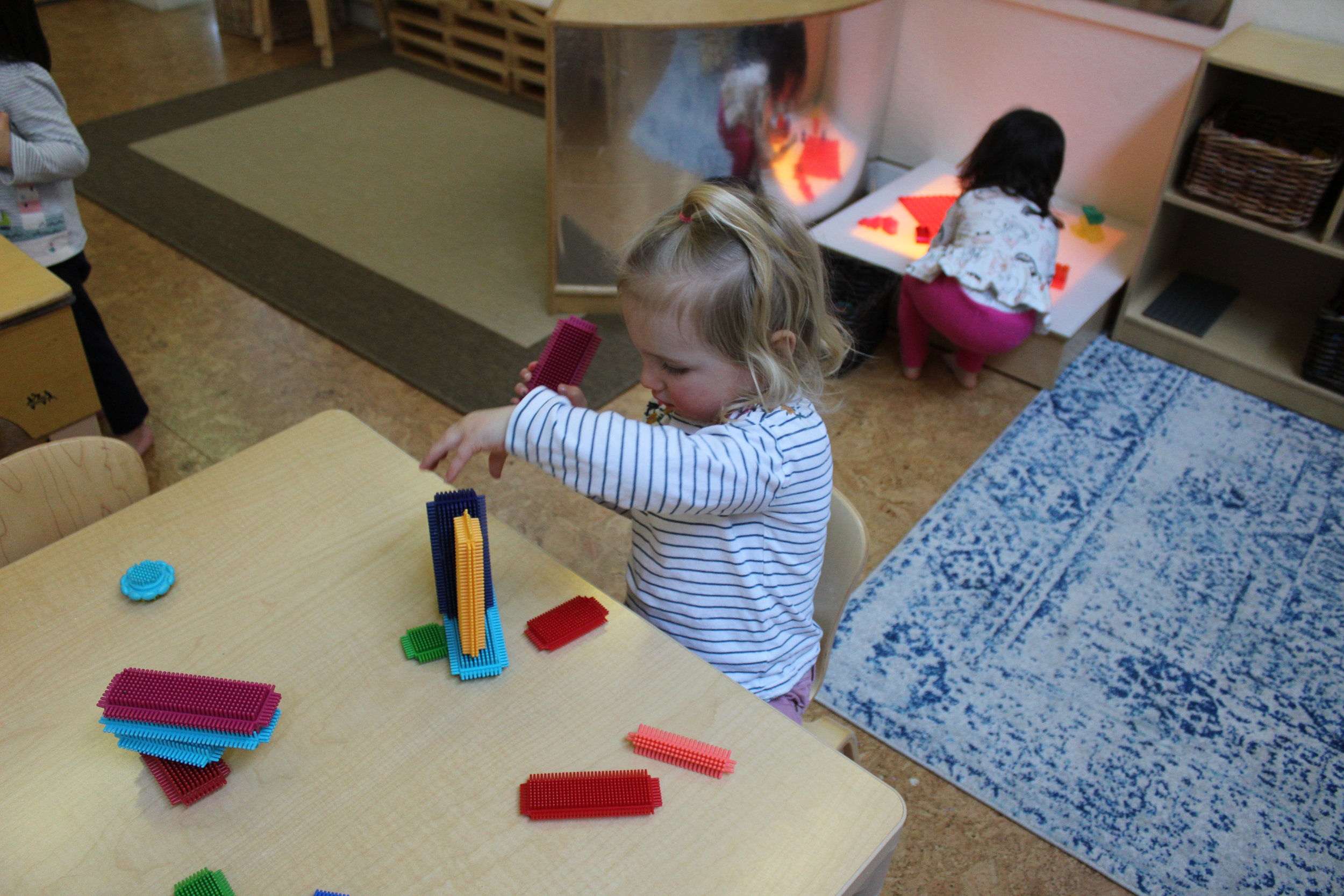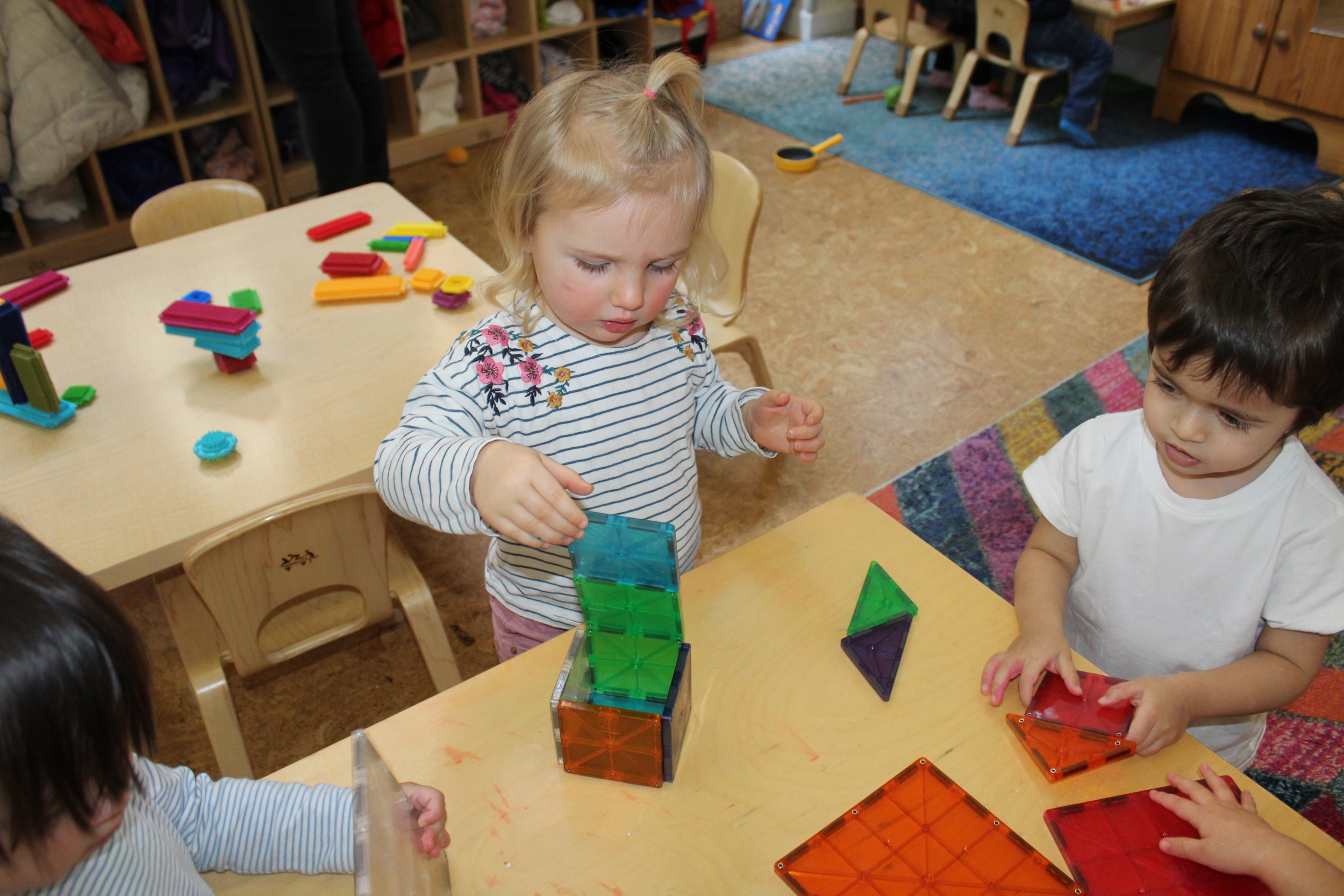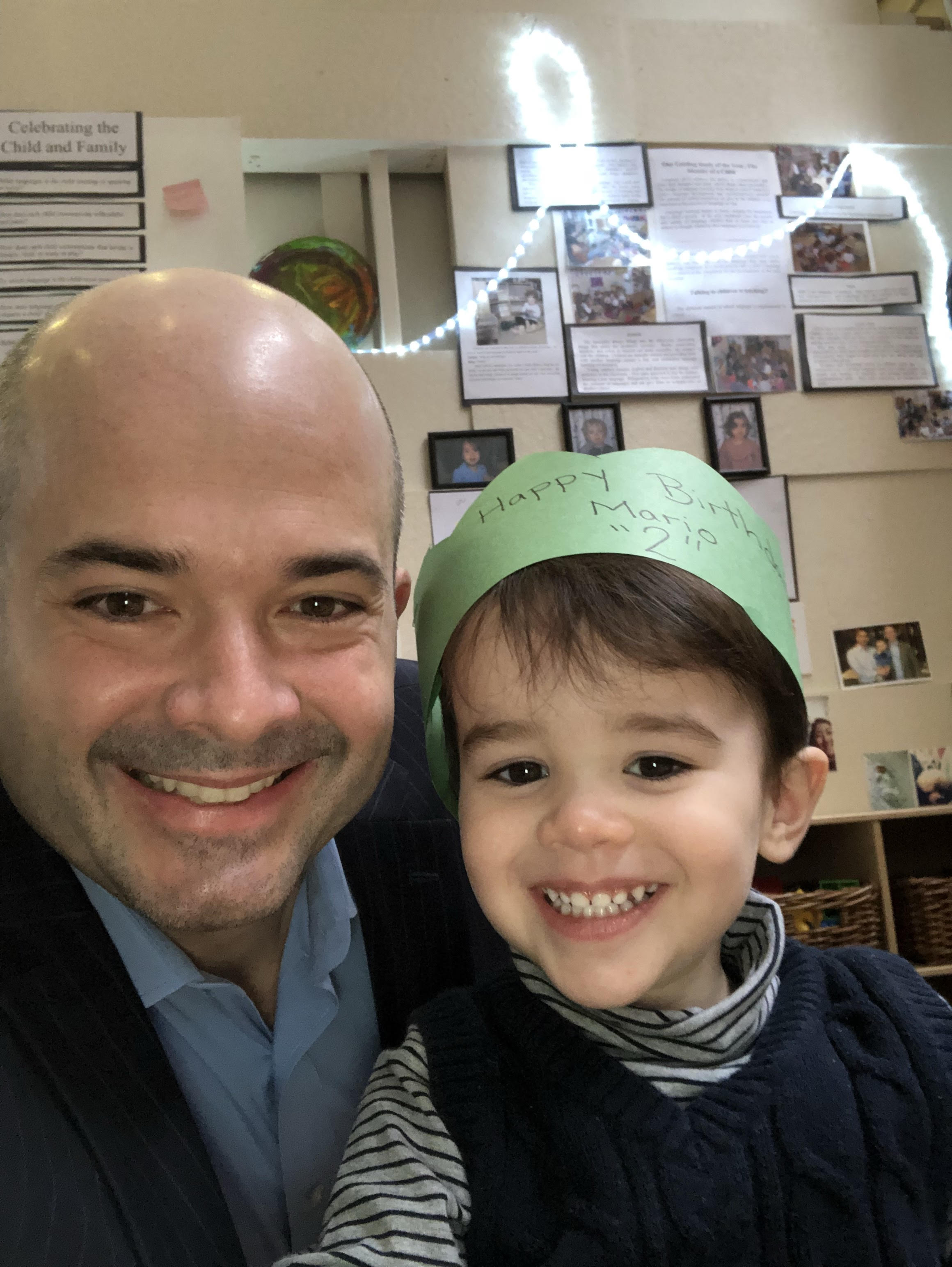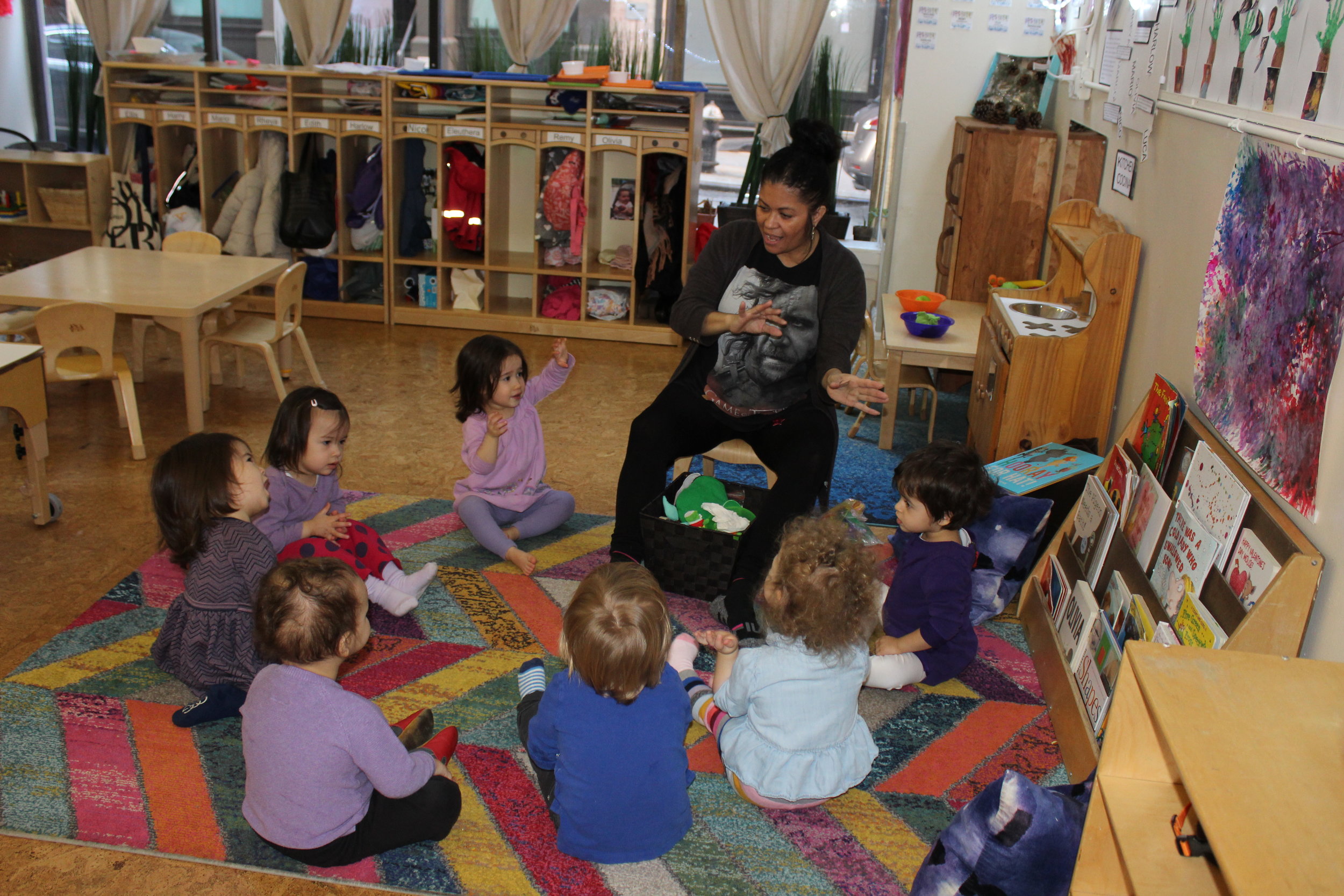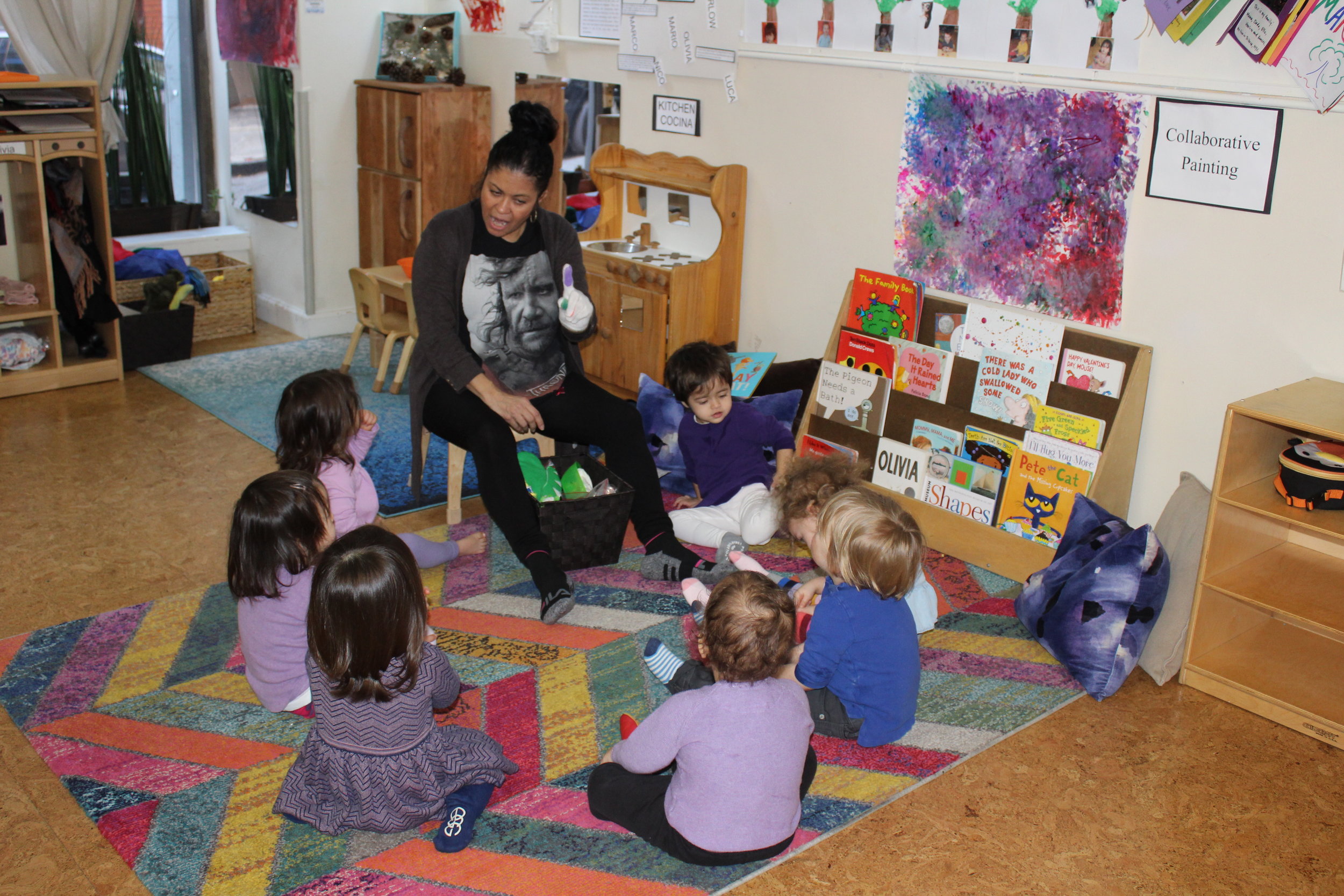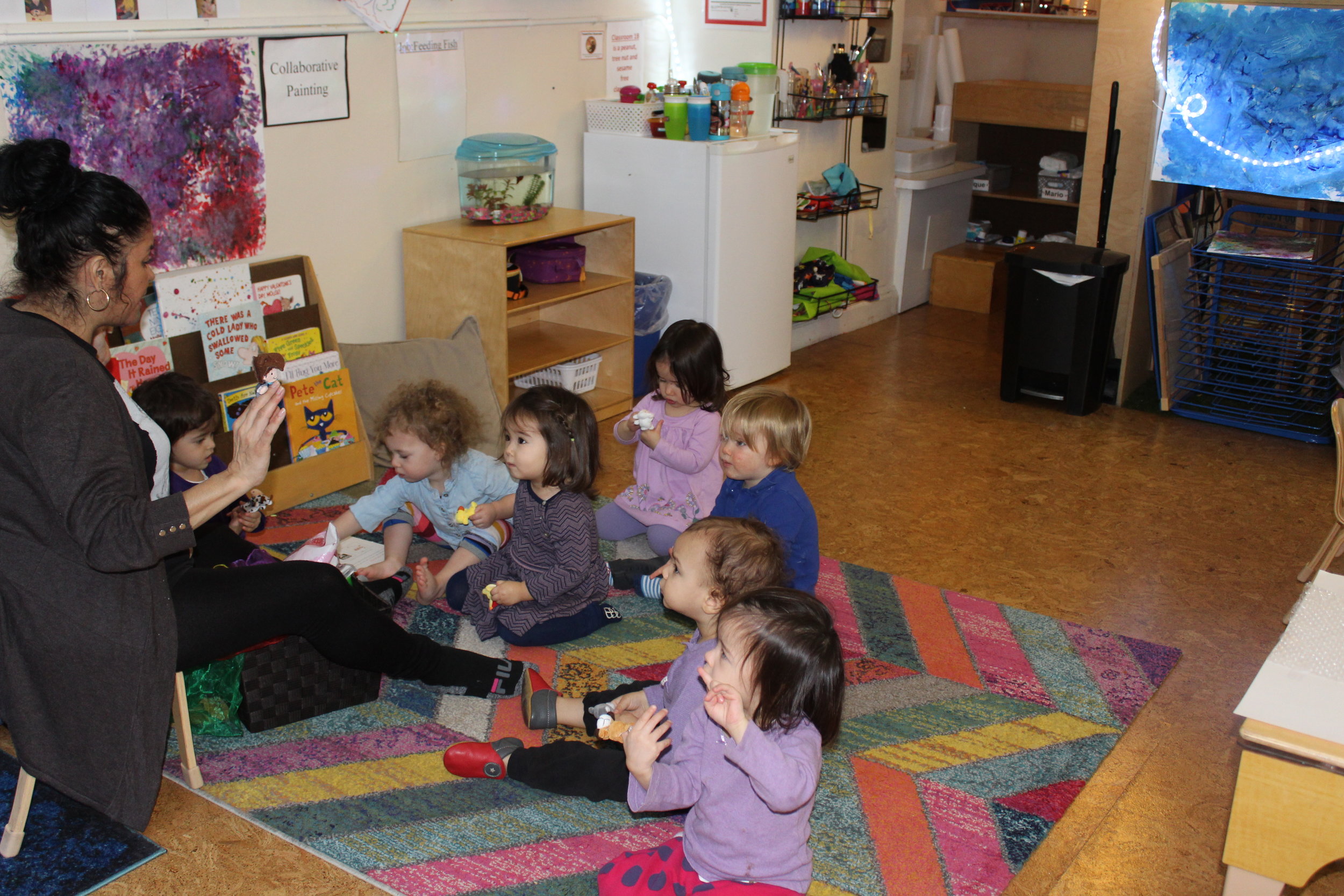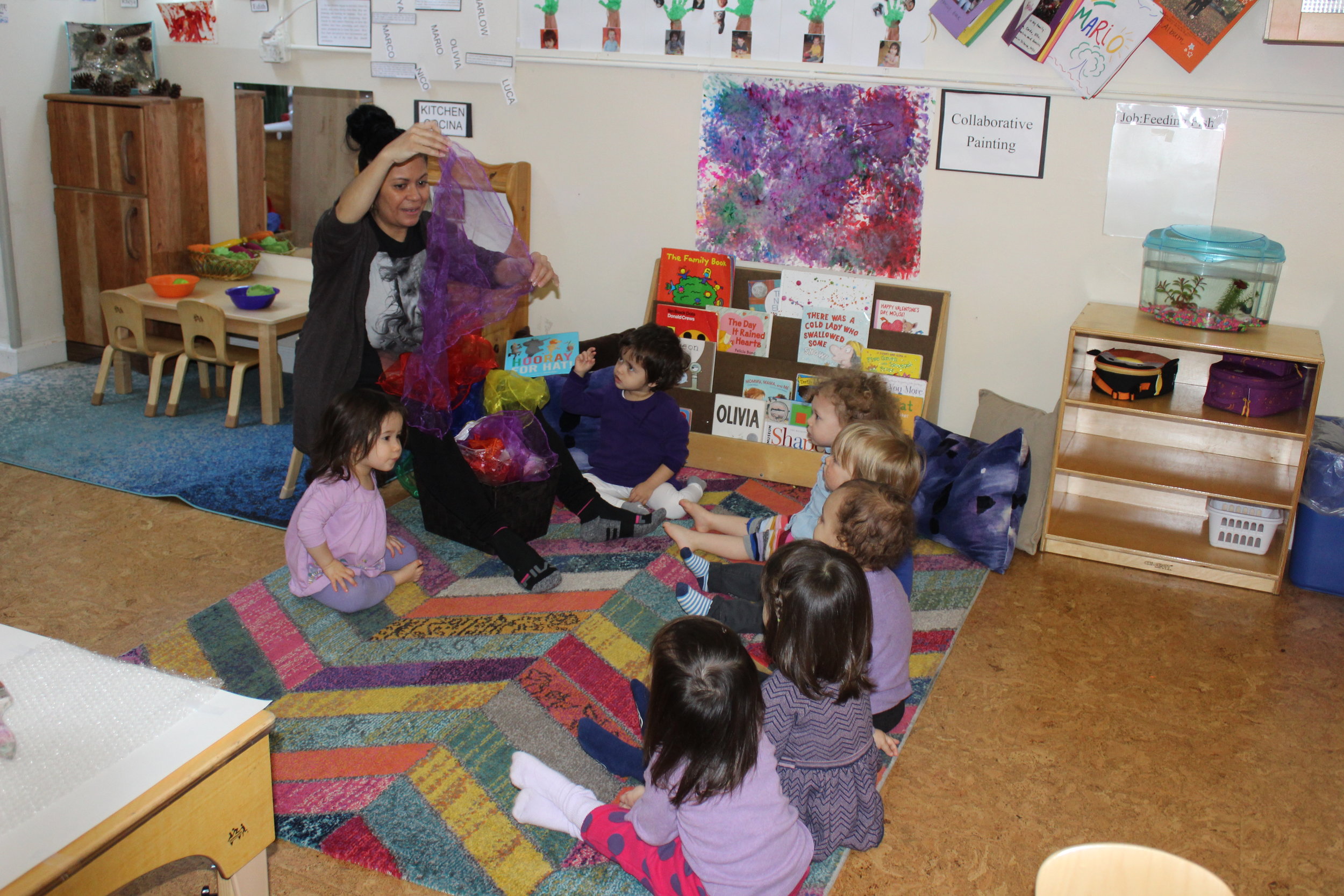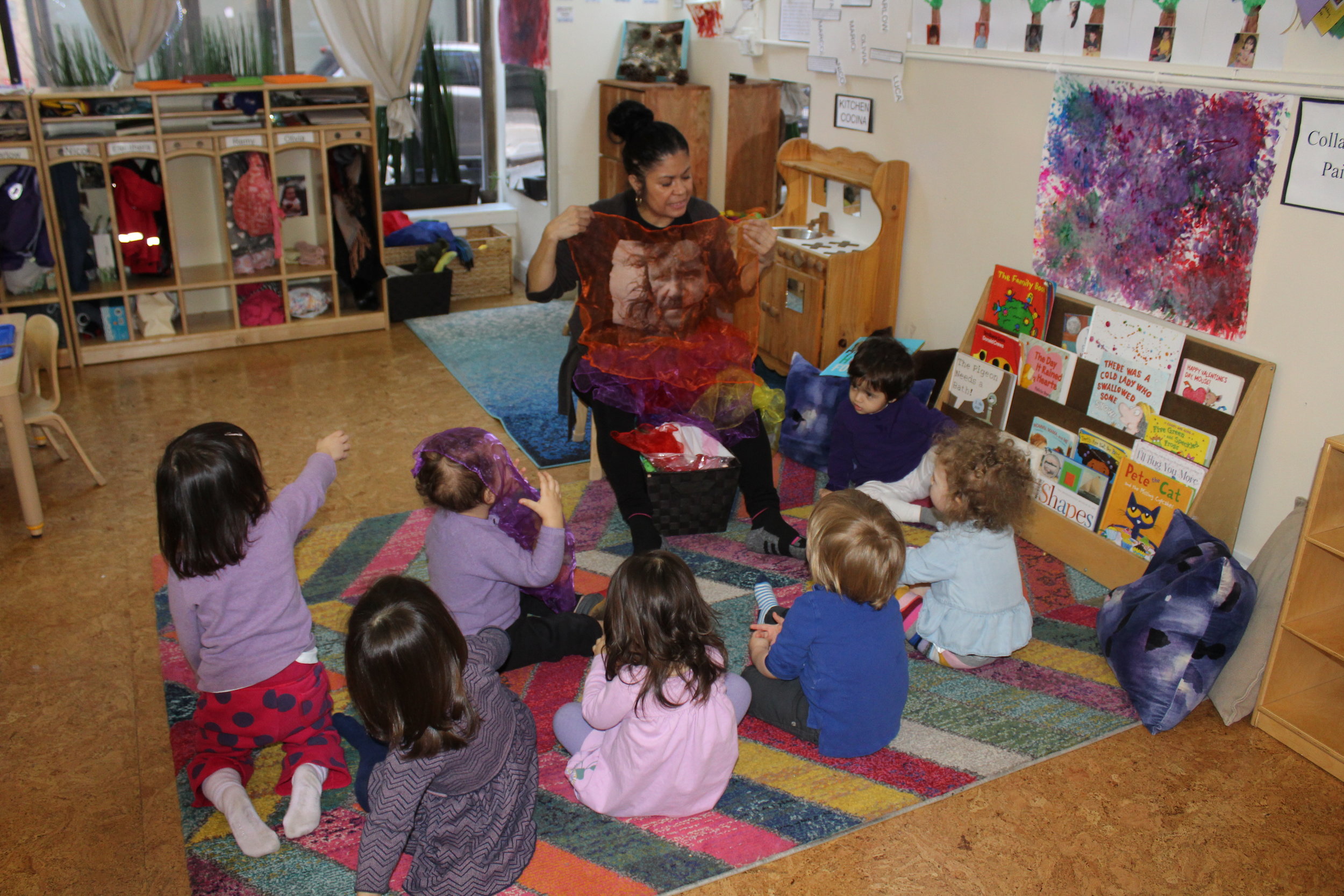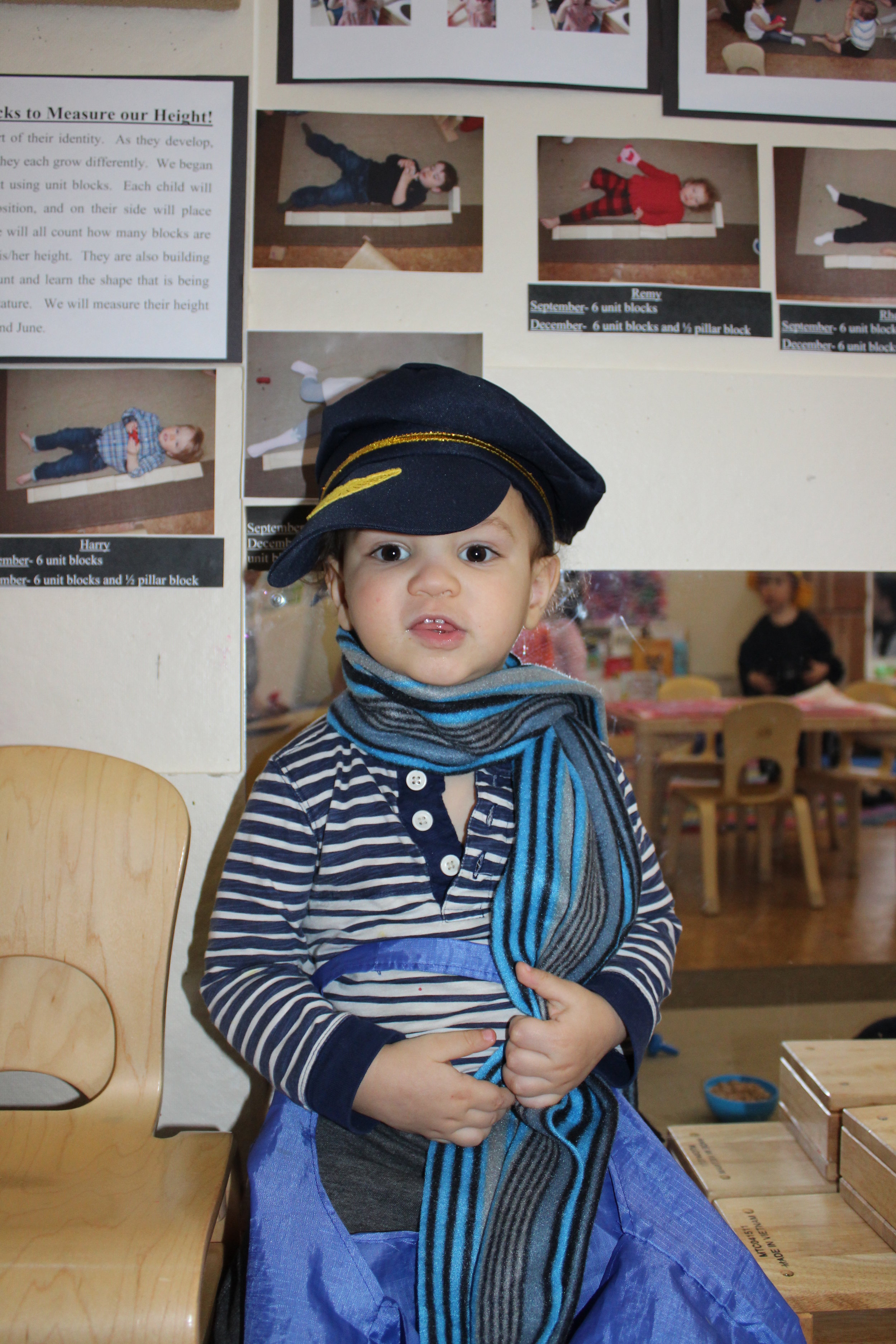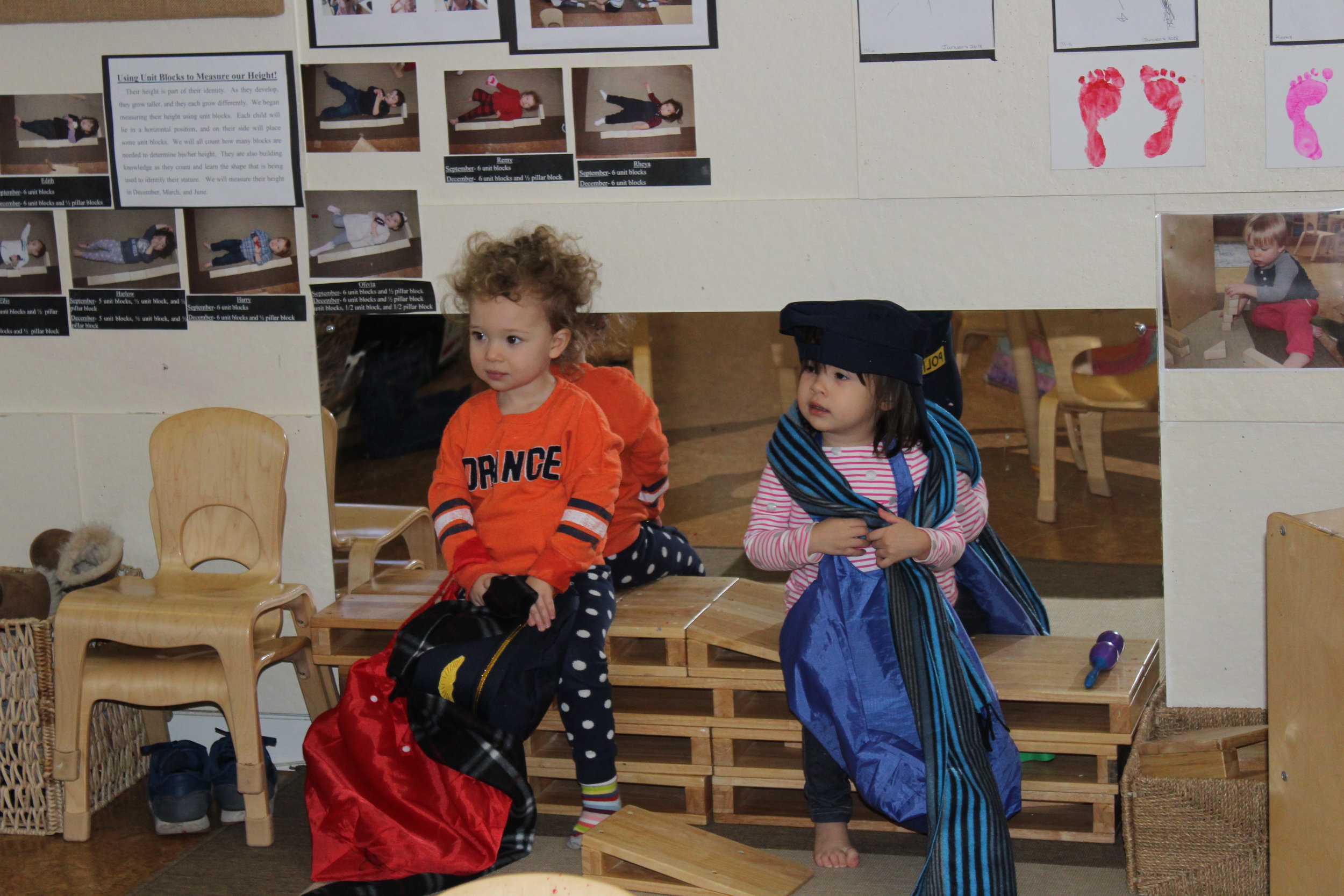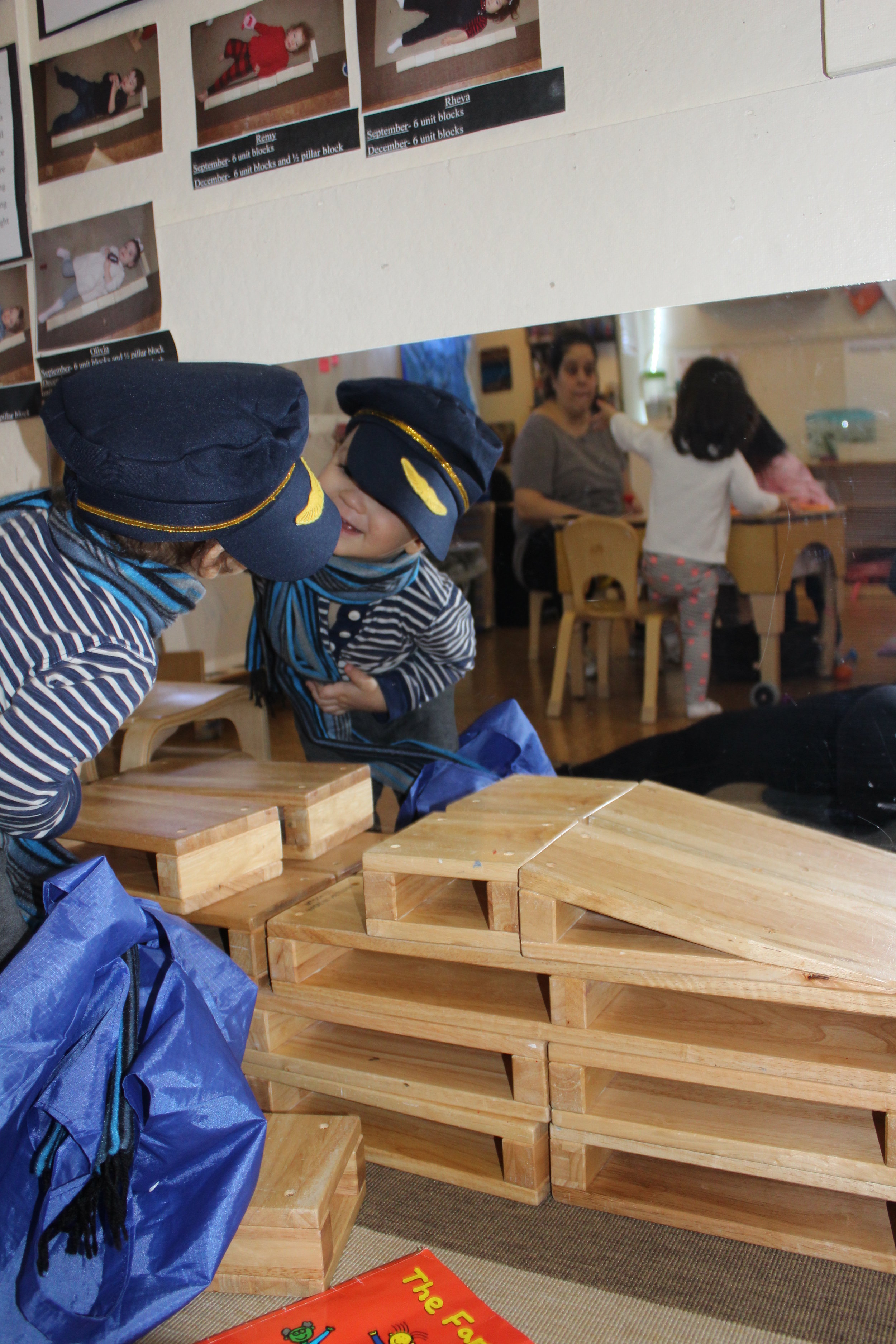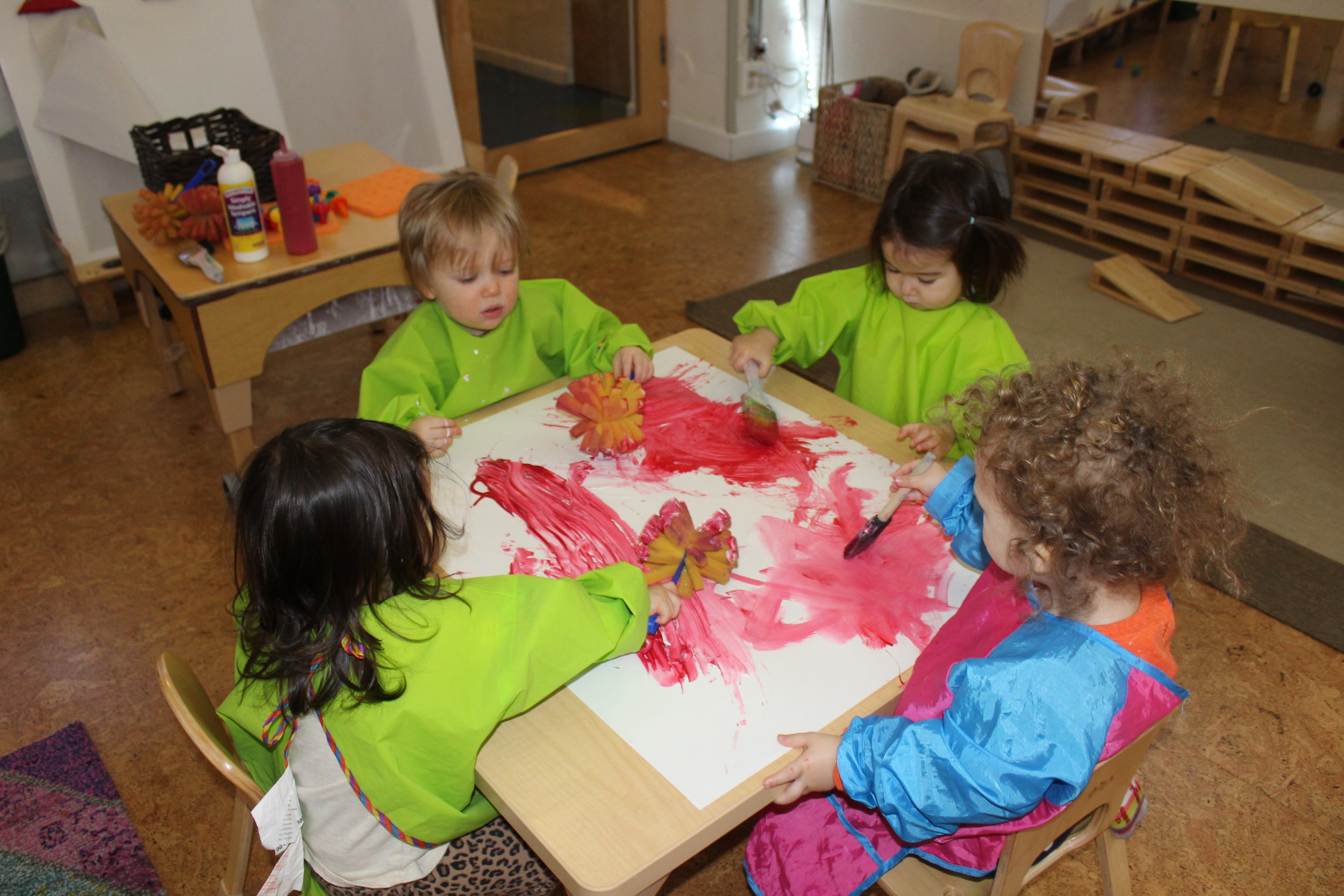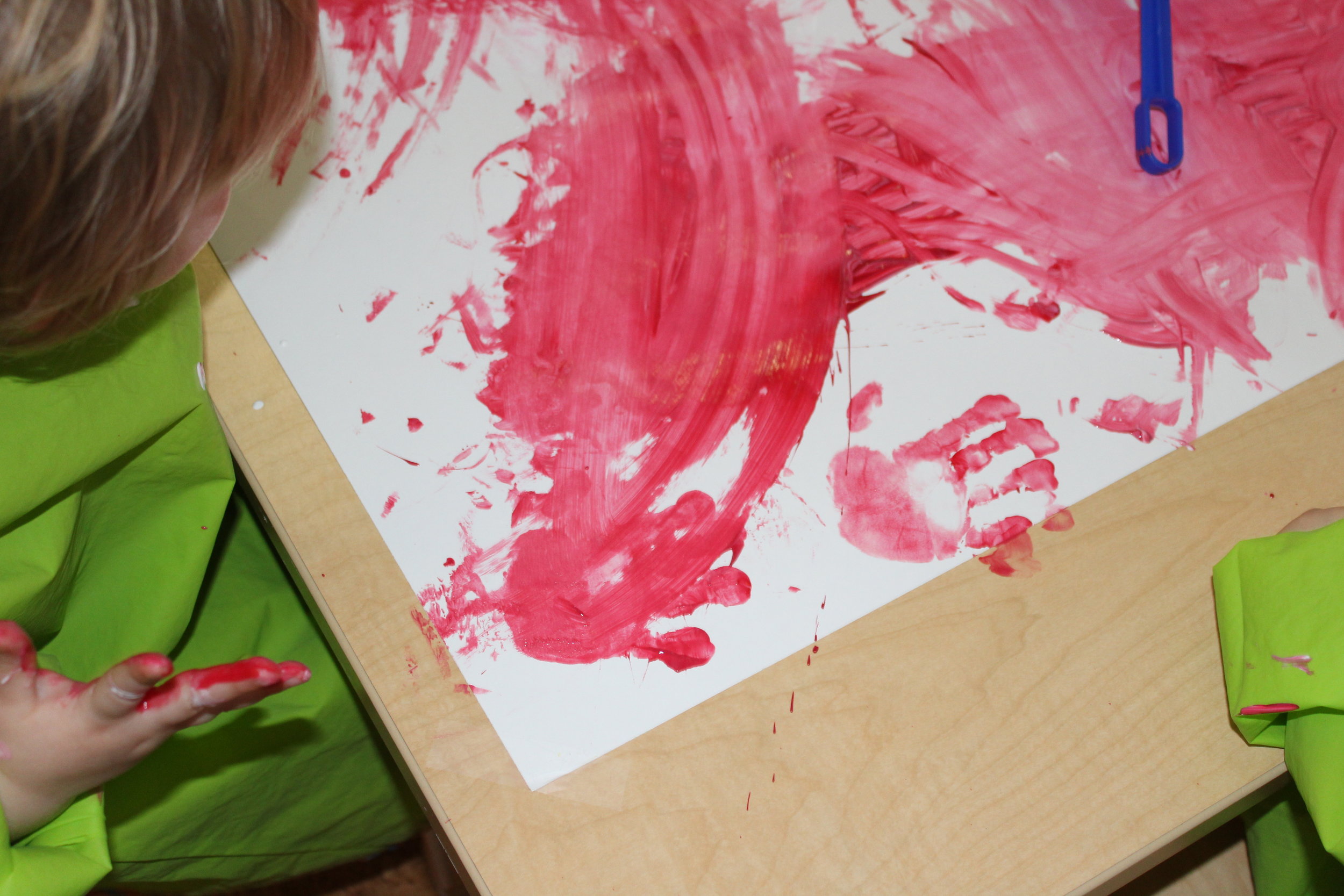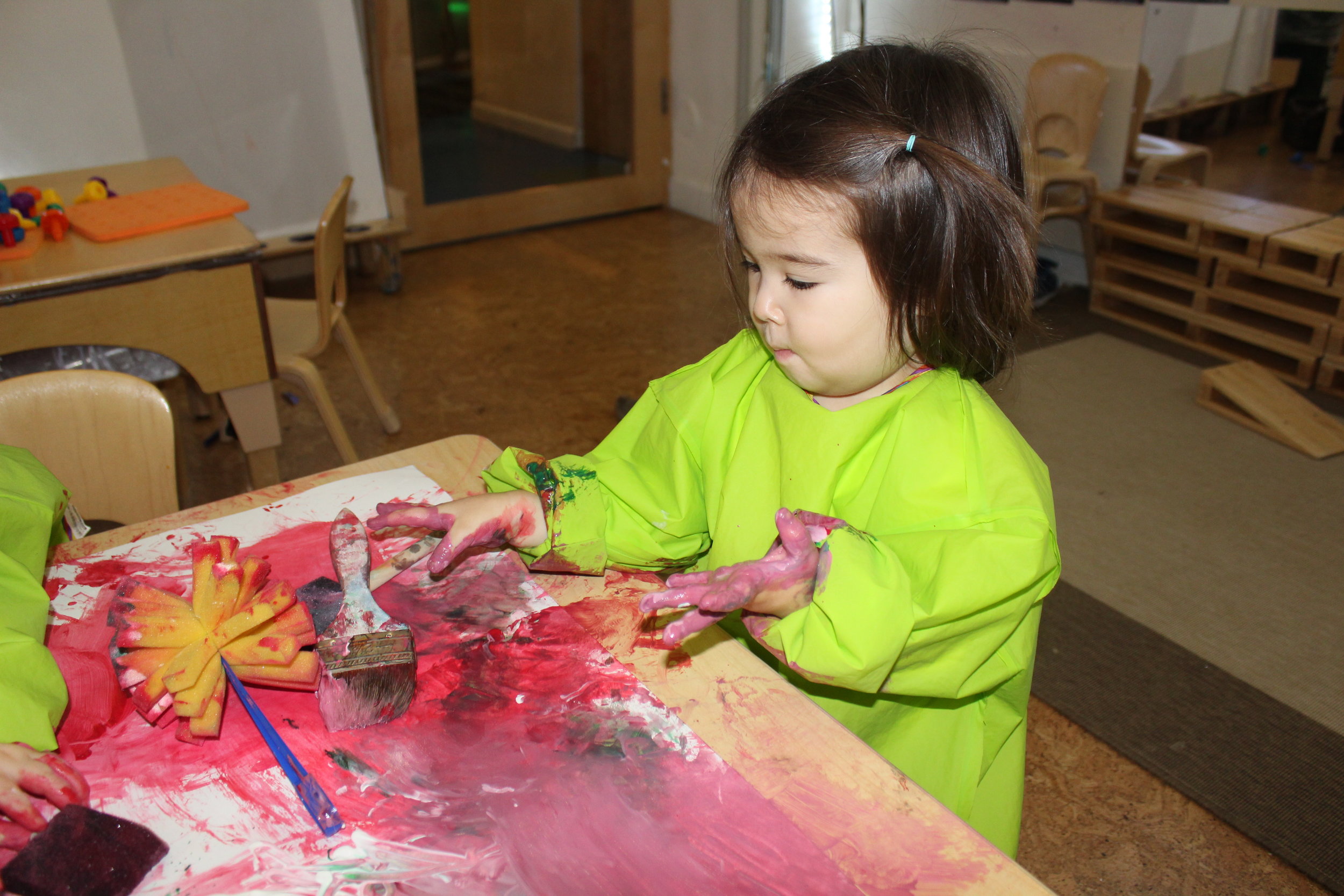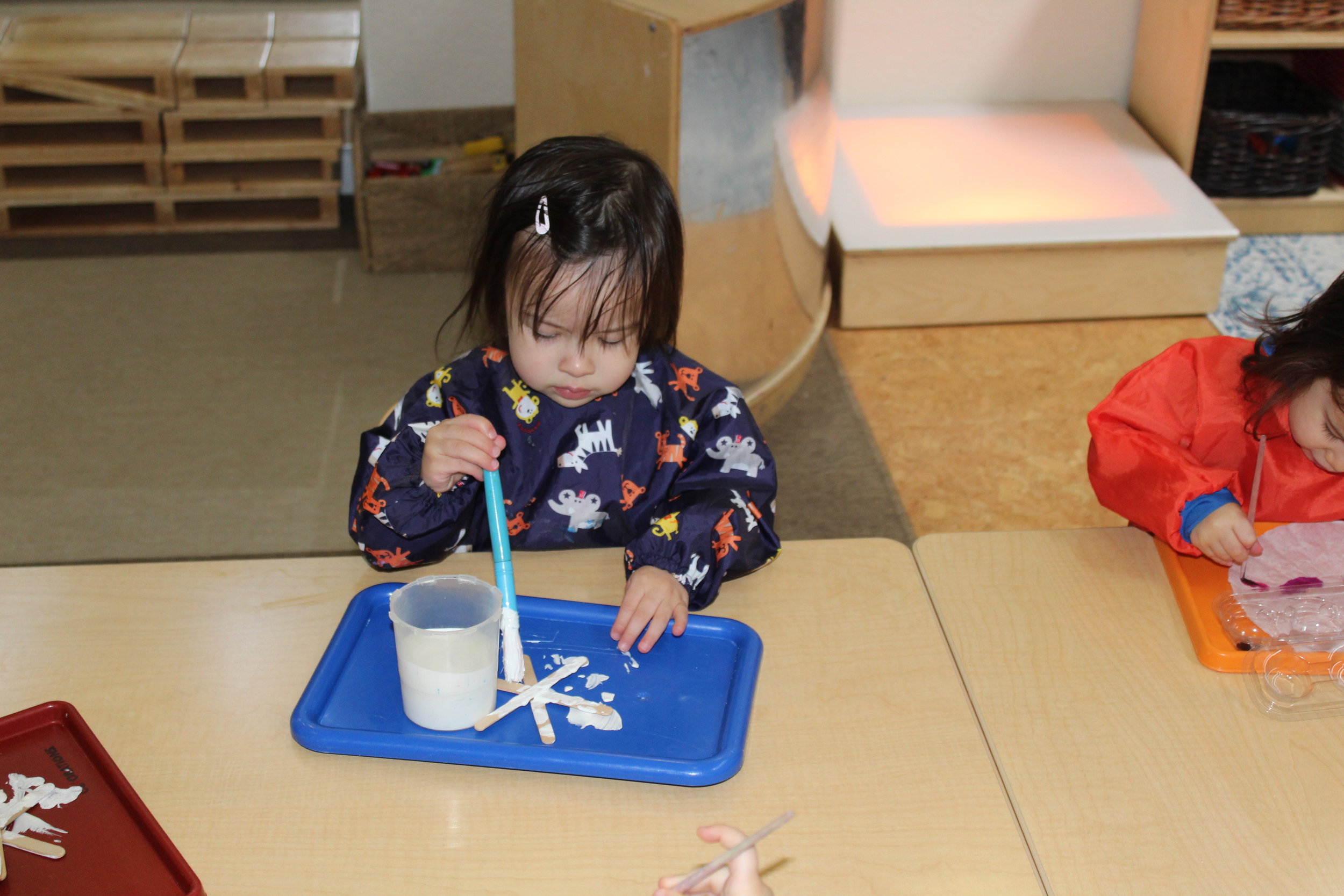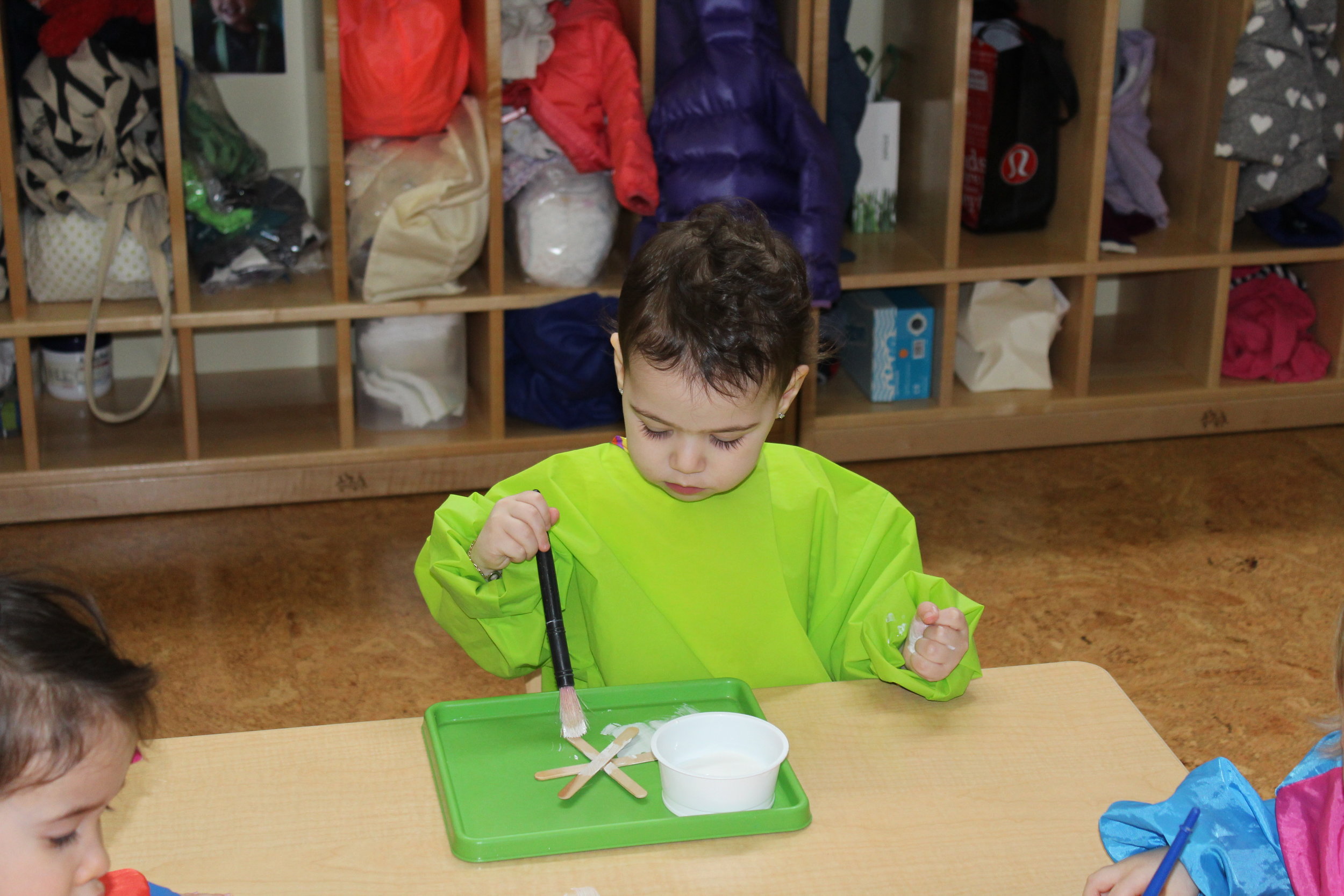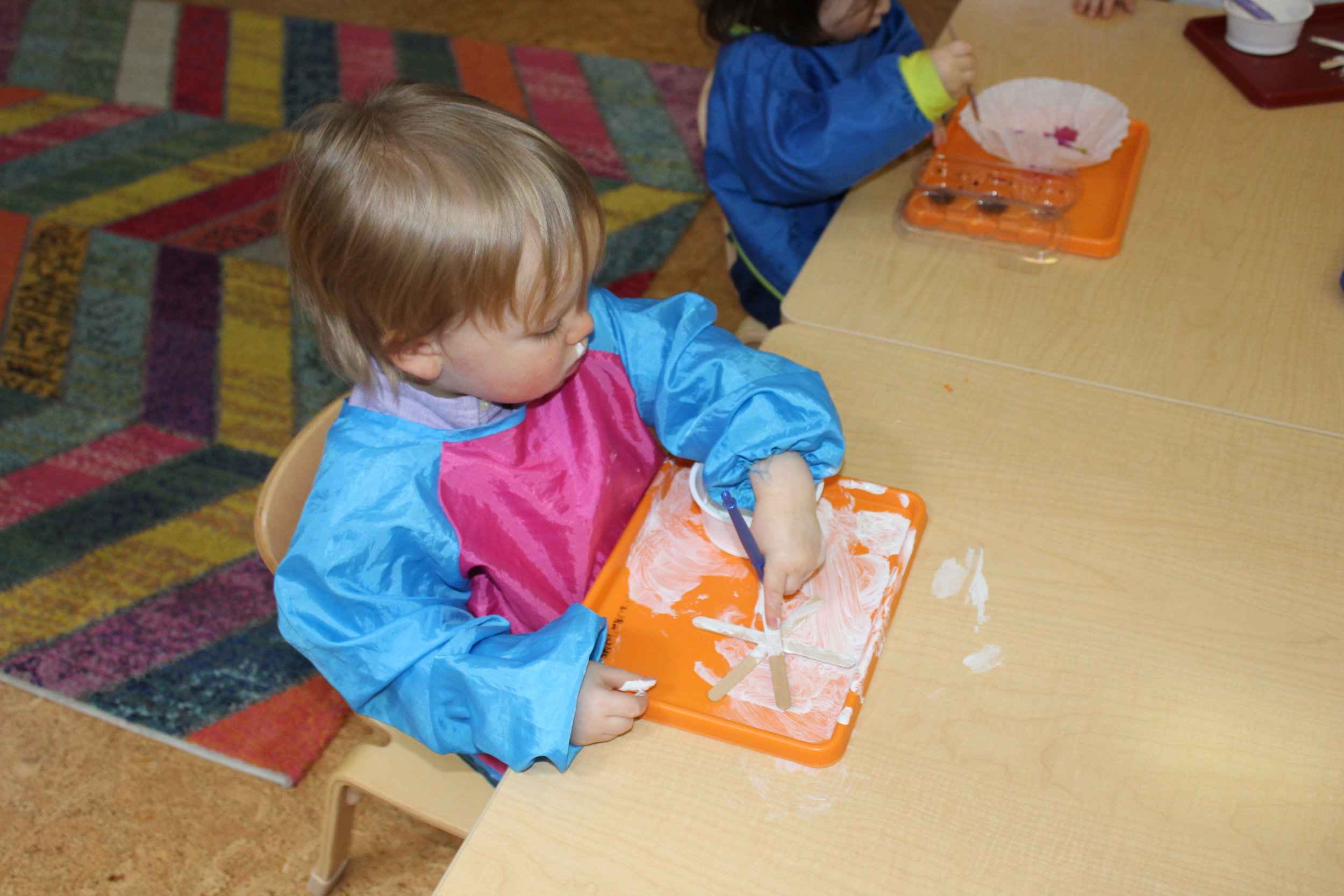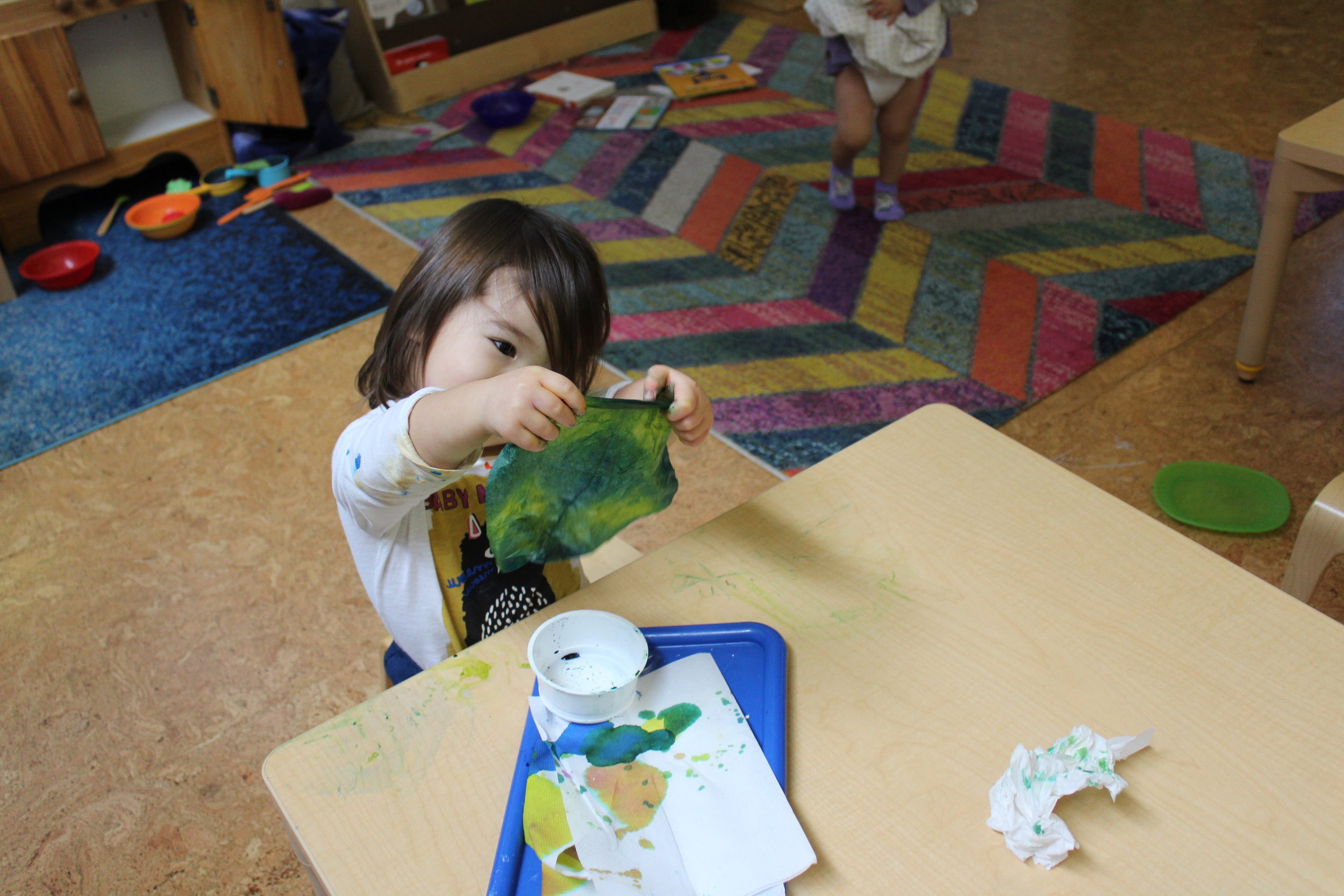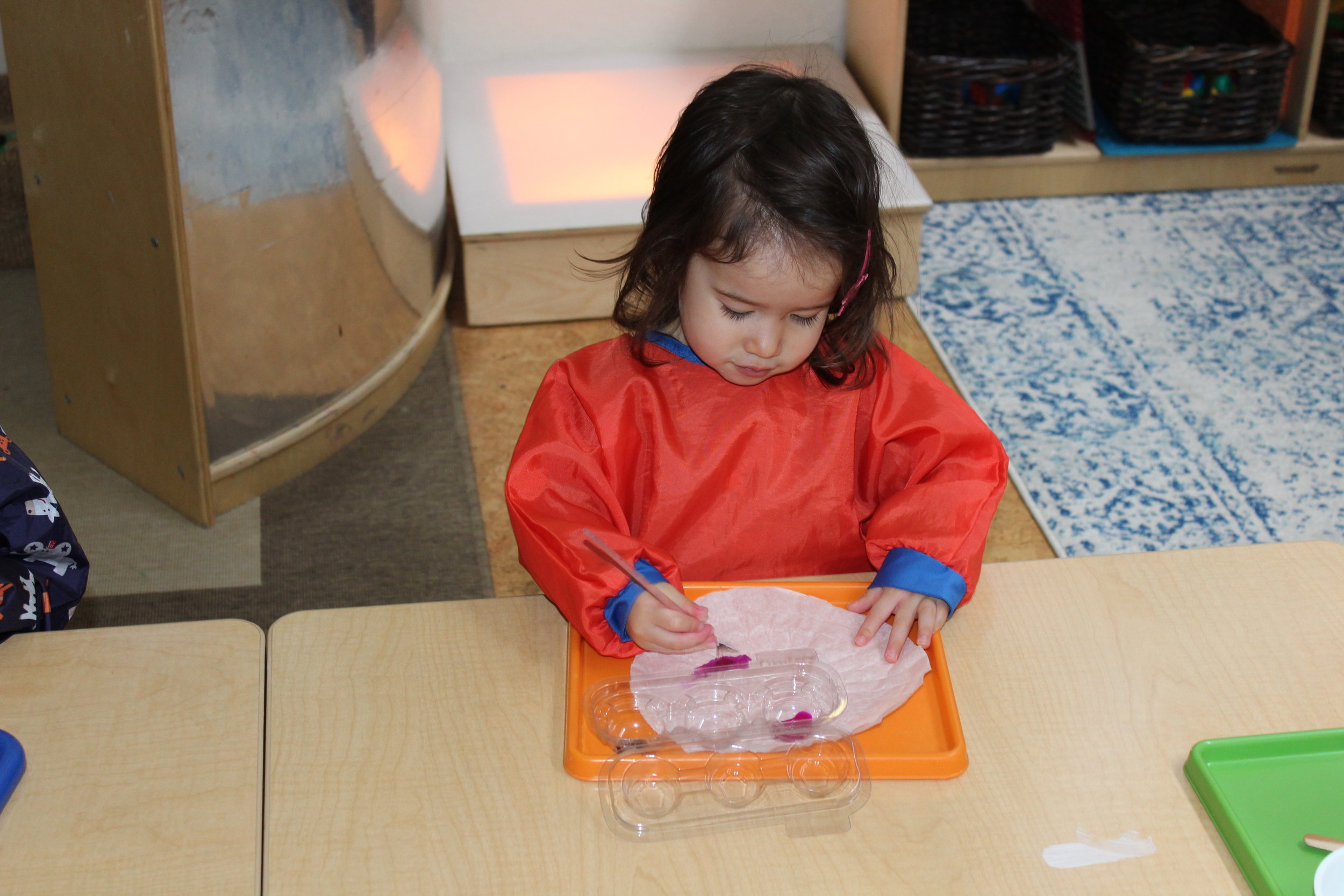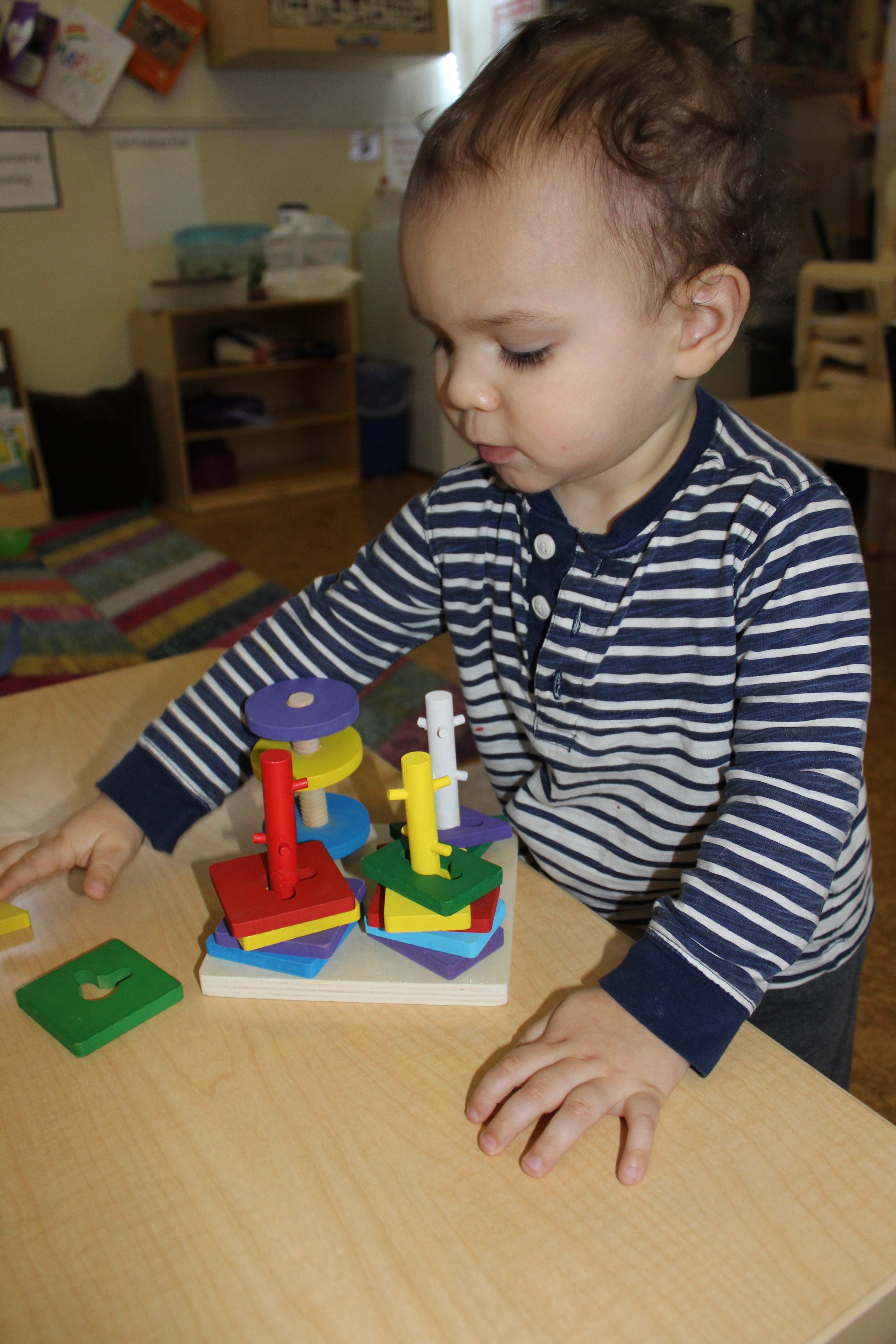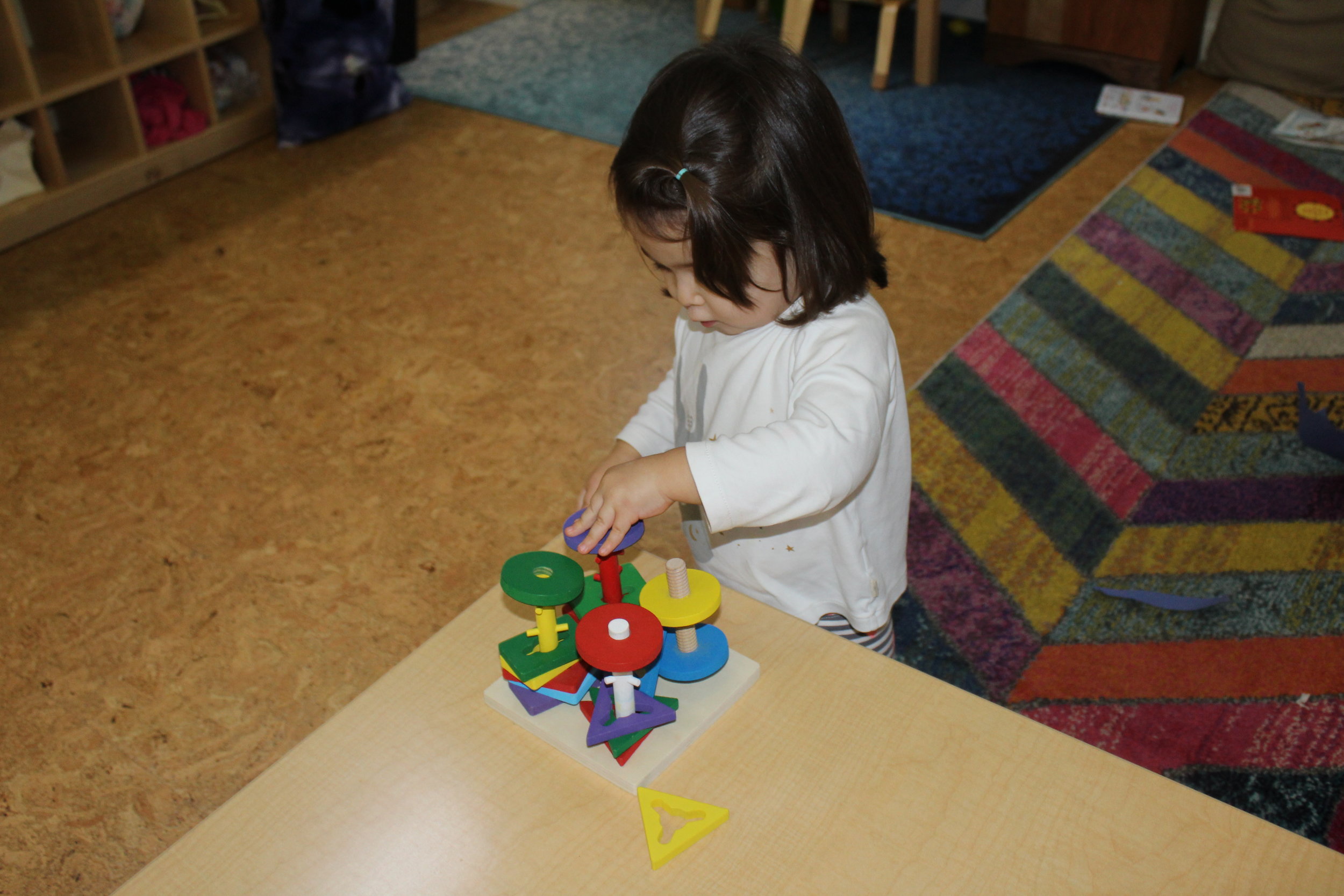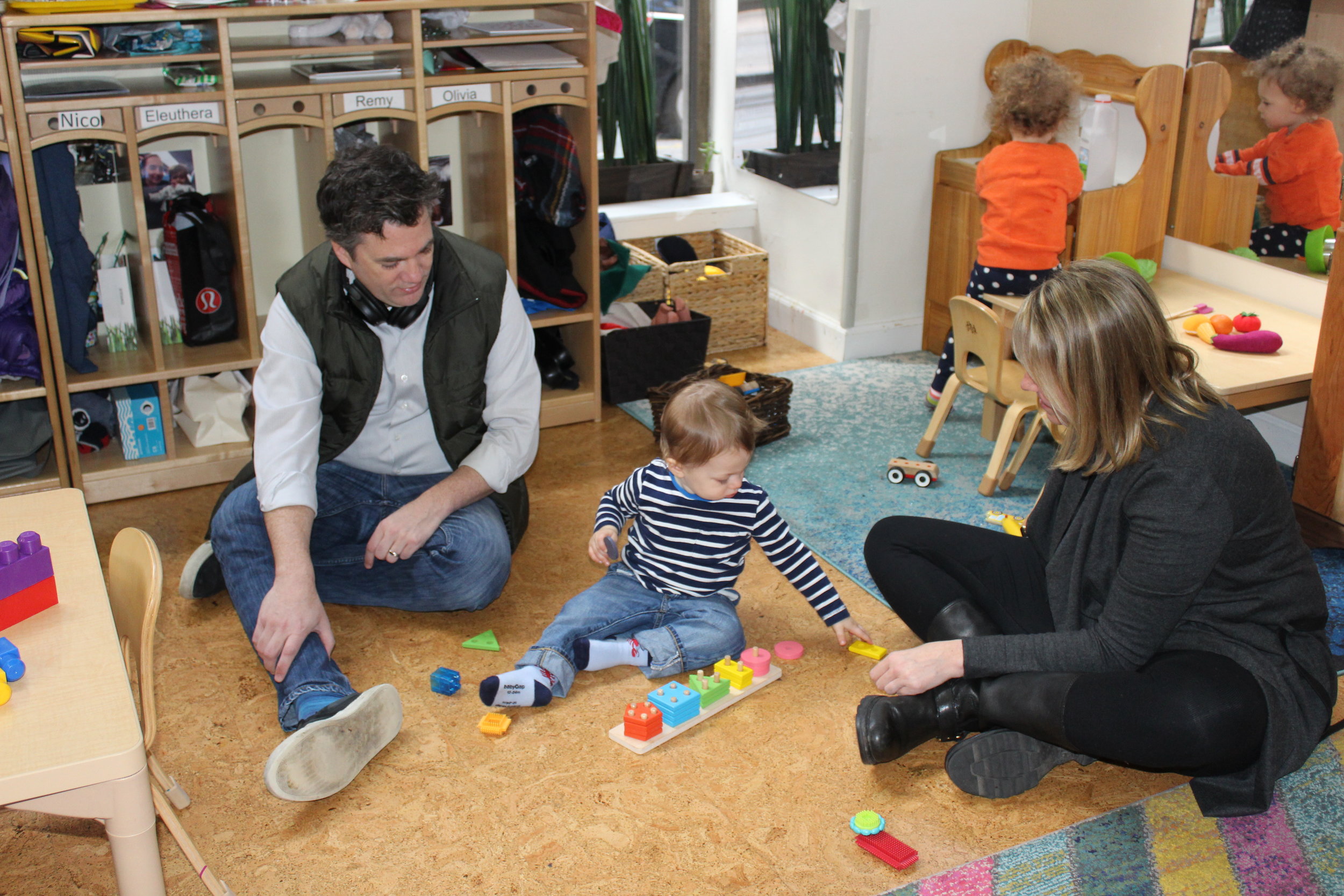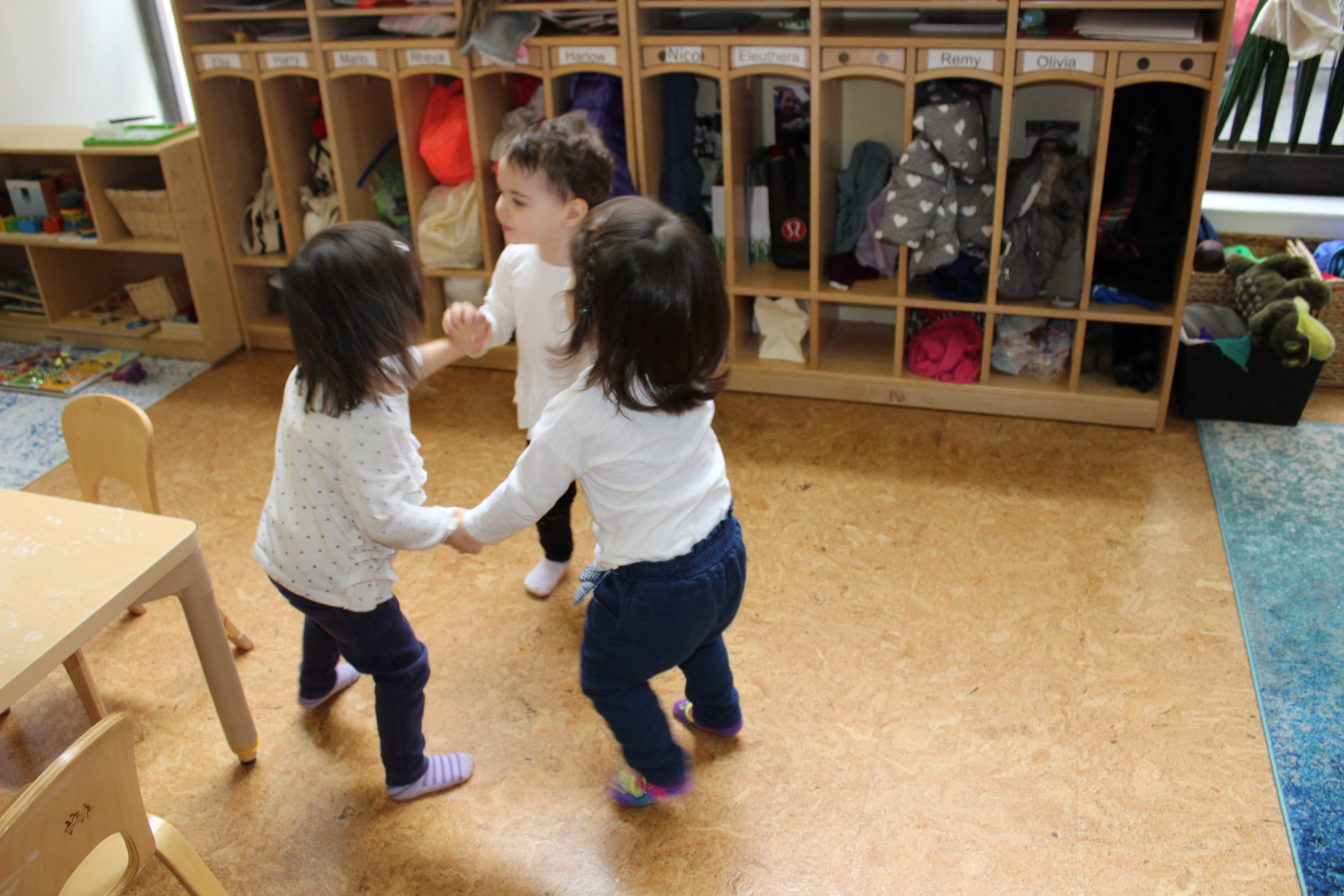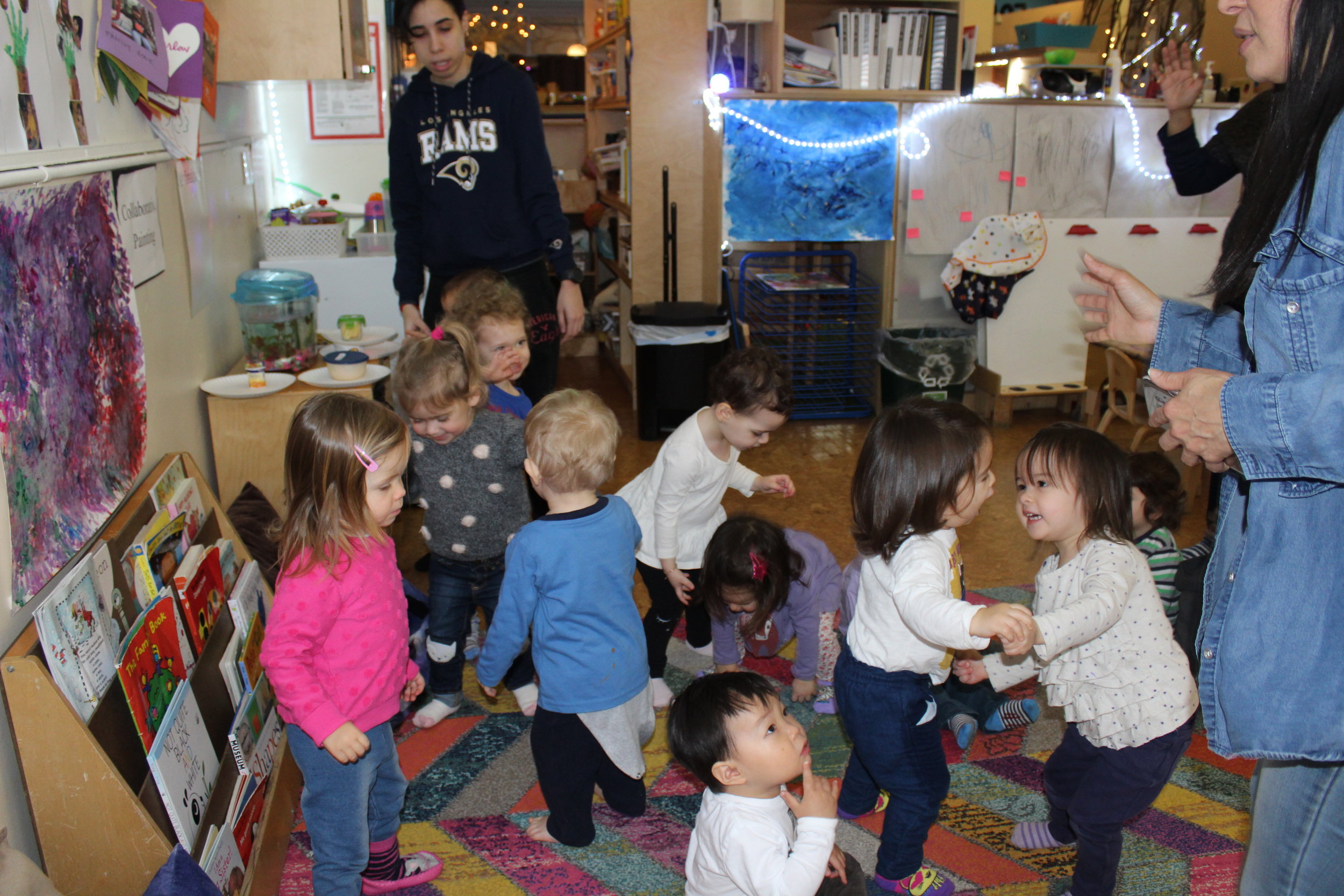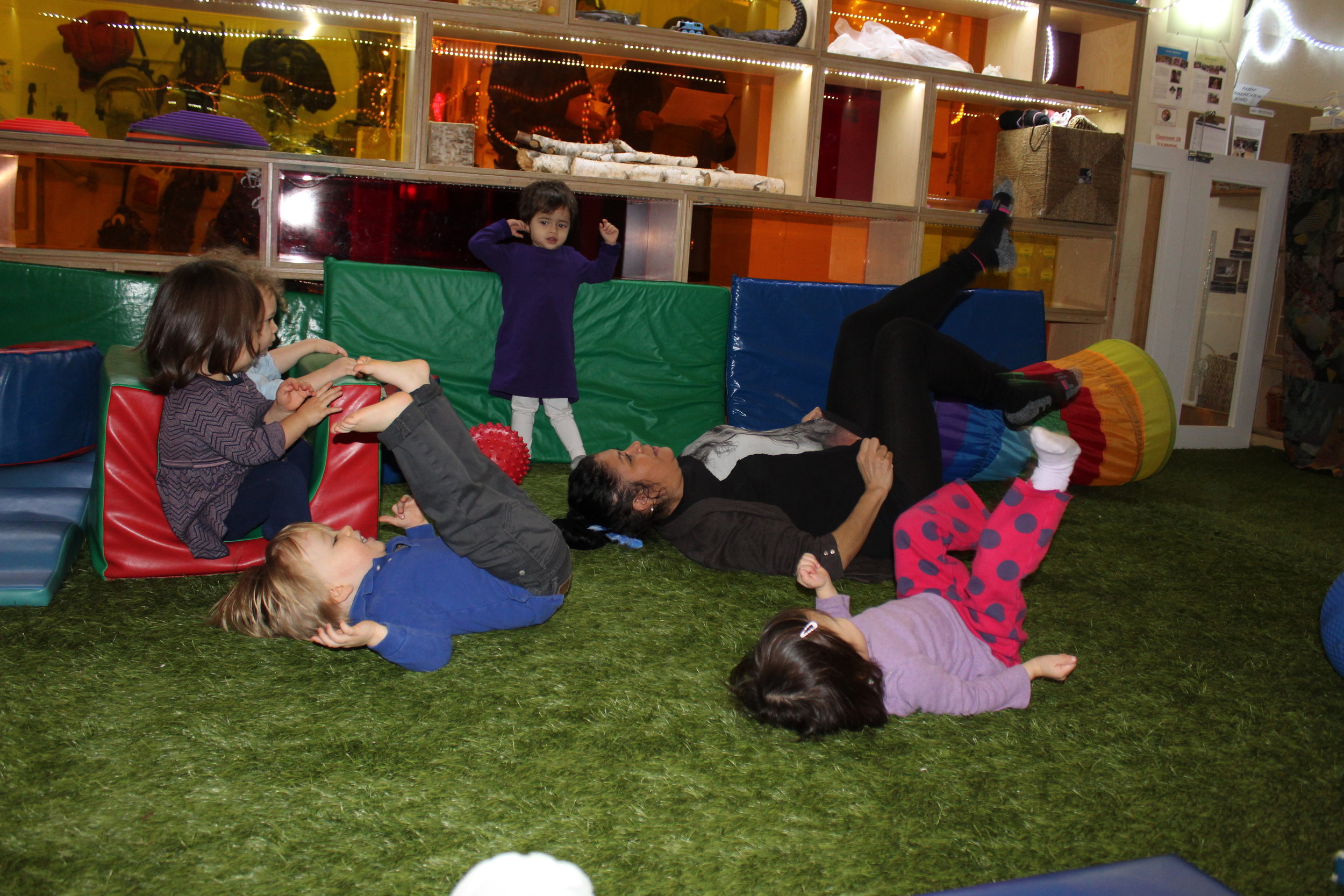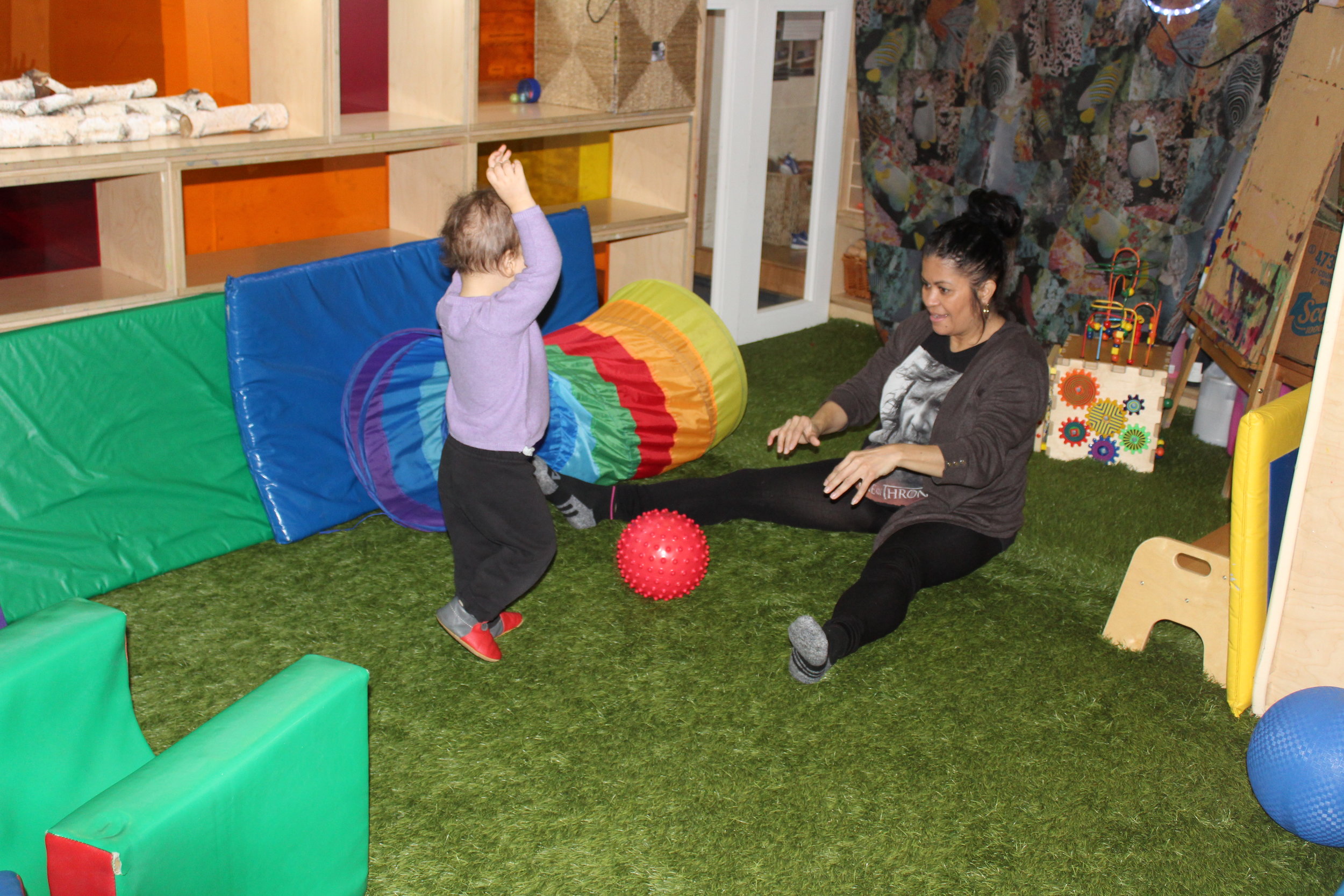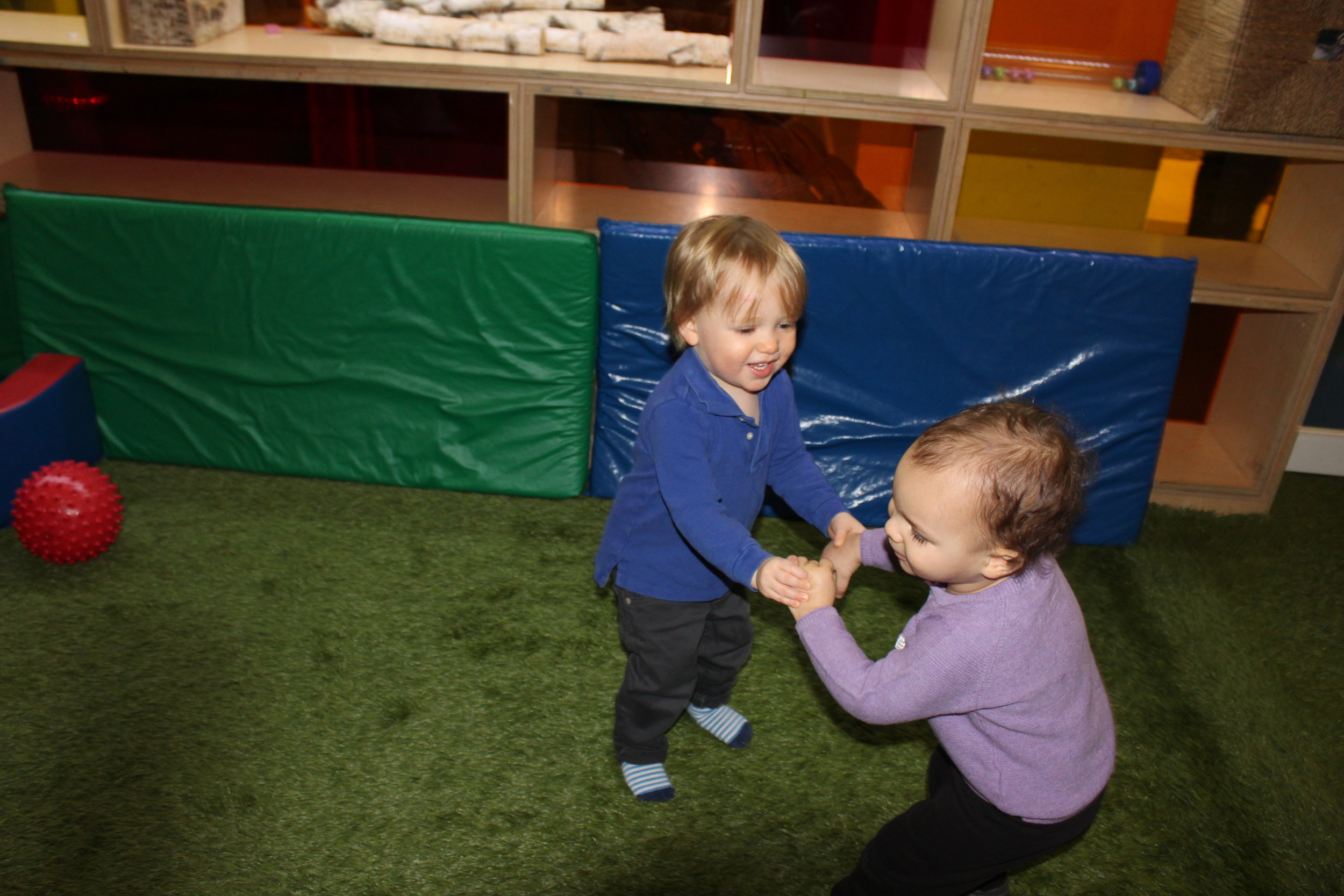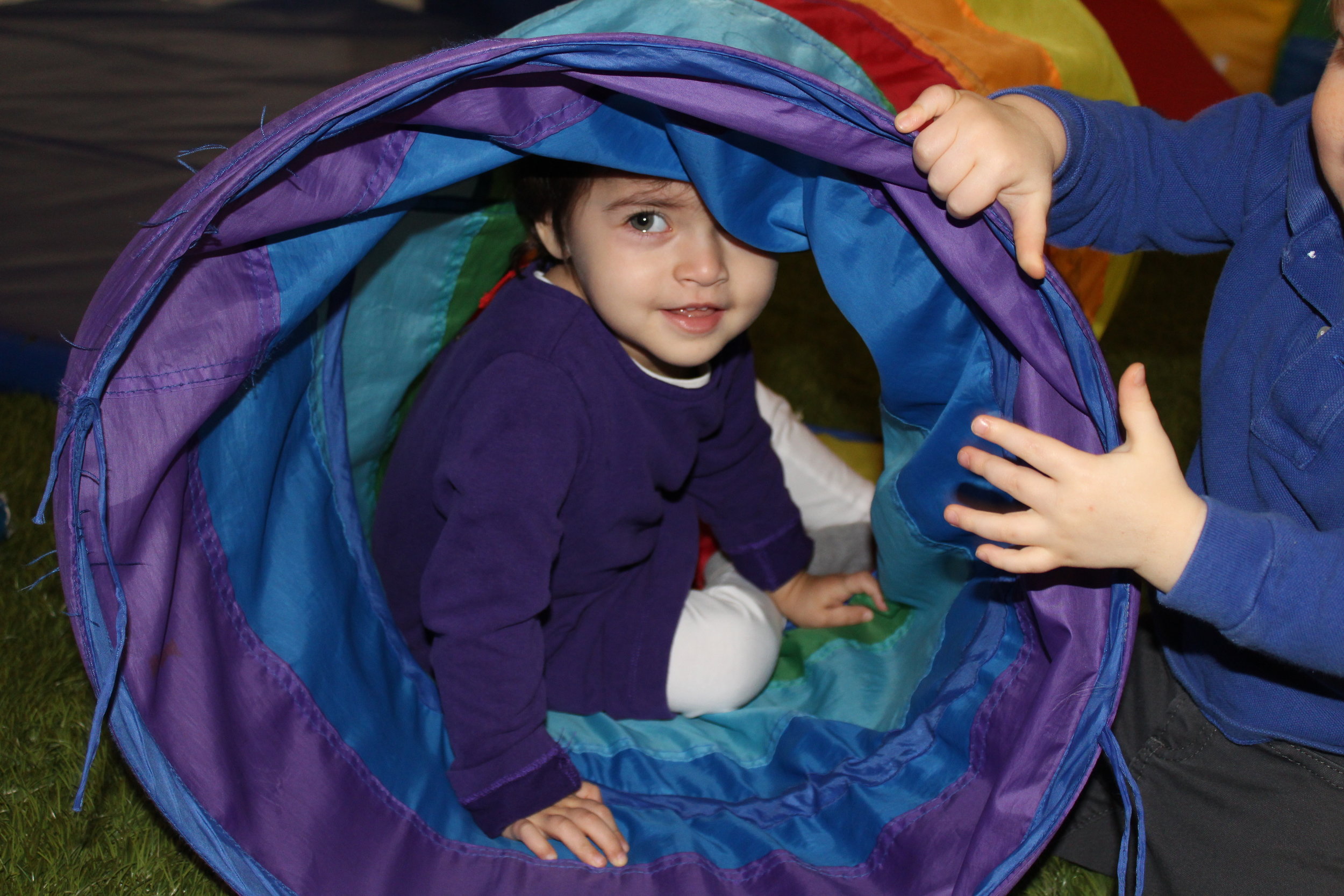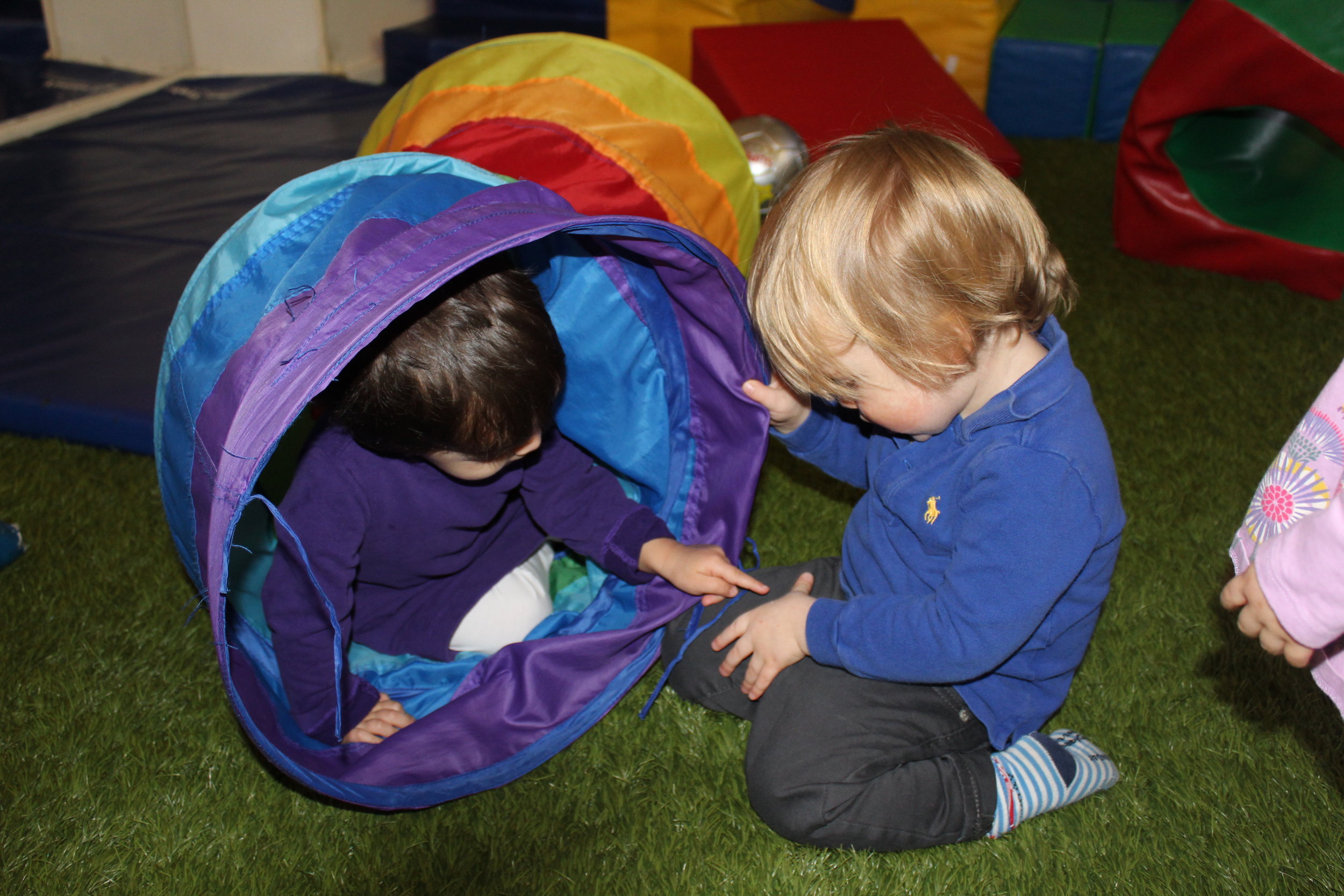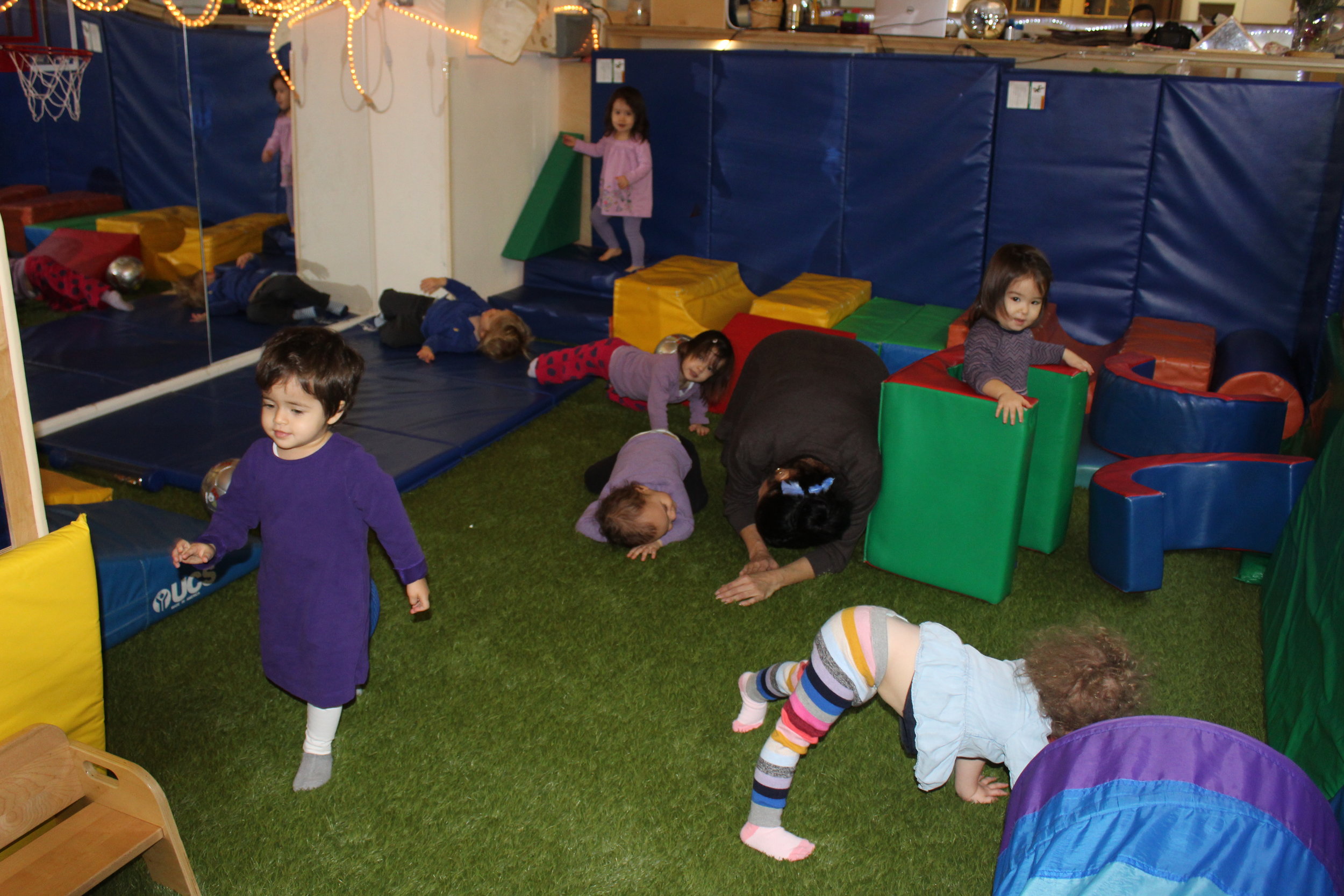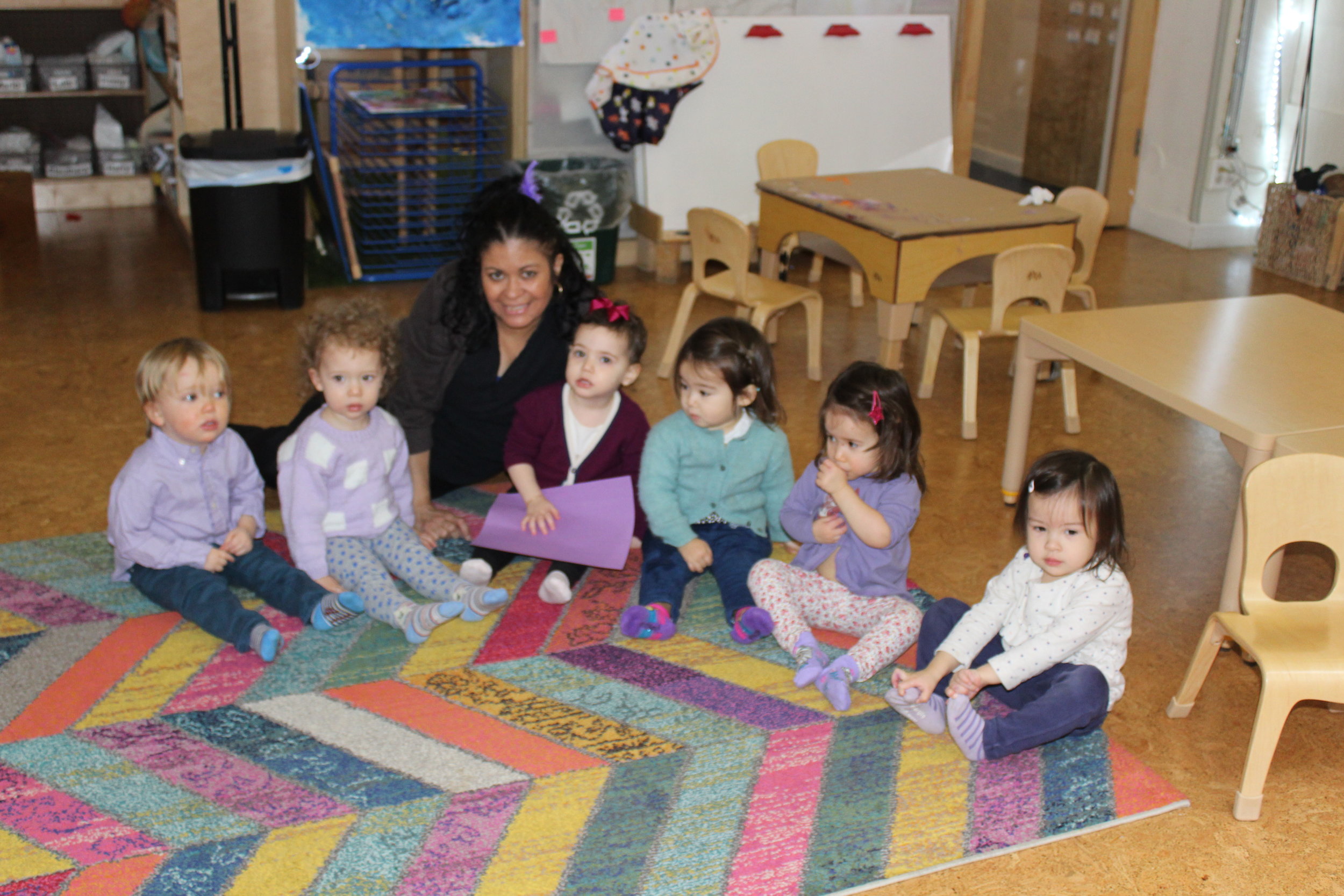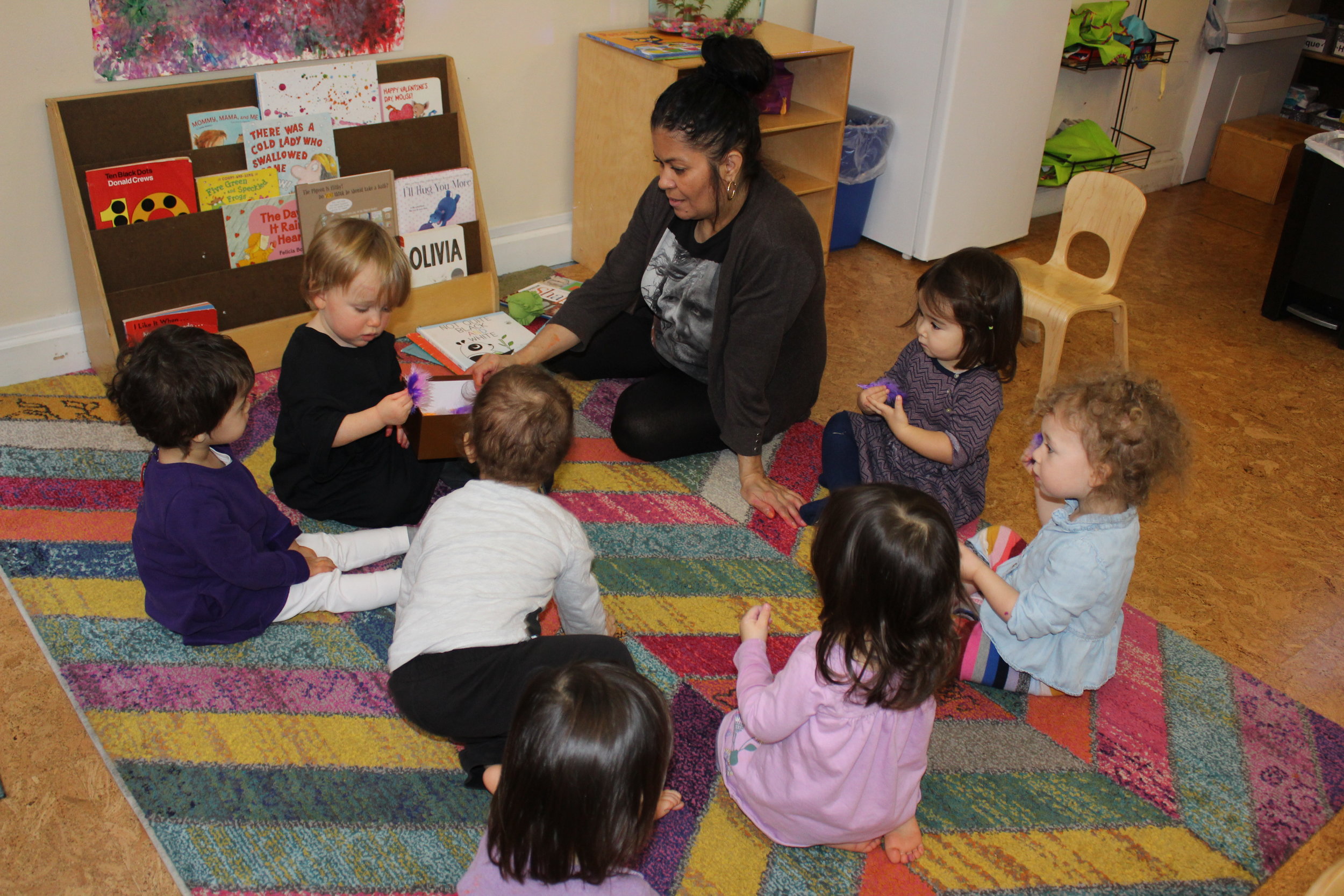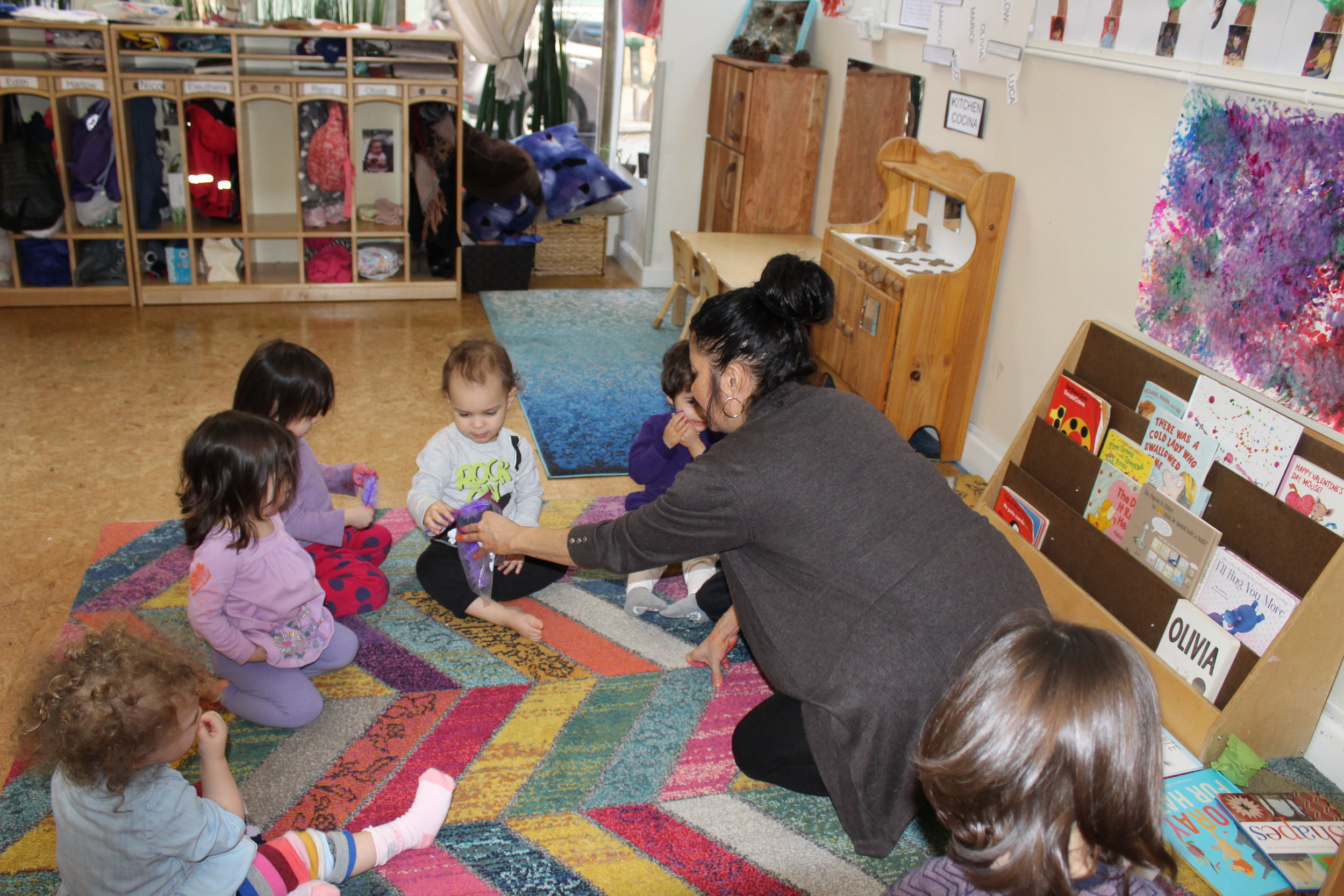Songs:
- Old Mc Donald
- Five Little Speckled Frogs
- Mr. Sun
- Where is Thumbkin?
- Where is Blue?
- Five Little Monkeys Jumping on the Bed
- A Rum Sum Sum
- Twinkle, Twinkle Little Star
- The Wheels on the Bus go Around, Around
- ABC
- Head and Shoulders, Knees and Toes
- There are seven days in a week...
- What the weather..... and many more..
Books:
- Pete the Cat and His Four Groovy Buttons
- Horray for Hats
- Pete the Cat, I Love My White Shoe
- Mother Goose Book- various short stories were read from the book..... and many more books were read.
Let's welcome our new student Madeline and her mom, Colleen to classroom 1B:
We celebrated Ellie's birthday, with her mom and dad. Happy Birthday Ellie!!
Ellie seems to enjoy giving her friends each a special birthday bag with goodies inside.
Gym:
During circle time we sing songs, do activities, read books and discuss how to take care of the materials in the classroom. As opened the book, and the children immediately said, "It's ripped!" I expressed how we must take care of the books and hugged them because they are important to our classroom. Also, we enjoy looking, listening, and sharing books with our friends.
Before lunch, we have a brief circle time. We sing one or two songs and then write the first letter of their names on an erasable board. They will gradually recognize and identify the letter. After articulating their letters, they will erase the letter and wash their hands to have lunch.
Science Experiment:
We did the Lava Lamp experiment again. We used a 2-liter plastic bottle, water, oil, watercolor, and alka-seltzer. These were the ingredients we used the first time. The measurements of water and oil are the differences in today's experiment. All the children had a turn in pouring the water and watercolor. The teacher added oil and the alka-seltzer. It is important for the children to take turns in all activities and share the space. Even though, not sharing is a typical behaviour of a toddler, it is essential to implement the concept of sharing as they mature. They know what things belong to them; however, they can not quite grasp that some things don't.
As your child matures, we continue to demonstrate turn-taking by providing language and examples, such as,"When friends play together, it's nice to take turns. " During turn-taking in pouring the liquids, Remy, turned to give Edith the cup as she finished pouring. Teacher: "Thank you, Remy, for passing the cup to Edith." Learning to share, take turns, and cooperate doesn't always happen by chance. We implement and remind our children. It's a social skill that needs practice and helping them understand as they work together.
Art:
As the children painted on both easels, they explored and experienced maneuvering their hand and arm differently. They projected unique techniques as they move their paintbrushes up, down, side to side, or circular motion. Their authentic art piece demonstrates their creativity and imagination. Their fine motor skills and cognitive development are integrated as they create.
Manipulatives:
Highlights of the week:
We Celebrated Mario's Birthday together with his family.
Reading Session and Circle time:
Ellie's mom was our special reader of the week!
The children are gradually learning to articulate, recognize and identify colors. There are many fun colors in the world around him/her. By incorporating learning into fun activities and then reinforcing our lessons in an everyday situation, we can teach our toddlers the colors with relative ease. We sing a song about colors, use different color dancing scarves (sensory) and bean bags (sensory). These different approaches allow them to absorb information in different ways. Today the children were wearing the color purple, another way we are learning about colors. I have noticed that on each approach, the children listen attentively as the colors are expressed, in English and now in Spanish.
Dramatic Play:
Symbolic or pretend play, are other names for dramatic play, is one of the ways that young children come to understand the world around them. As they interact with different people in their lives, they build the understanding that they will need to engage in pretend play. They use symbols and recount events or actions they have observed and experienced. Using symbols involves the ability to use one thing to represent or stand for something else. For example, children represent an object (a person or living being when they pretend to be a dog or a mother) or an event (when they crawl in a cardboard box and pretend to be driving a car). They always put a hat scarf and take a bag. As they say goodbye, the teachers asked, where are you going?
Remy and Edith: "Going to take the A train." Ellis: "Going to the subway."
Art:
- As Rheya mixes the colors red, white and green, she notices and yelled, "Purple!" Exploring different colors, whether they are primary or secondary colors, children are always curious and fascinated to feel, spread, mix, and squeeze the paint. Harry paint his hand and said, "My handprint!"
- Two-step project: The teacher used popsicles sticks to create snowflakes. The children seemed to enjoy painting and covering them using white tempera paint. Next week, they will use glue and white shredded paper, representing very own snowflake.
- Filter paper and watercolor paint activity: As the children gently painted the coffee filters with a thin brush, they noticed how the paint spread. They added two more colors, exploring and observing how the paint quickly moved and covered the paper. Some of the children looked amazed as the colors changed when they were combined. Two different methods were used to explore painting on coffee filter paper. I provided those choices to the children. Some preferred the paper opened on the tray and others folded in a cup. Then, they added the colors of their choice.
Manipulatives:
I welcome Grayson and his parents, Erin and John to classroom 1B. Grayson entered the classroom and observed the different centers, and explored the areas of his interests, puzzles! Soon, he will engage and participate in various activities.
Music:
Music allows children to express themselves in different ways. They might dance alone or with a peer, and sing along as they listen to the music, tap their feet or clap their hands to the rhythm. Music contributes to a rich sensory environment. Exposing children to a wide variety of sounds can benefit their learning process as they develop. Sharing songs that go along with simple hand motions, words, or dance moves, like the “Itsy Bitsy Spider,” The Wheels on the Bus “or” Two Little Blackbirds benefit children's development. As the children were listening to music, Rheya, Edith, and Olivia spontaneously held hands and began to dance.
Spanish:
Gym:
Sensory:
Exploring the color purple, the children wore purple Wednesday and Thursday; this is a way for them to learn and identify colors.

